STOP ignoring mini PCs! Today's your last chance to save on a bagel-sized Windows PC during Prime Day — YES, it runs my games
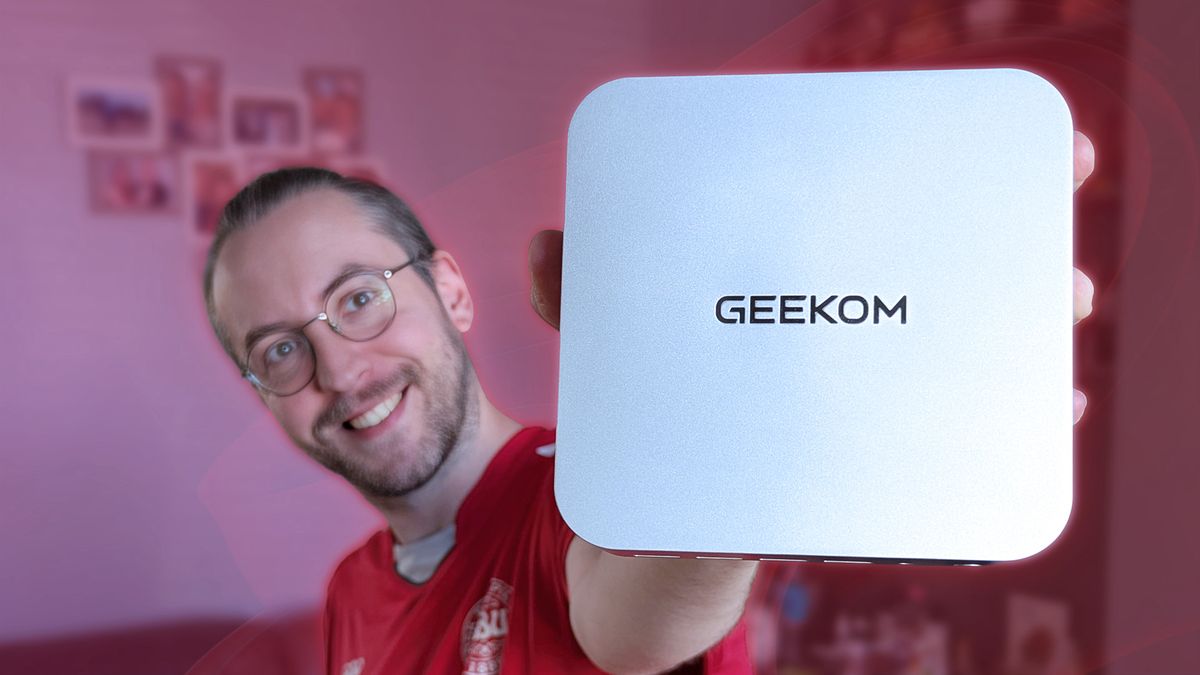
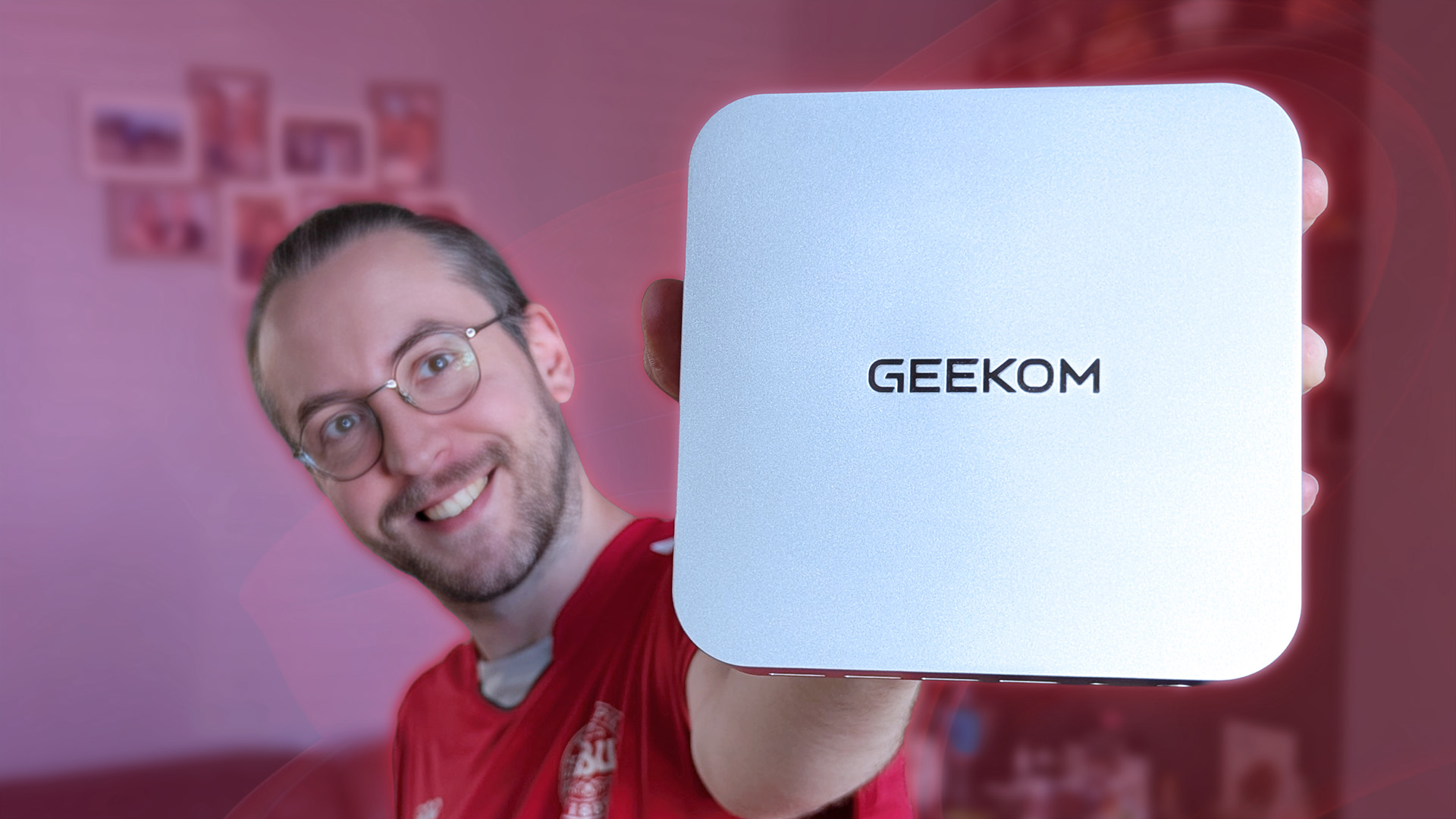
© Ben Wilson | Windows Central


© Ben Wilson | Windows Central

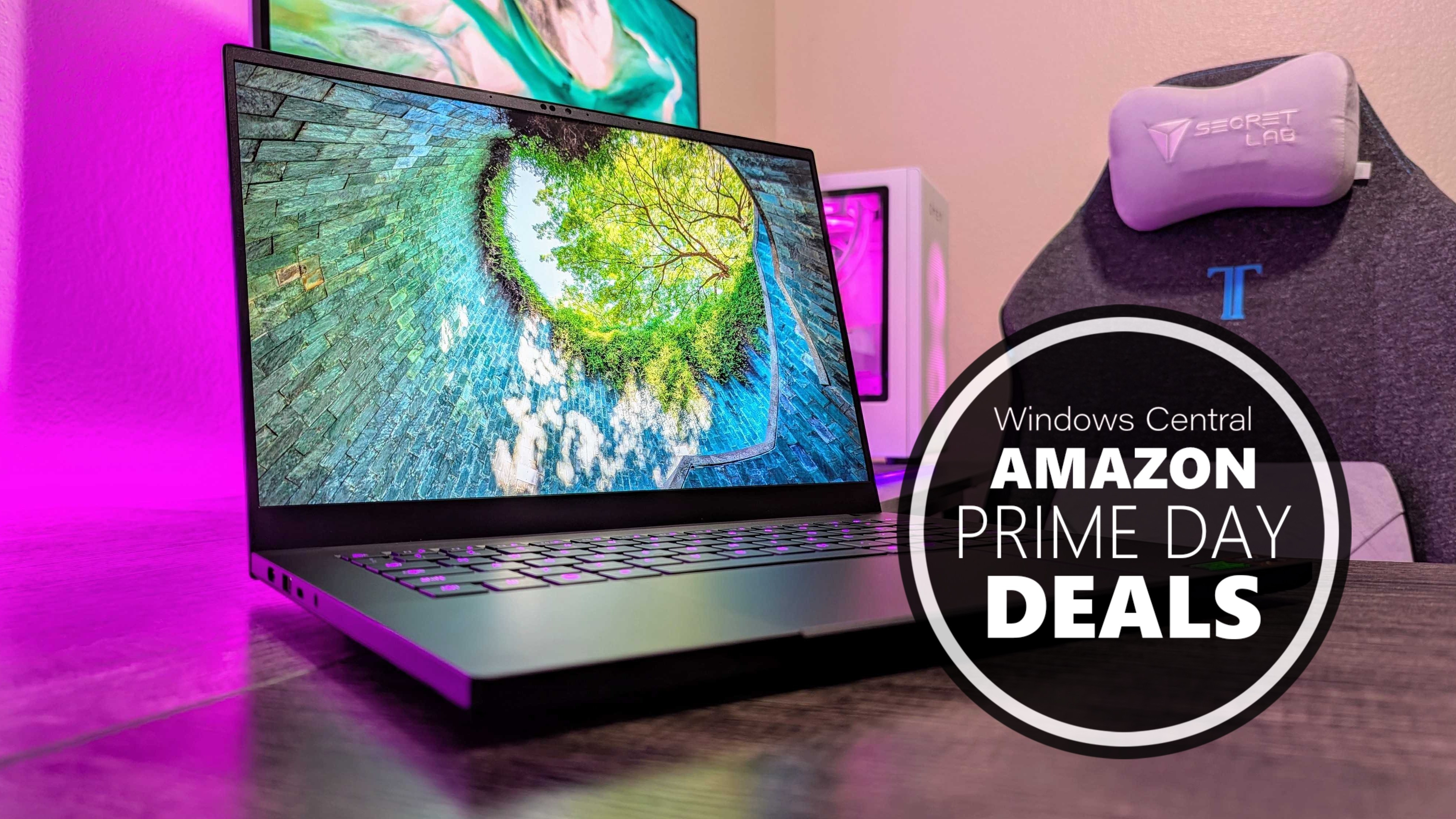
© Windows Central
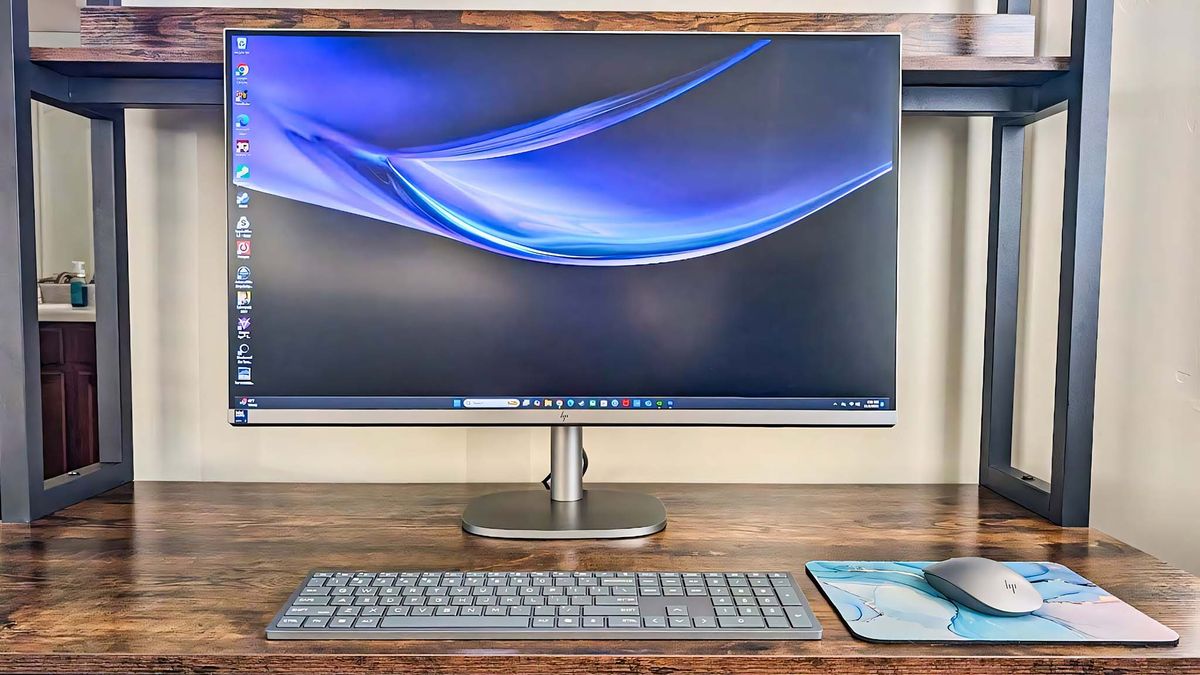
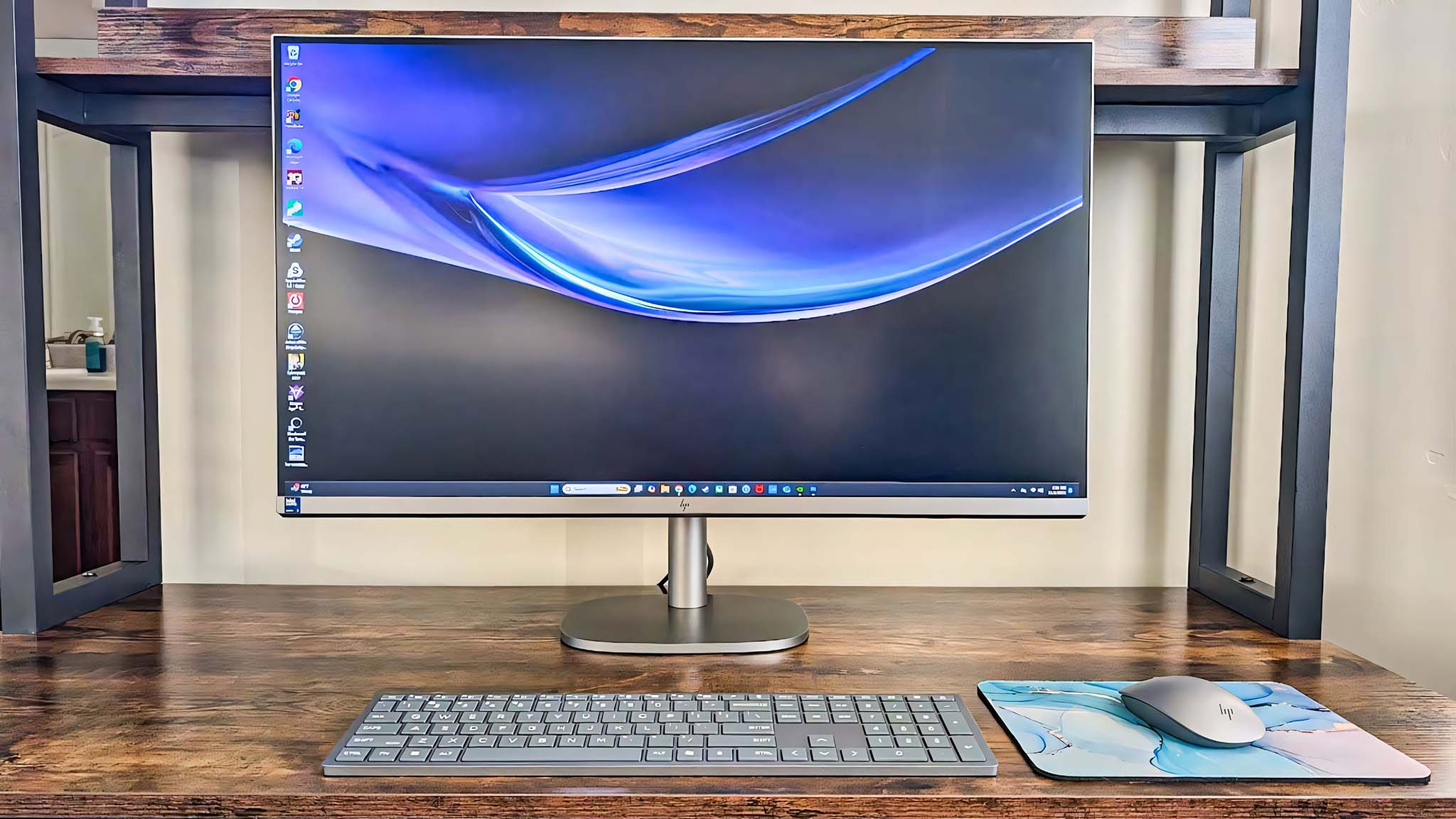
© Rebecca Spear / Windows Central


© Windows Central | Zachary Boddy
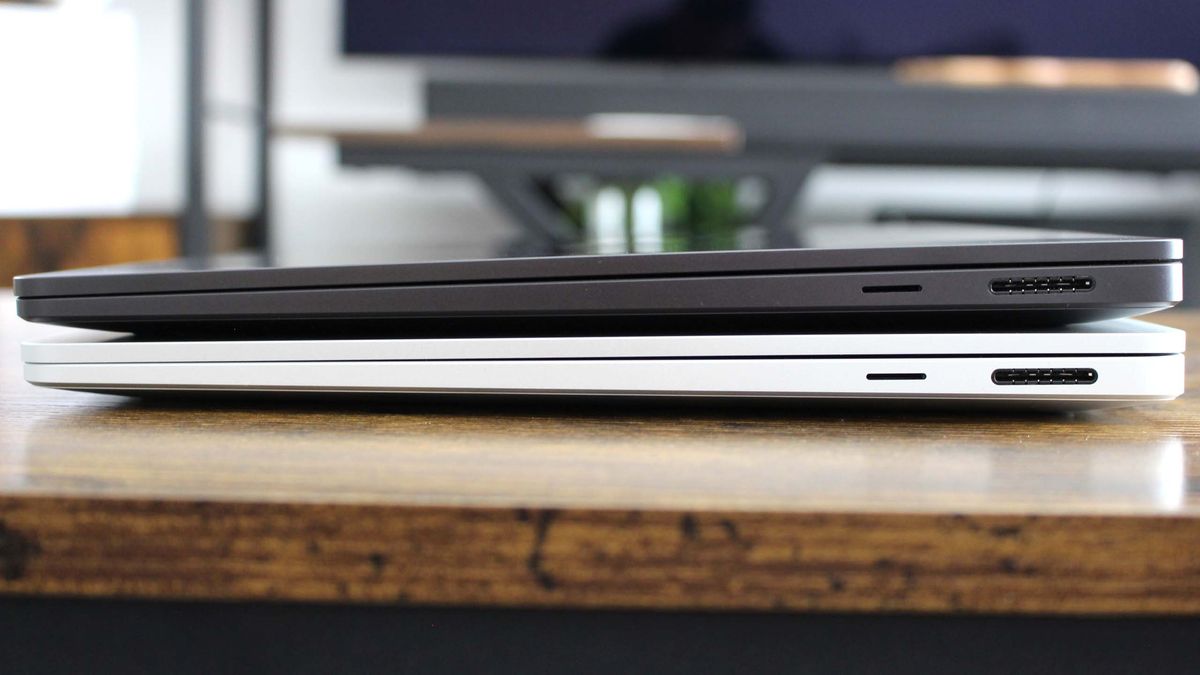
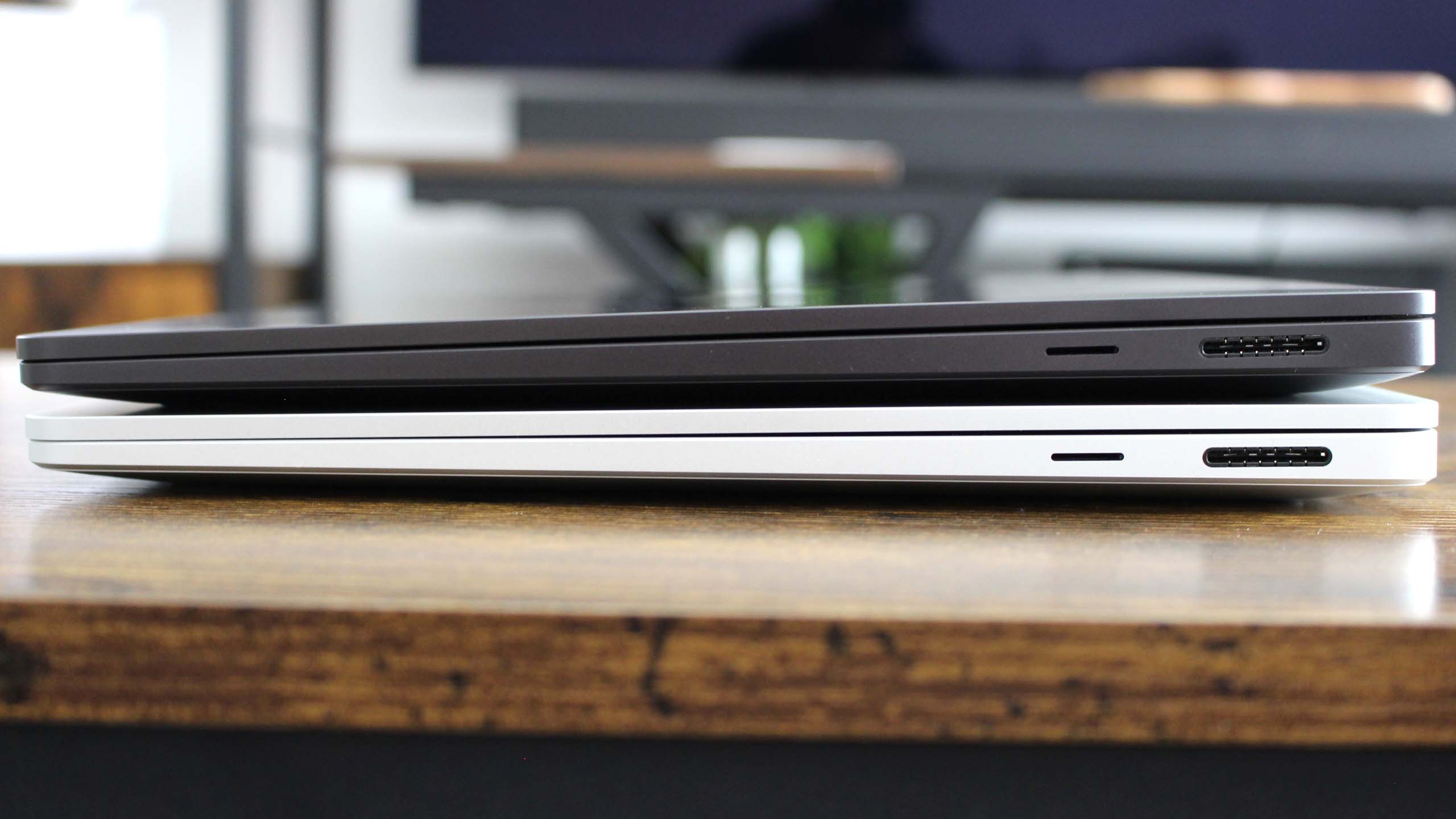
© Windows Central
The demand for high-performance, multi-functional NAS systems has never been higher, as users increasingly expect far more than basic file storage from their hardware. Today’s workloads often include virtualization, AI-assisted operations, multi-tiered storage strategies, and high-speed, low-latency networking—demands that blur the line between a traditional NAS and a fully-fledged home server. In response to these needs, two closely matched contenders have emerged in the prosumer and power-user space: the Aoostar WTR Max and the Minisforum N5 series, which consists of both the more affordable standard N5 and the higher-spec N5 Pro. These devices, released in mid-2025, share some common DNA—both are bare-metal NAS platforms that let you install your own operating system and tailor your setup to your specific use case—but they diverge significantly in how they balance compute power, storage density, connectivity options, noise and power efficiency, and overall value.
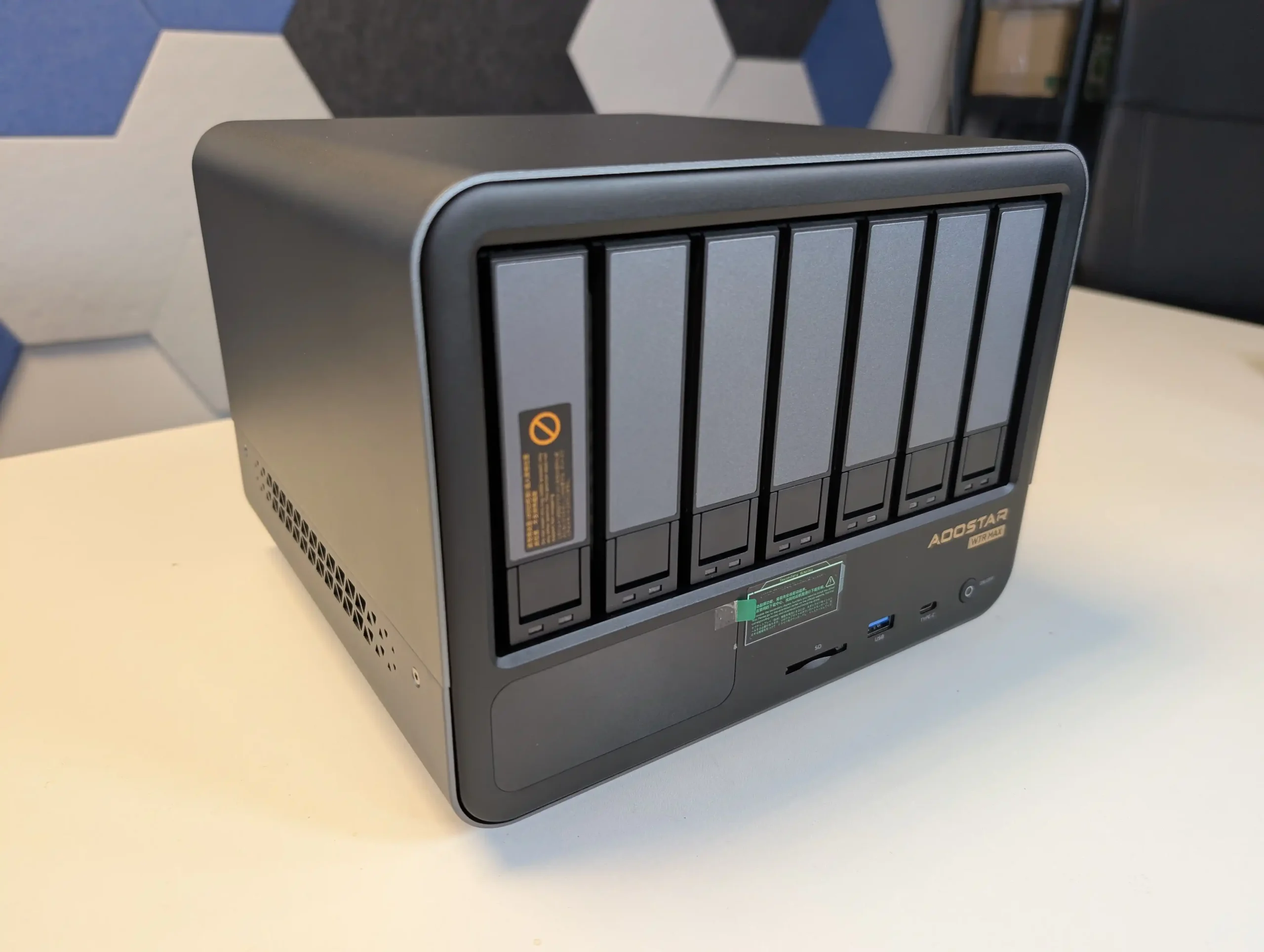 |
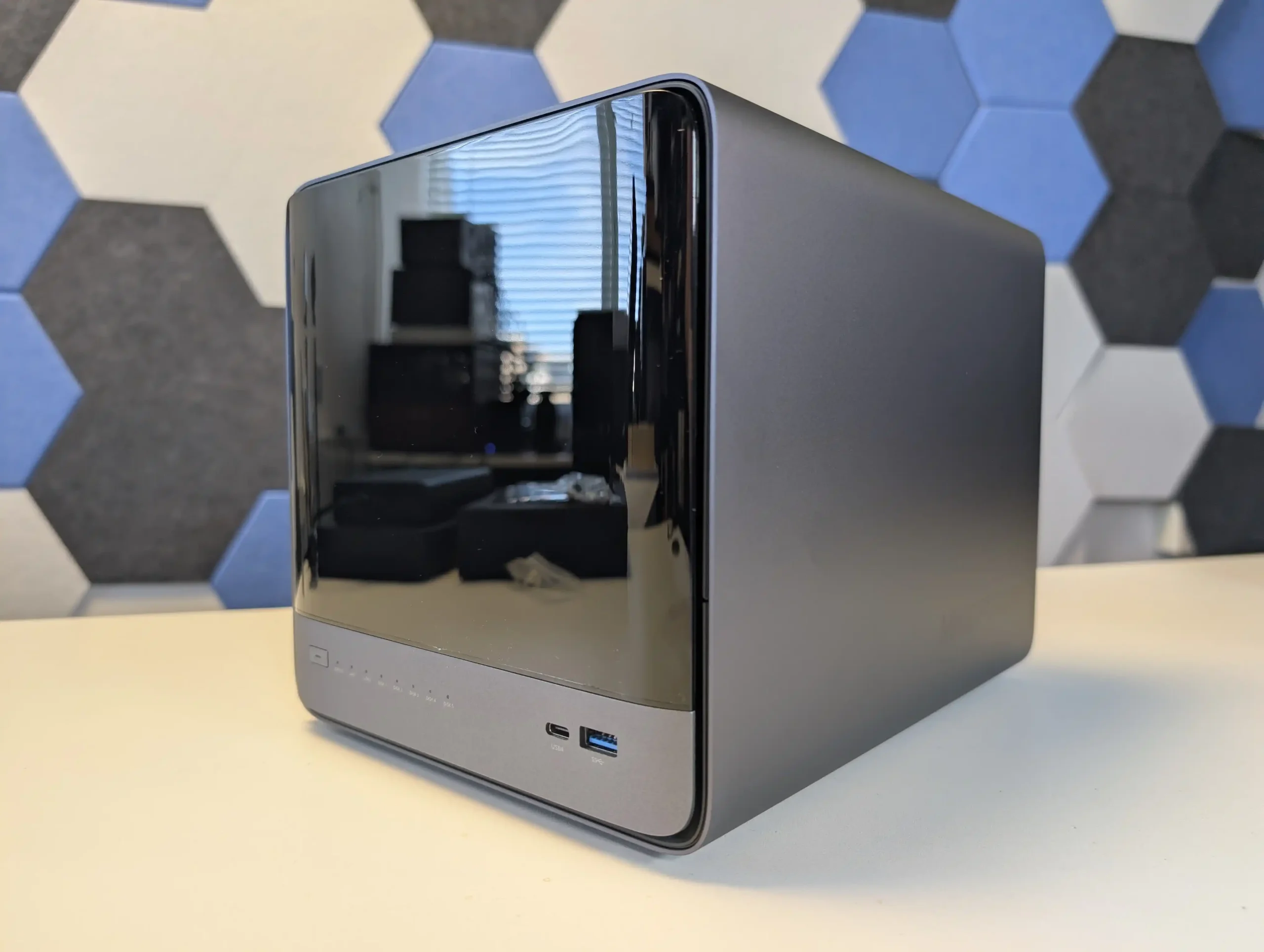 |
||
| Check Amazon for the WTR Pro MAX | Check AliExpress for the WTR Pro MAX | Check Amazon for the Minisforum N5 | Check AliExpress for the Minisforum N5 |
In this article we provide a detailed, category-by-category comparison of these systems based on hands-on testing and real-world workloads. Key factors like physical design, internal architecture, storage configuration, CPU and memory performance, external connectivity, and power and noise profiles are all assessed in depth. We also consider important use case distinctions, such as suitability for 24/7 enterprise-grade uptime, AI model hosting, or quiet home use. Whether you’re looking to build a dense storage appliance, a virtualized host for multiple VMs, a locally deployed AI engine, or simply a robust and scalable home NAS, this analysis aims to clarify which of these two (or three, when factoring in the standard N5) offers the best fit. As the boundaries between NAS and full server hardware continue to blur, understanding these subtle trade-offs will help you make a more informed investment for your own specific workload and budget.
Written Review of the Minisforum N5 Pro NAS – HERE
YouTube Review of the Minisforum N5 Pro NAS – HERE
Written Review of the Aoostar WTR Max NAS – HERE
YouTube Review of the Aoostar WTR Max NAS – HERE
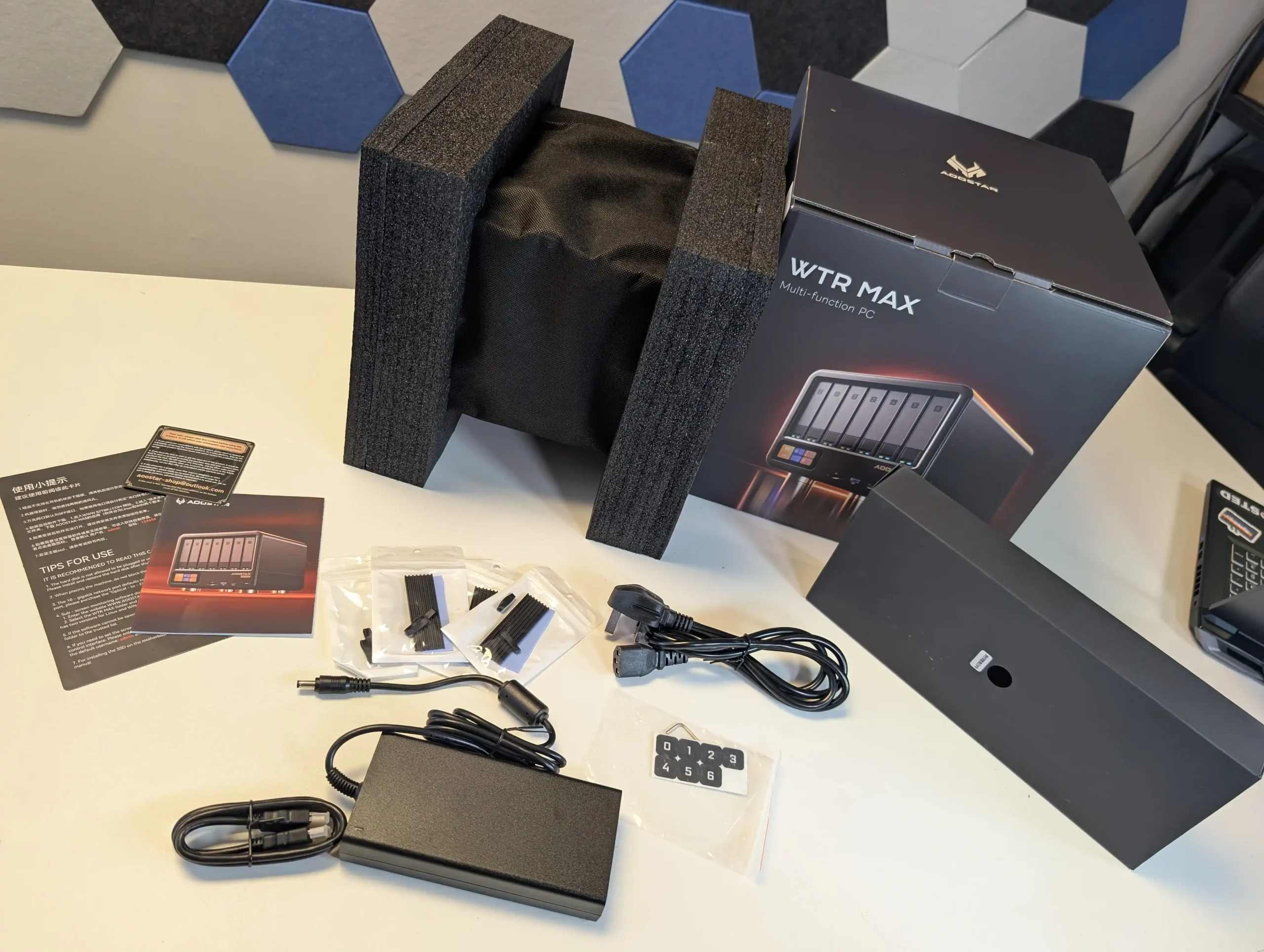 |
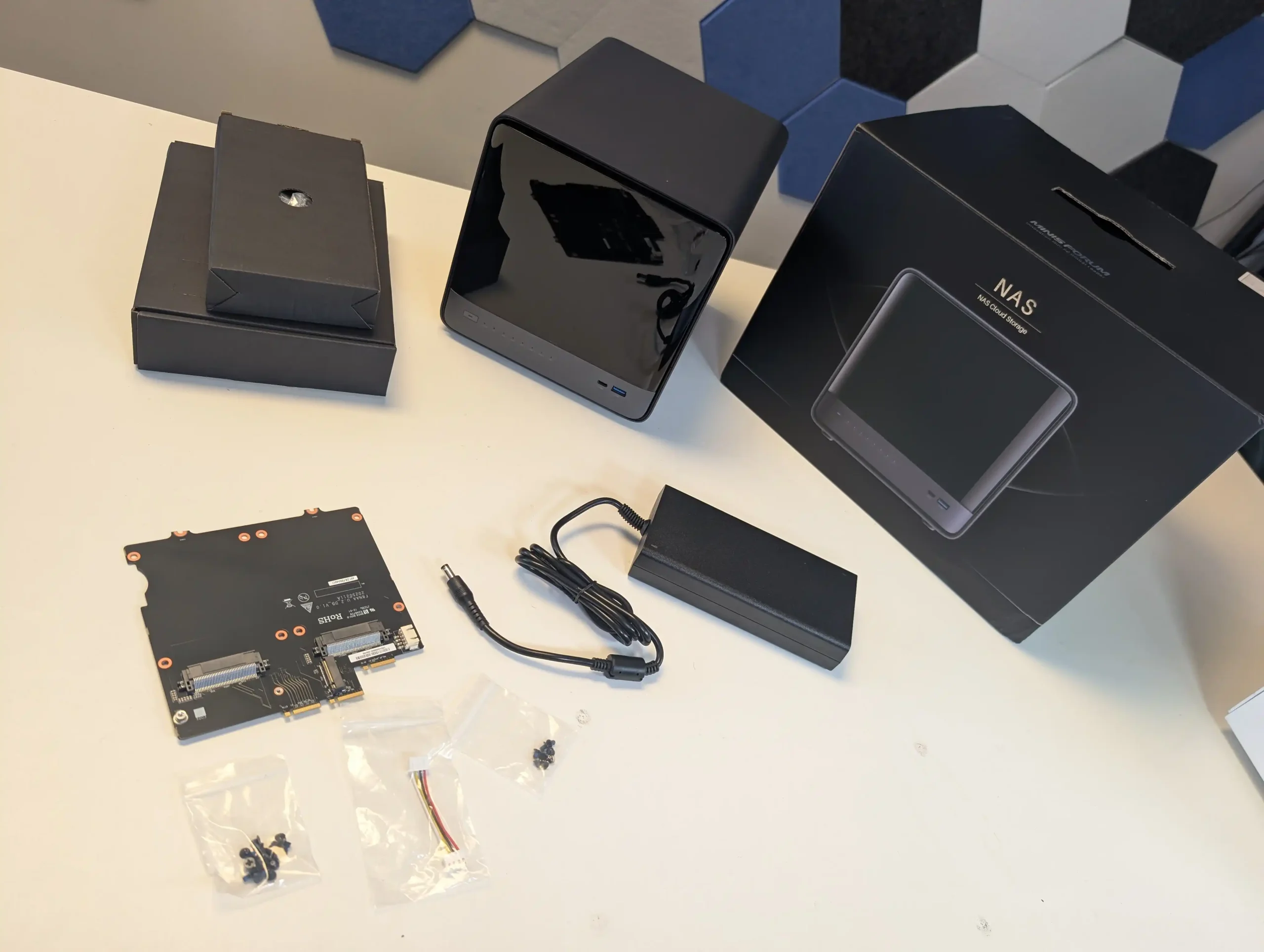 |
When examining the price points of the Aoostar WTR Max and the Minisforum N5 series, it becomes clear that each brand has intentionally targeted slightly different segments of the advanced NAS and home-server market. The Aoostar WTR Max launches at $699 in a barebone configuration, which includes the chassis, preinstalled AMD Ryzen 7 PRO 8845HS CPU, external PSU, dual 10GbE SFP+ networking, and a front LCD panel. Like its competitor, it does not include RAM or additional storage at this price.
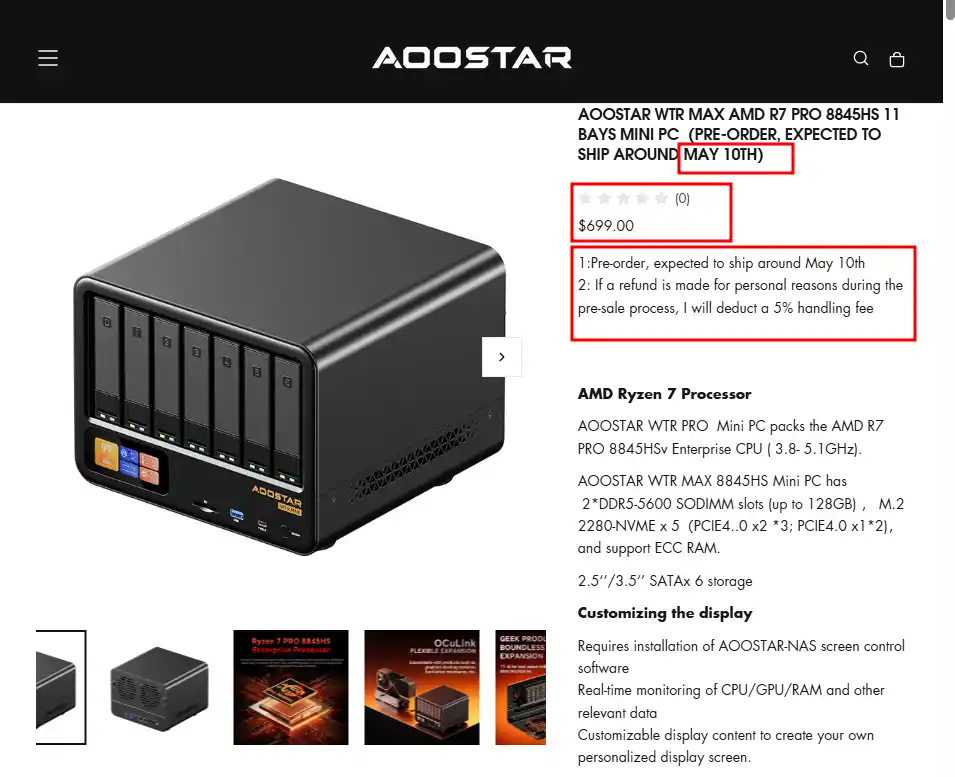 |
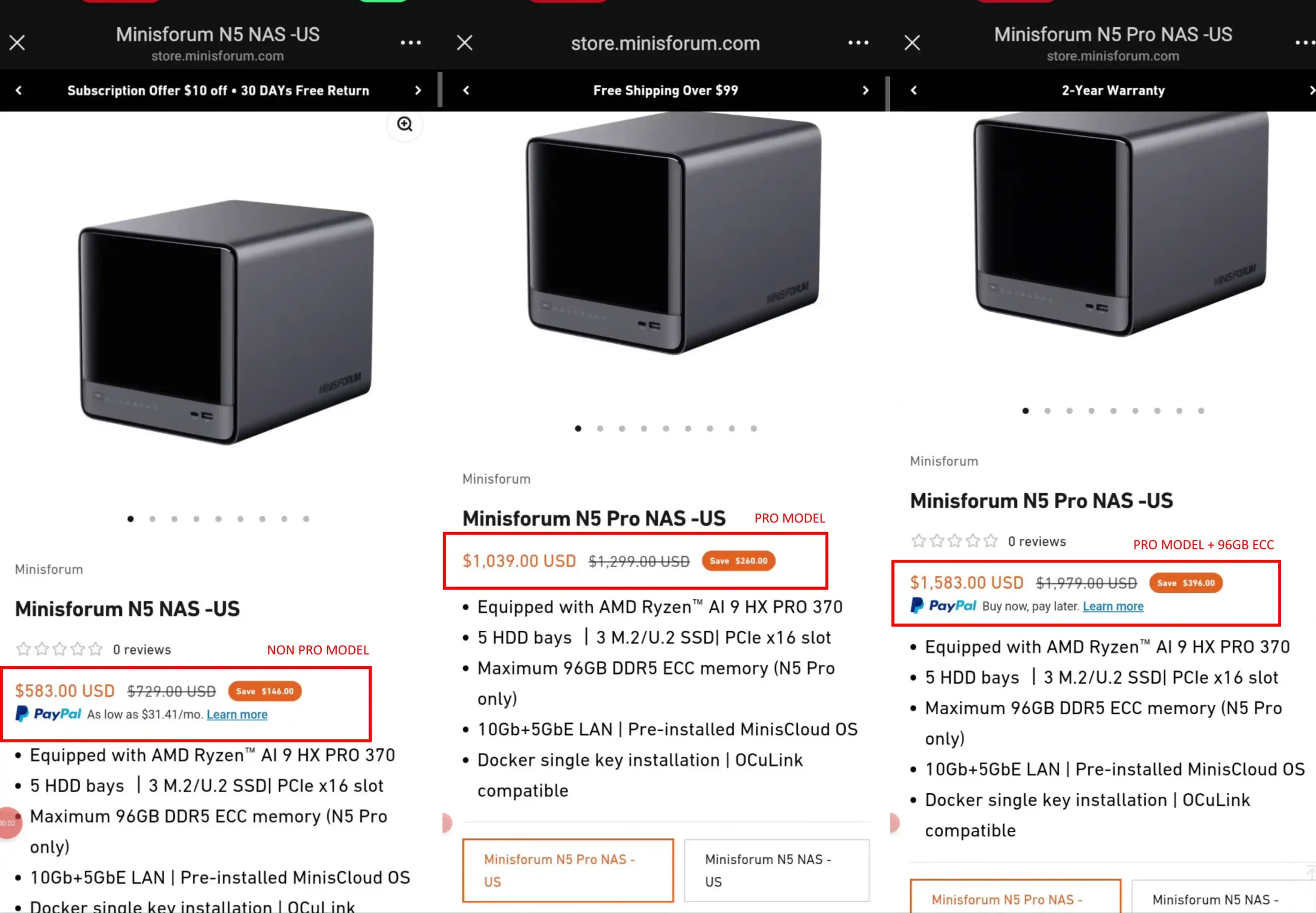 |
By comparison, the Minisforum N5 standard model enters at a lower price point of $583 in a similarly barebone configuration—also lacking RAM and user storage—but it does not include ECC memory support or a PRO-class CPU, which are key differences. The premium-tier Minisforum N5 Pro sits at a much higher entry price of $1,039, still barebone but featuring a far more capable Ryzen AI 9 HX PRO 370 CPU and ECC support. Users who prefer to have memory preinstalled can opt for a top-tier N5 Pro bundle, which includes 96GB ECC RAM and raises the total cost to $1,583.
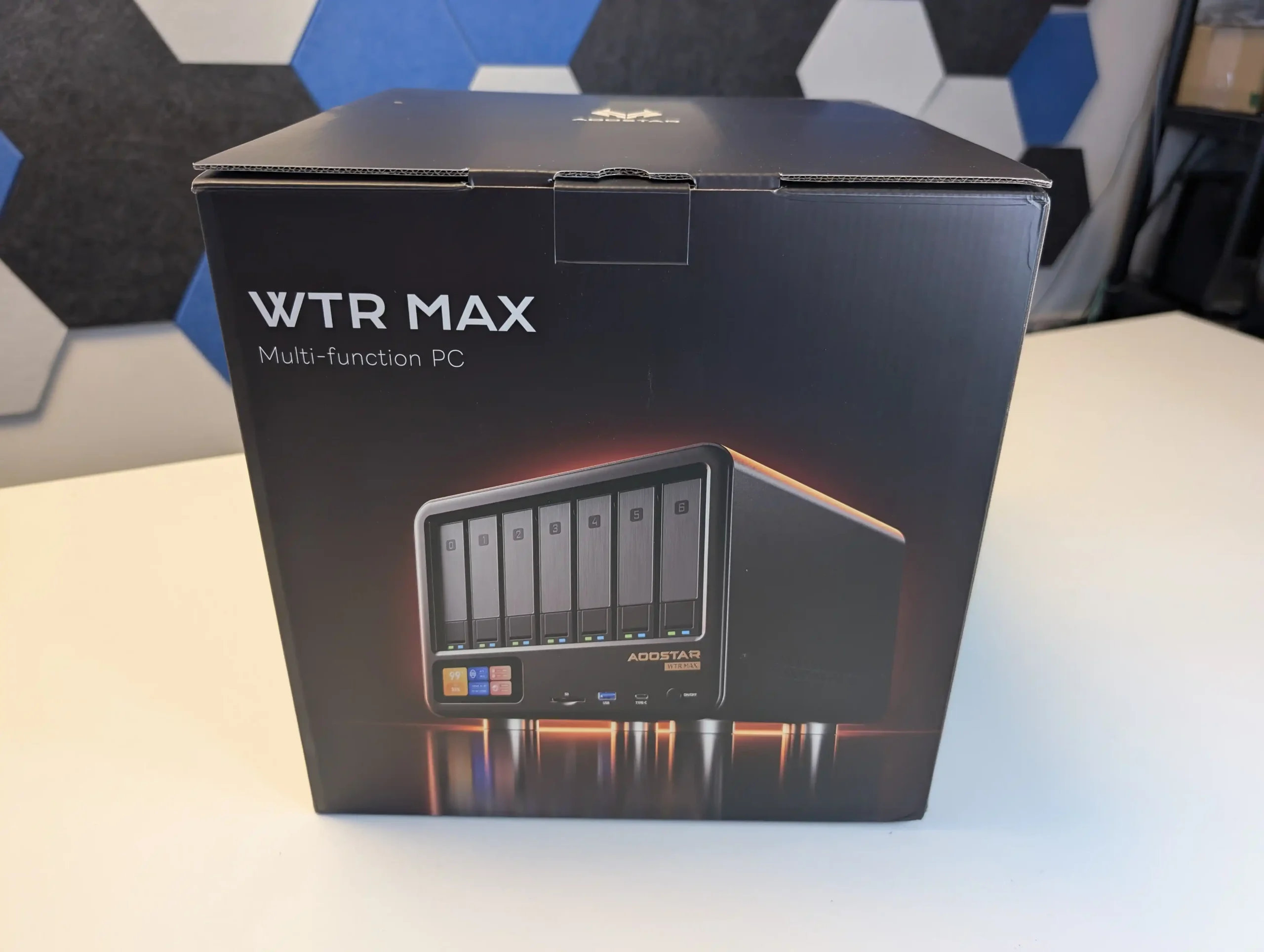 |
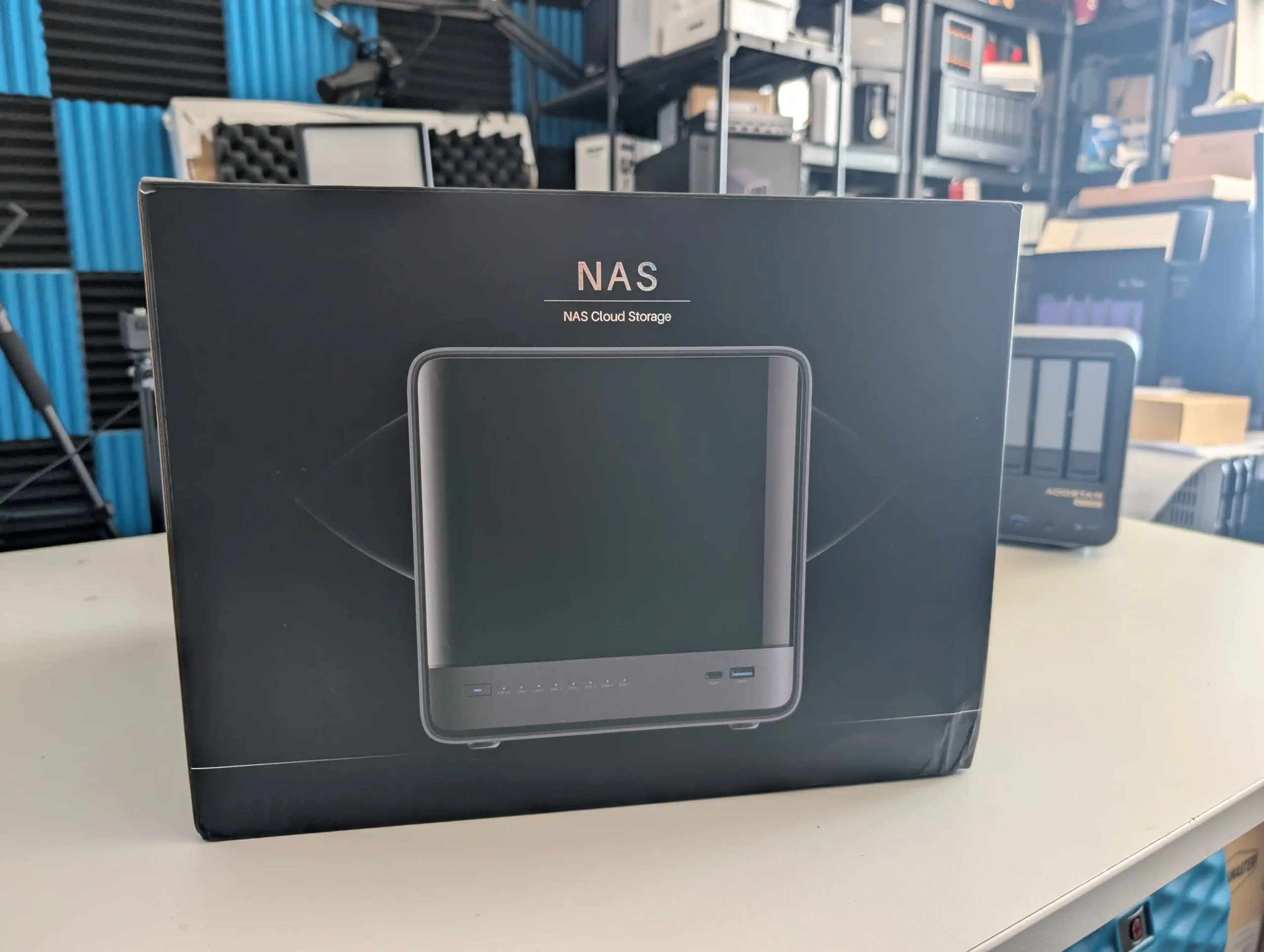 |
| Aspect | Aoostar WTR Max | Minisforum N5 (Standard) | Minisforum N5 Pro | Best & Why/Note |
|---|---|---|---|---|
| Base Price (barebone) | $699 | $583 | $1039 | Aoostar WTR Max — cheapest base option |
| Optional ECC RAM | ✓ (supports ECC) | ✗ | ✓ | N5 Pro — ECC support only on Pro and Aoostar |
Relative to its competitors, the Aoostar WTR Max occupies a deliberate middle ground—costing more than the standard N5 but significantly less than the N5 Pro. This makes it a particularly appealing option for users who want enterprise-relevant features like ECC memory support and a balanced CPU without committing to the premium pricing of the Pro. The standard N5 clearly appeals to budget-conscious buyers who are willing to forgo ECC support and settle for a mid-tier CPU to save over $100 compared to the Aoostar.
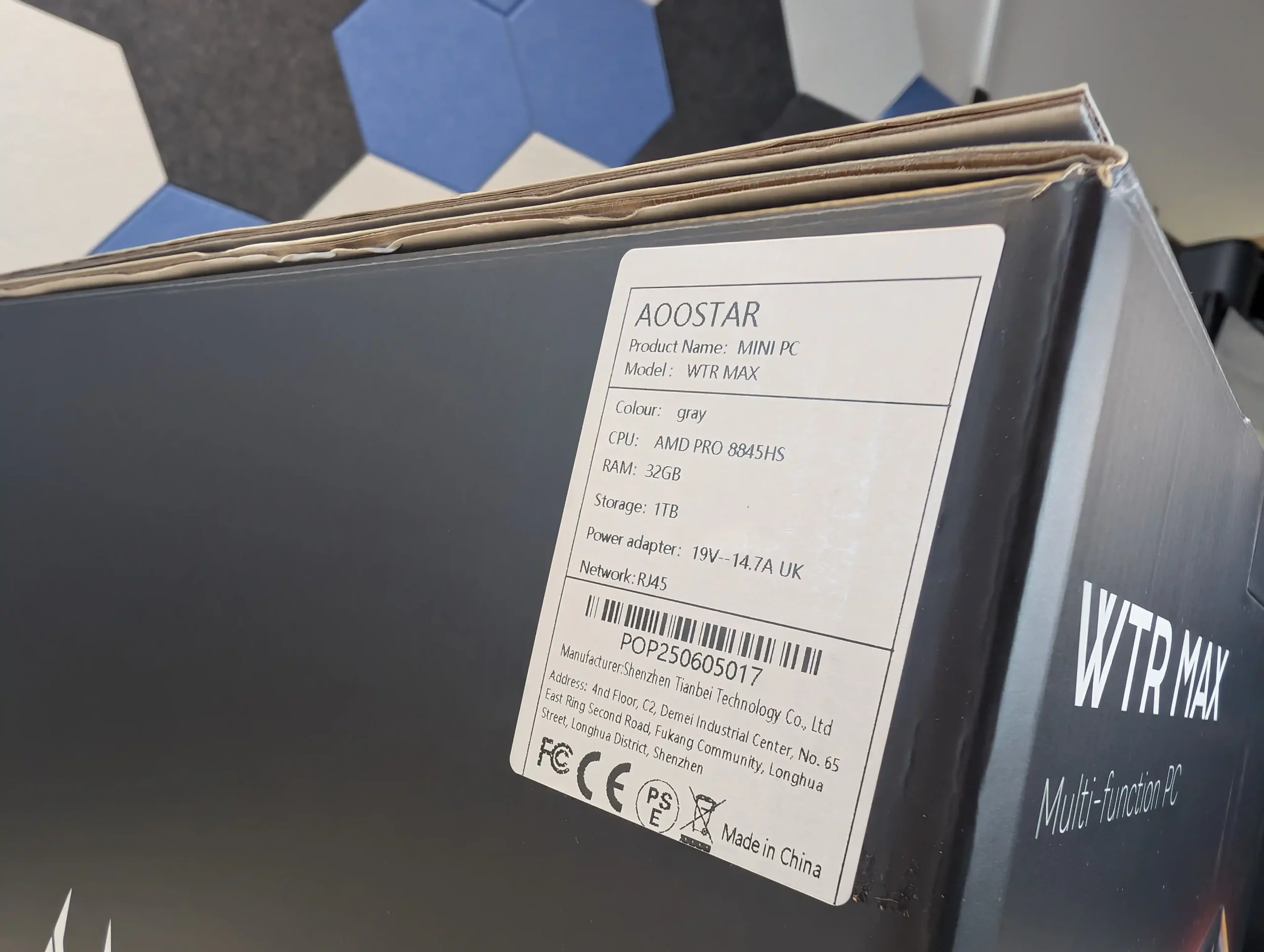 |
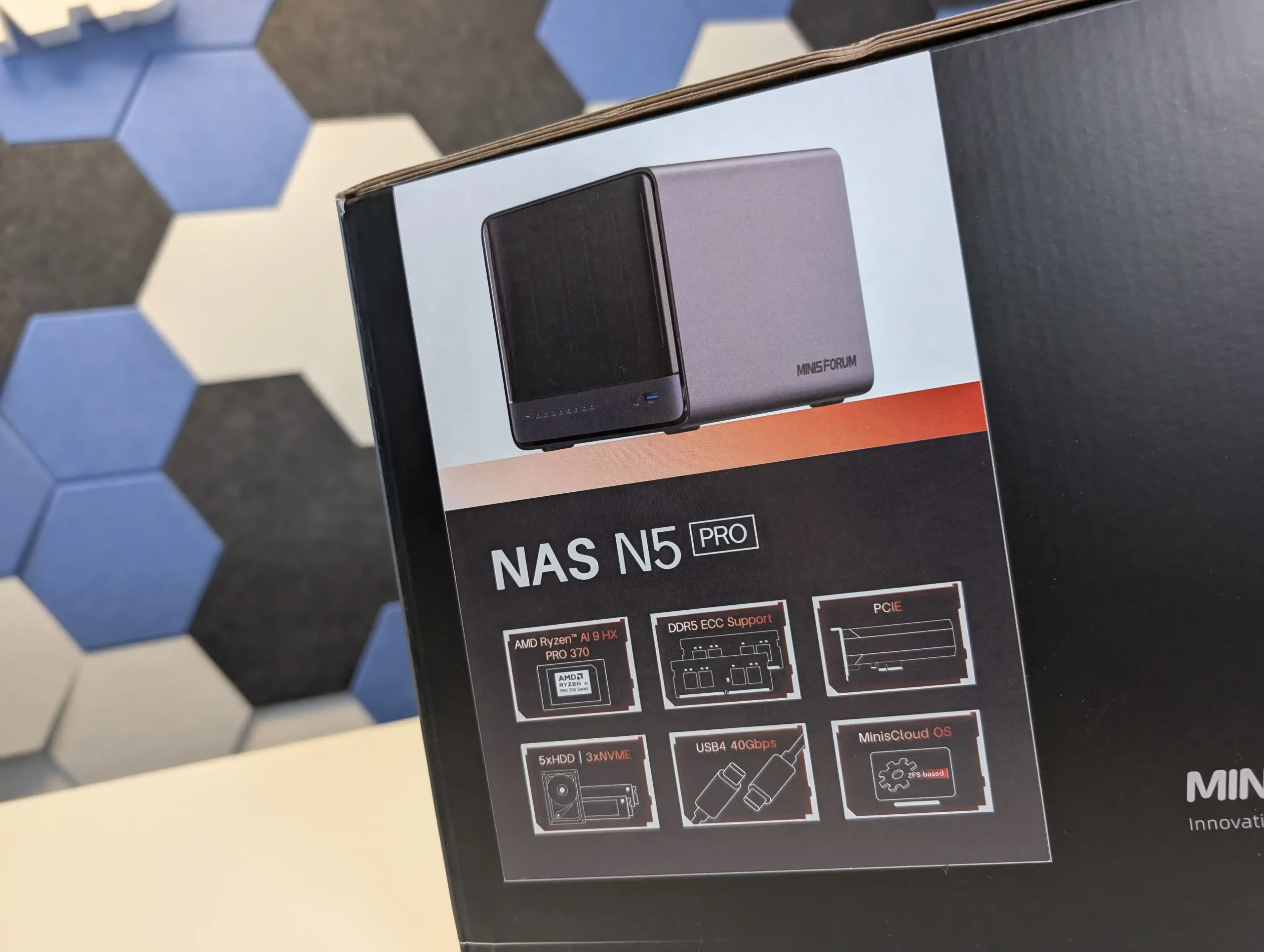 |
Conversely, the N5 Pro is positioned for buyers who prioritize maximum multi-core performance, AI acceleration, and ECC memory—even if that means paying nearly 50% more than the Aoostar. For users who value the best balance of price and advanced functionality—including high storage density, good networking capabilities, and ECC support—the Aoostar WTR Max arguably delivers the most well-rounded value proposition among the three systems, particularly for general-purpose NAS or mixed-use home lab scenarios.
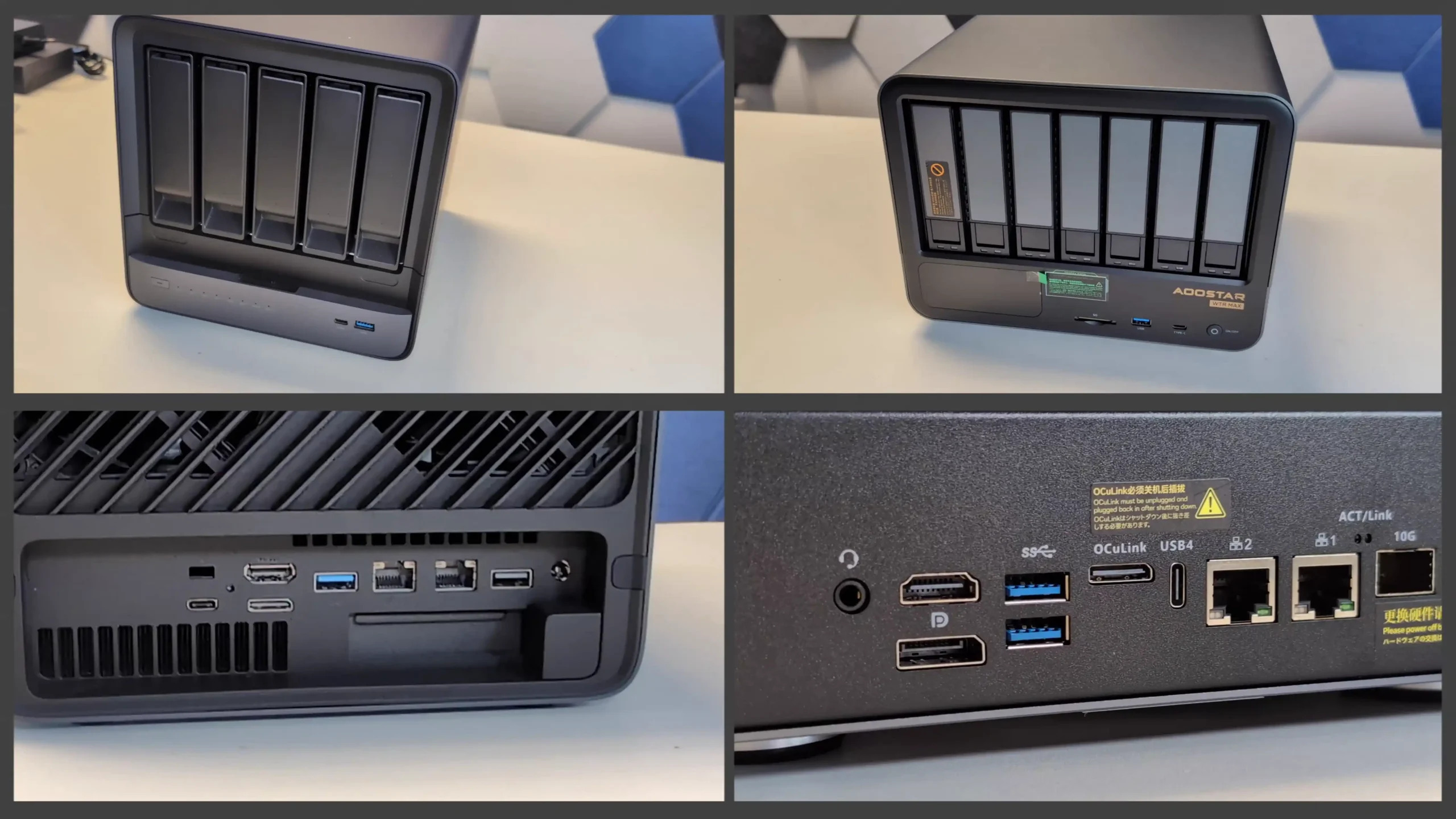
Both the Aoostar WTR Max and the Minisforum N5 series feature compact, all-metal chassis designs that prioritize serviceability, efficient internal space utilization, and professional-grade durability. The Aoostar WTR Max adopts a slightly larger rectangular footprint, accommodating six SATA bays, a dedicated seventh tray slot for up to four M.2 NVMe SSDs, and an integrated LCD display on the front panel for customizable real-time monitoring of system metrics such as temperature and network activity.
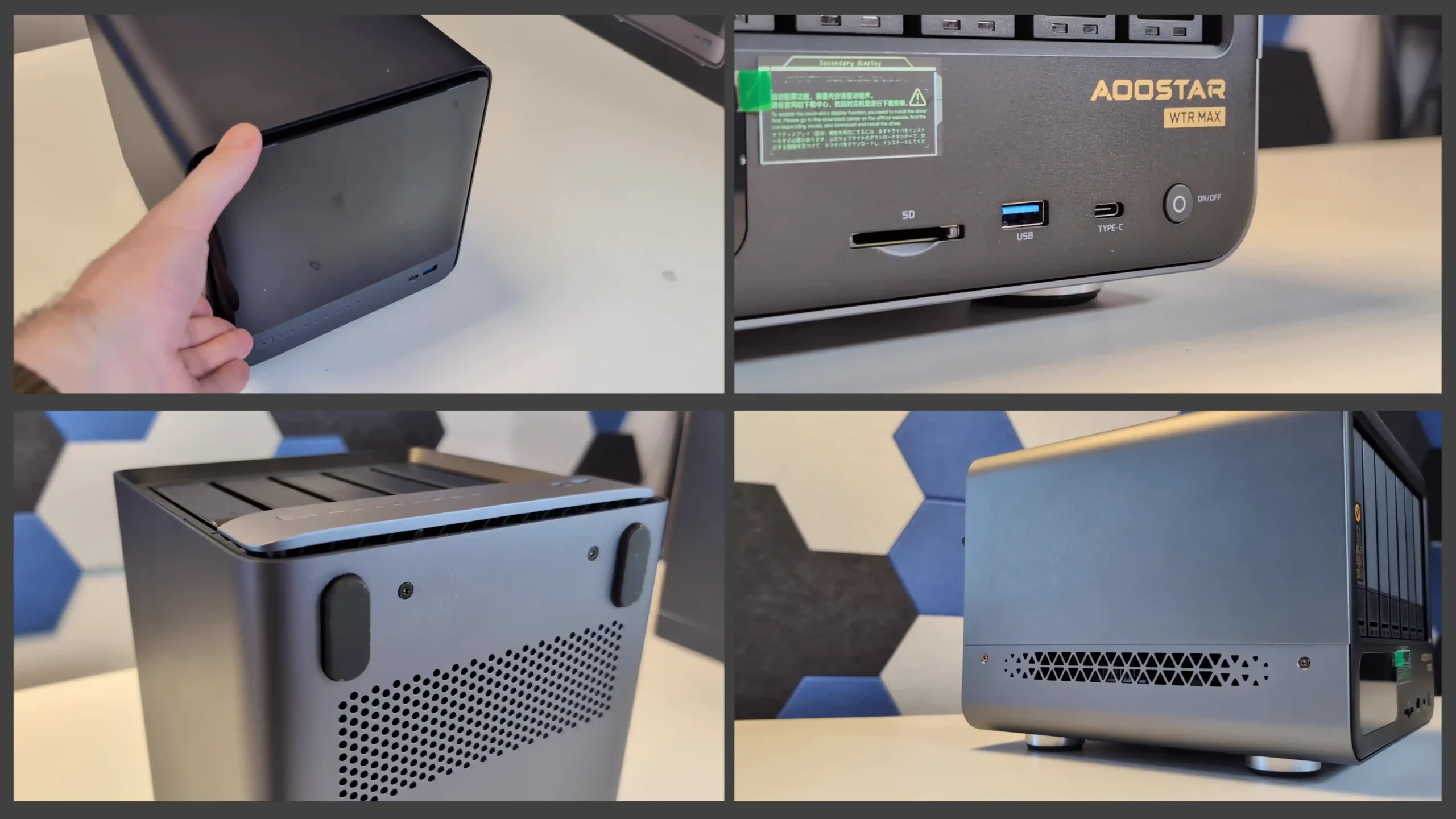
Ventilation on the Aoostar is extensive, with intake vents at the bottom, perforated panels on both sides, and dual rear-mounted exhaust fans drawing heat from the drive bays and CPU area. A vapor chamber heat spreader and a dedicated bottom-mounted cooling fan help distribute and evacuate thermal load evenly across internal components. The Minisforum N5 and N5 Pro, meanwhile, share a more compact and minimalist chassis with a slightly smaller footprint and a slide-out drive cage mechanism, making internal access and servicing more straightforward. Both Minisforum models include five SATA bays, a versatile three-slot M.2/U.2 arrangement, and a clean brushed-metal exterior that avoids visual distractions by omitting a front-facing display.
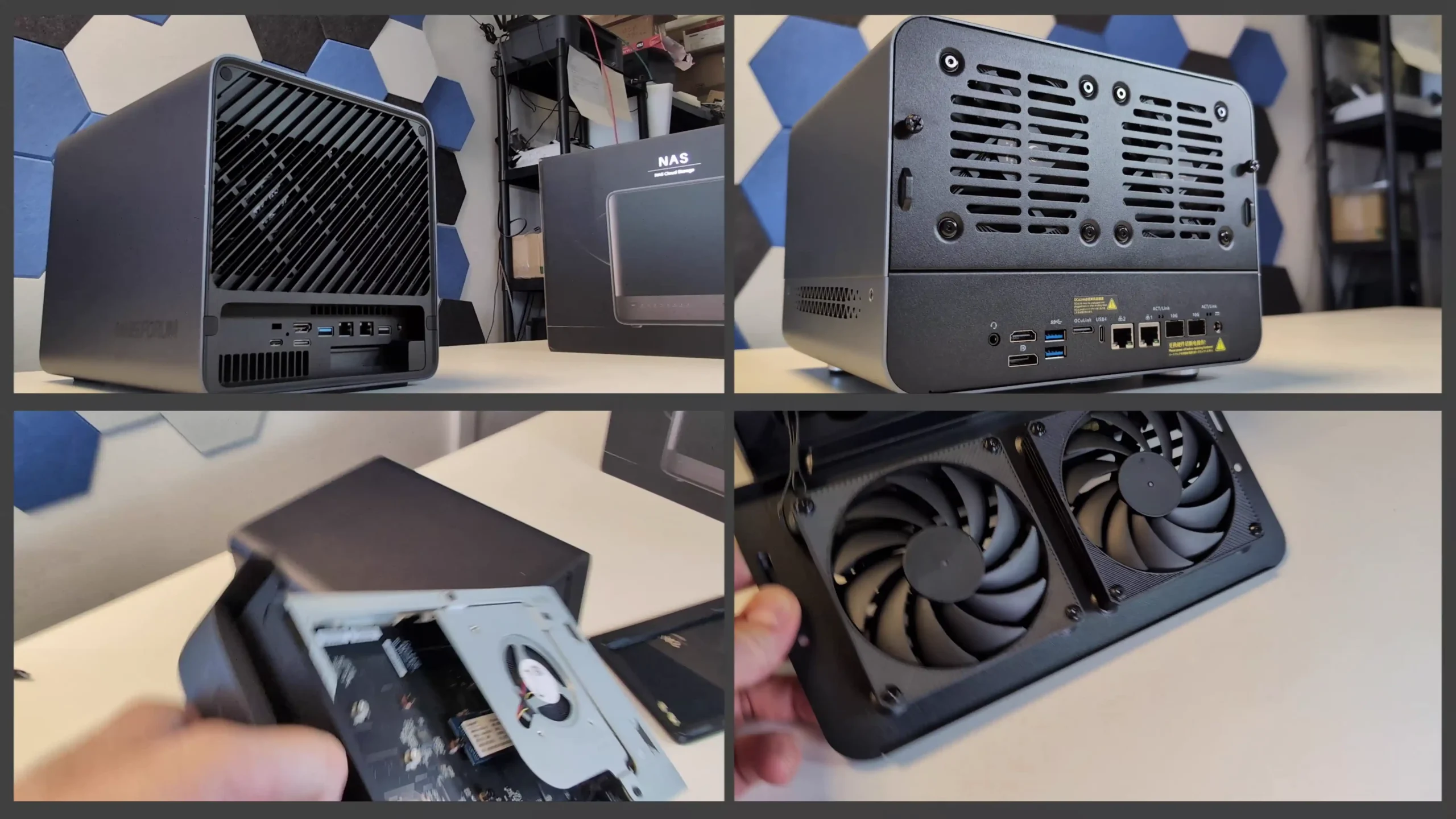
| Aspect | Aoostar WTR Max | Minisforum N5 (Standard) | Minisforum N5 Pro | Best & Why/Note |
|---|---|---|---|---|
| Chassis Material | Full Metal | Full Metal | Full Metal | Tie — similar high-quality builds |
| LCD Display | ✓ | ✗ | ✗ | Aoostar WTR Max — includes customizable LCD |
| Slide-Out Drive Cage | ✗ | ✓ | ✓ | N5/N5 Pro — easier drive servicing |
| Compact Size (approx.) | Compact (~same footprint) | Compact (~same footprint) | Compact (~same footprint) | Tie — equally compact and serviceable |
Where the Aoostar WTR Max shines is in raw storage density and front-panel functionality, with one additional SATA bay over the Minisforum design, plus its customizable LCD display for at-a-glance system information. Its more aggressive ventilation strategy—with side vents and larger intake paths—also suggests it can move slightly more air through densely packed storage configurations. However, the Minisforum chassis demonstrates superior internal organization, with its slide-out cage allowing faster upgrades and maintenance, and better separation of airflow channels for drives and CPU cooling.
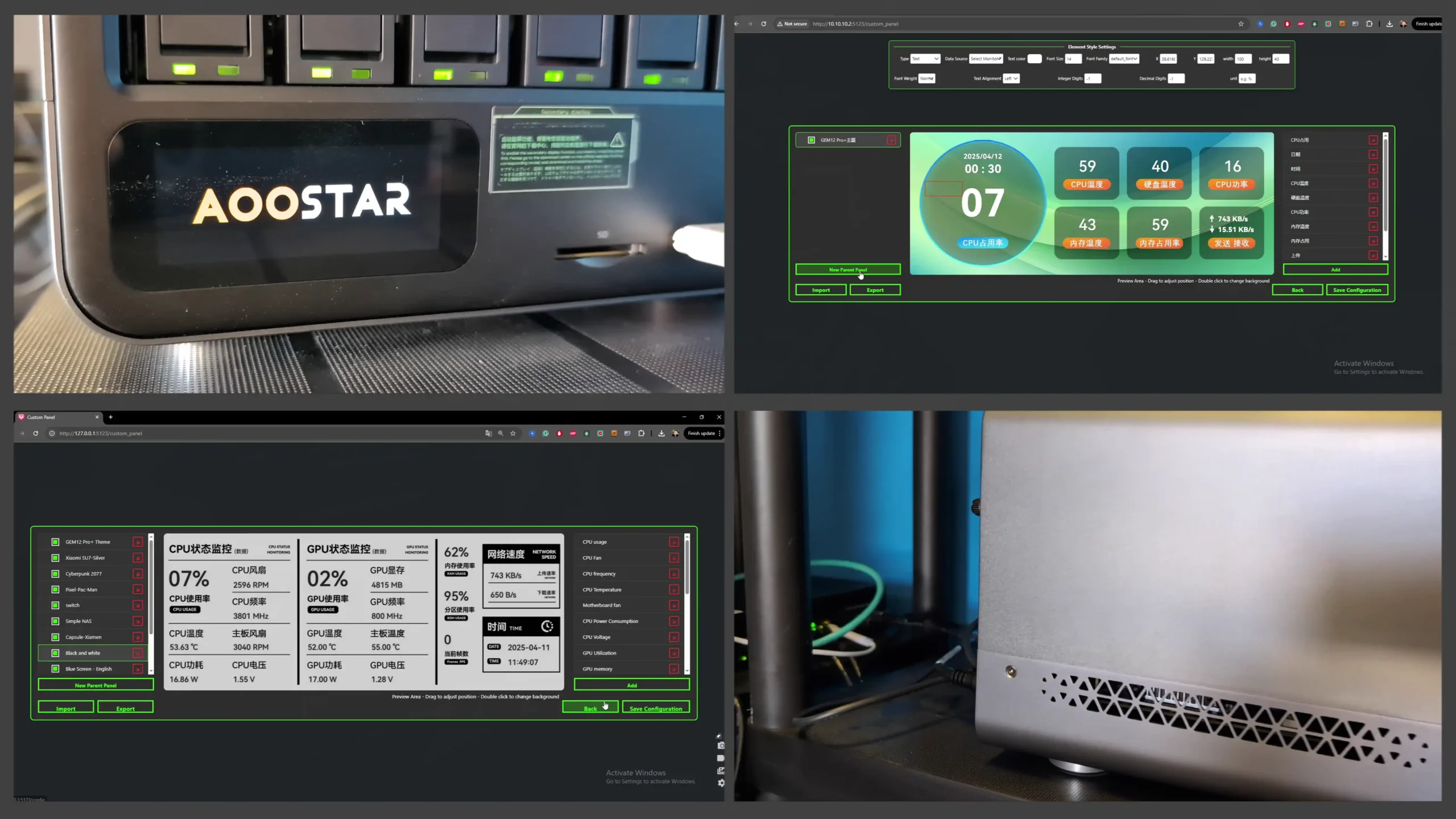
The lack of an LCD display on the Minisforum may disappoint users who like direct front-panel readouts, but it contributes to a more understated aesthetic. In practice, the Aoostar’s design will appeal most to those who value maximum storage flexibility, high-density airflow, and immediate status feedback, while the Minisforum will suit users who prioritize tool-less servicing, quieter operation at idle, and a more refined, professional look. This category ultimately comes down to user priorities, but if judged solely on usability and build refinement, the Minisforum N5 and N5 Pro take a modest edge over the Aoostar WTR Max.
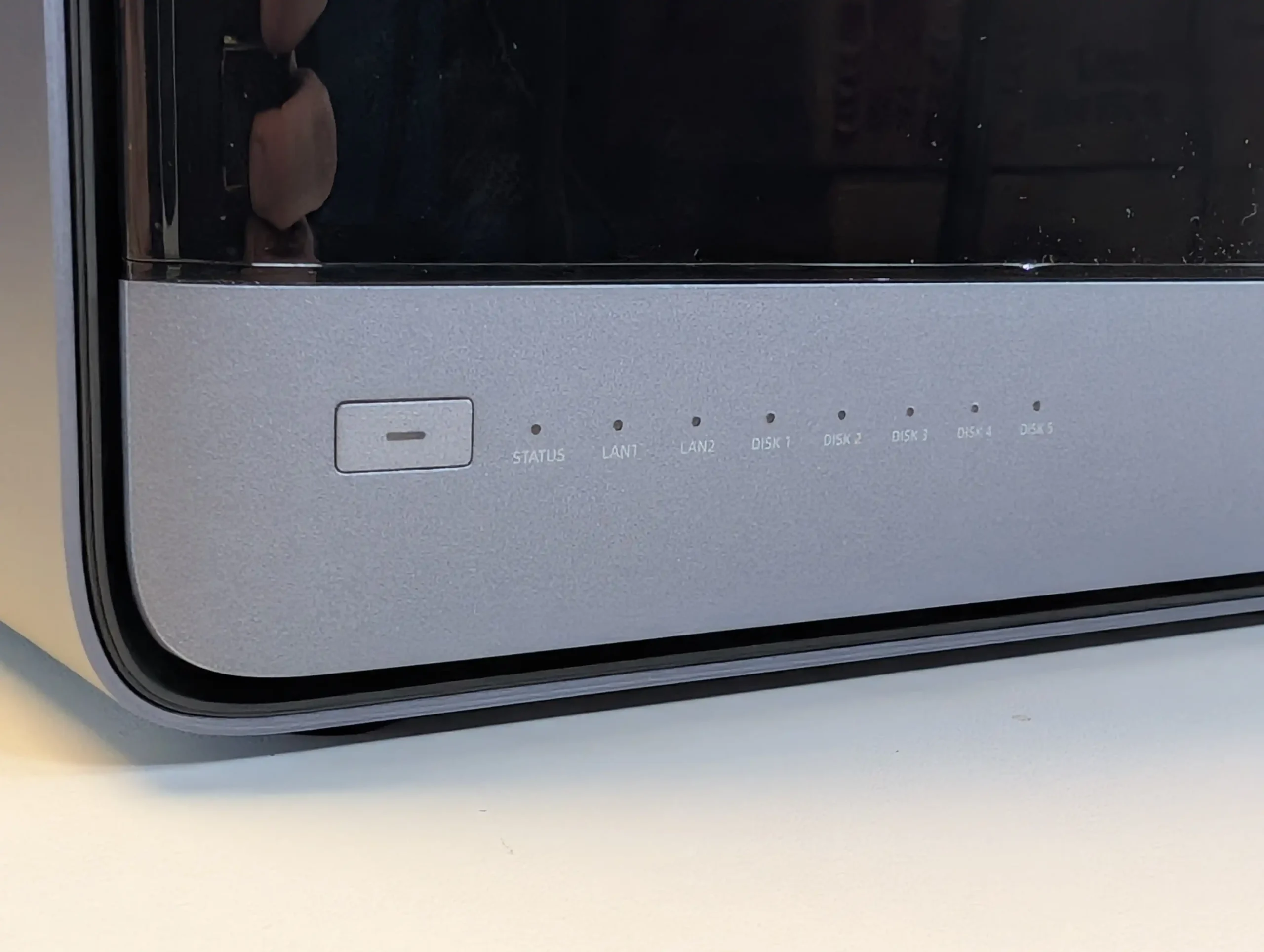
Storage capabilities represent one of the most significant differences between the Aoostar WTR Max and the Minisforum N5 series, reflecting divergent priorities in how each system balances density and simplicity. The Aoostar WTR Max delivers a standout total of eleven drive slots, composed of six 3.5”/2.5” SATA bays, a dedicated seventh tray supporting up to four M.2 NVMe SSDs. This architecture provides users with the ability to create sophisticated storage topologies, combining high-capacity mechanical drives for bulk cold storage and multiple high-speed NVMe SSDs for tiered caching, scratch disks, or performance-optimized pools.
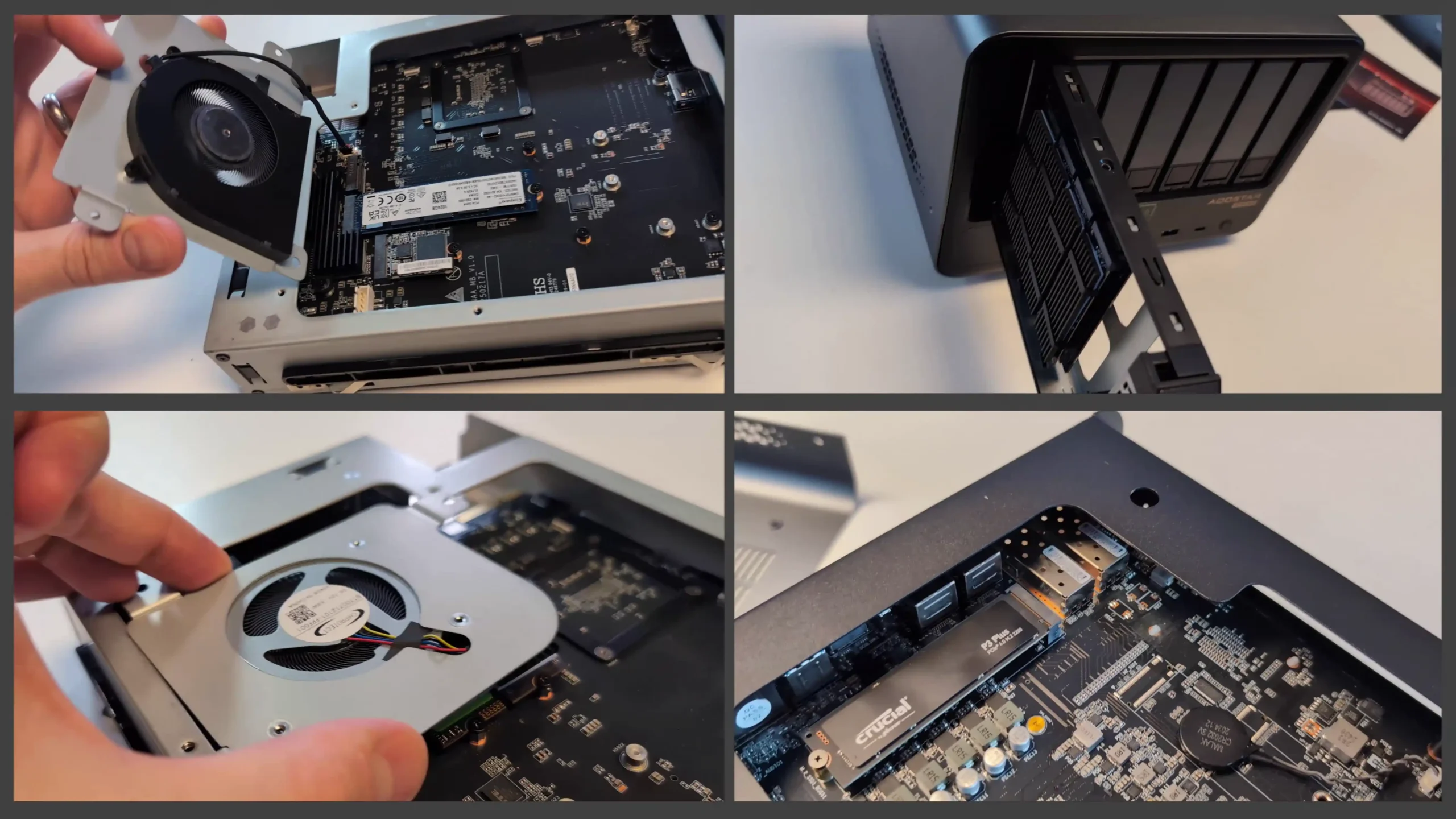
The additional M.2 tray, which is unique to the Aoostar design, simplifies the installation of multiple NVMe drives without occupying space within the motherboard area, while still offering full Gen 4 speeds on select slots. In contrast, the Minisforum N5 and N5 Pro are more restrained, offering five SATA bays and three NVMe/U.2 slots, which can be configured either as three M.2 drives or as one M.2 with two U.2 drives using the supplied adapter card. The Minisforum setup also includes a dedicated M.2 slot for its 64GB OS SSD, but sadly, this slot consumes one of the three available NVMe positions. Both Minisforum models support hot-swapping on the SATA bays and flexible RAID modes, but the higher bay count and more independent storage interfaces of the Aoostar clearly cater to users with larger or more diverse storage needs.
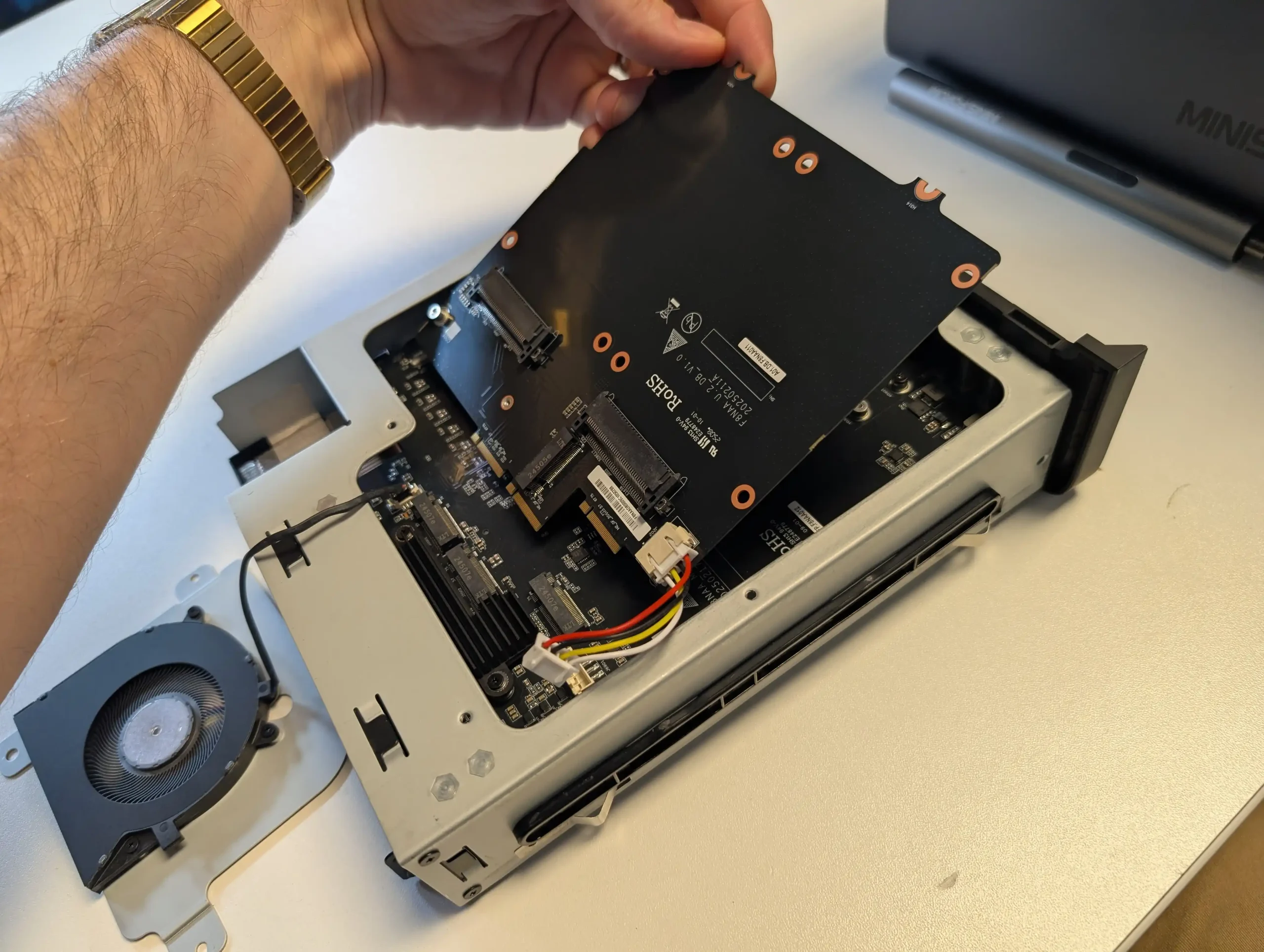
| Feature | Aoostar WTR Max | Minisforum N5 / N5 Pro | Notes / Best |
|---|---|---|---|
| SATA Bays | 6 × 3.5″/2.5″ (SATA 3.0, up to 22TB each) | 5 × 3.5″/2.5″ (SATA 3.0, up to 22TB each) | Aoostar wins on total count |
| SATA Hot-swap | No | Yes | Minisforum wins |
| NVMe/U.2 Slots Total | 4 × M.2 in tray + 1 × OS M.2 slot | 3 × NVMe/U.2 + 1 × OS M.2 slot | Aoostar wins on total NVMe count |
| NVMe Slot PCIe Lanes / Speed | 2 × Gen4 x2, 2 × Gen4 x1 | 1 × Gen4 x2, 2 × Gen4 x1 | Aoostar provides more total bandwidth |
| OS Drive Impact | Separate dedicated M.2 slot for OS SSD | OS SSD occupies 1 NVMe slot | Aoostar wins here |
| NVMe Hot-swap | No | No | Neither supports hot-swap NVMe |
| Optional U.2 Support | Not natively supported | Via included adapter (2 × U.2 + 1 × M.2) | Minisforum offers flexibility |
| Reported Internal SSD Speeds | Gen4 x1 slots: ~1.6 GB/s read/write; Gen4 x2 slots: ~2.9–3.1 GB/s read/write | Gen4 x1 slots: ~1.7 GB/s read/write; Gen4 x2 slot: ~3.3 GB/s read, ~3.1 GB/s write | Comparable, slight edge Minisforum |
| Total Drive Capacity | 6 SATA + 4 NVMe + OS SSD = 11 drives | 5 SATA + 3 NVMe/U.2 + OS SSD = 8 drives | Aoostar wins on total drive count |
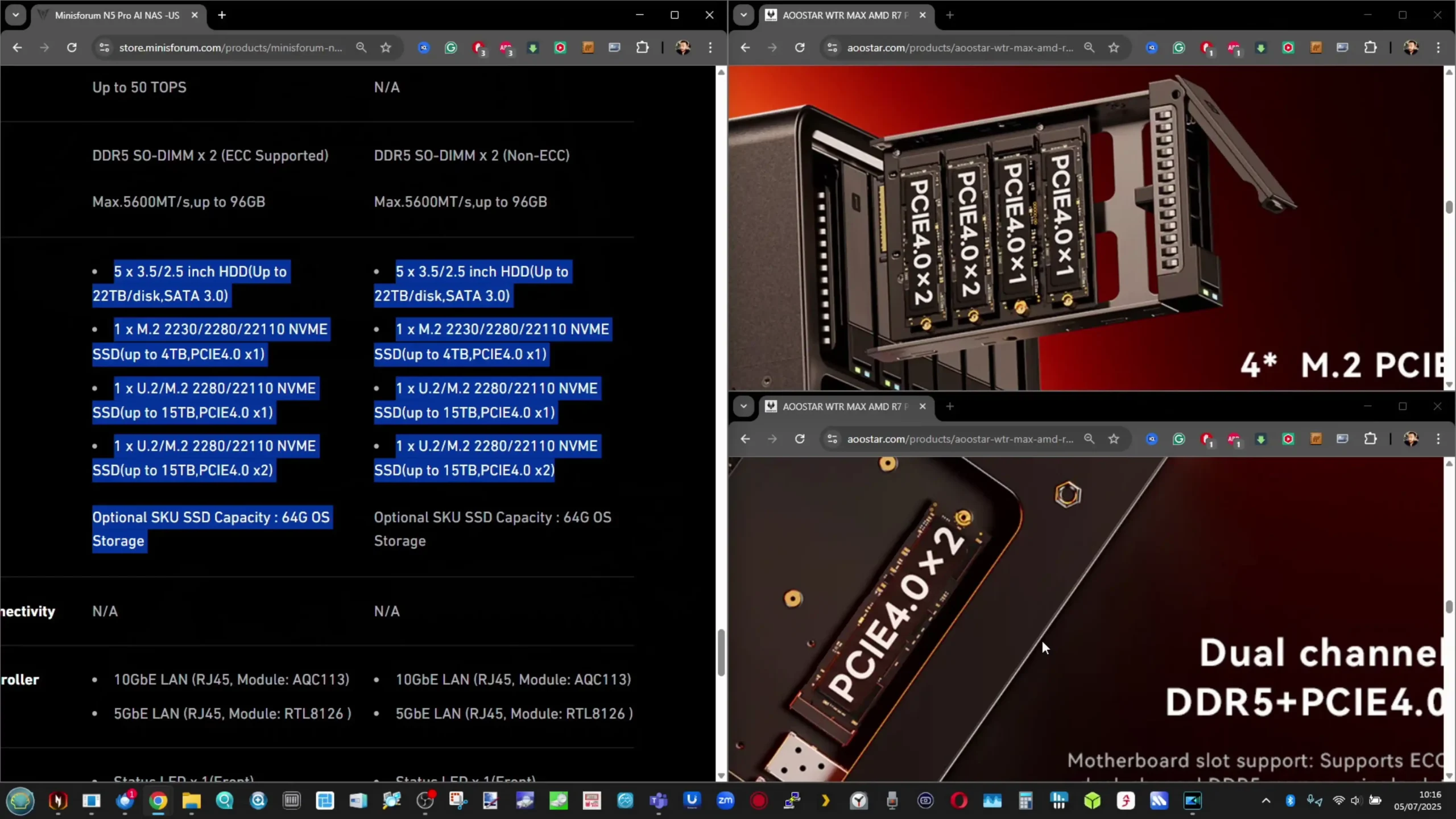
Storage capabilities represent one of the most significant differences between the Aoostar WTR Max and the Minisforum N5 series, reflecting divergent priorities in how each system balances density and simplicity. The Aoostar WTR Max delivers a standout total of eleven drive slots, composed of six 3.5”/2.5” SATA bays, a dedicated seventh tray supporting up to four M.2 NVMe SSDs. This architecture provides users with the ability to create sophisticated storage topologies, combining high-capacity mechanical drives for bulk cold storage and multiple high-speed NVMe SSDs for tiered caching, scratch disks, or performance-optimized pools.
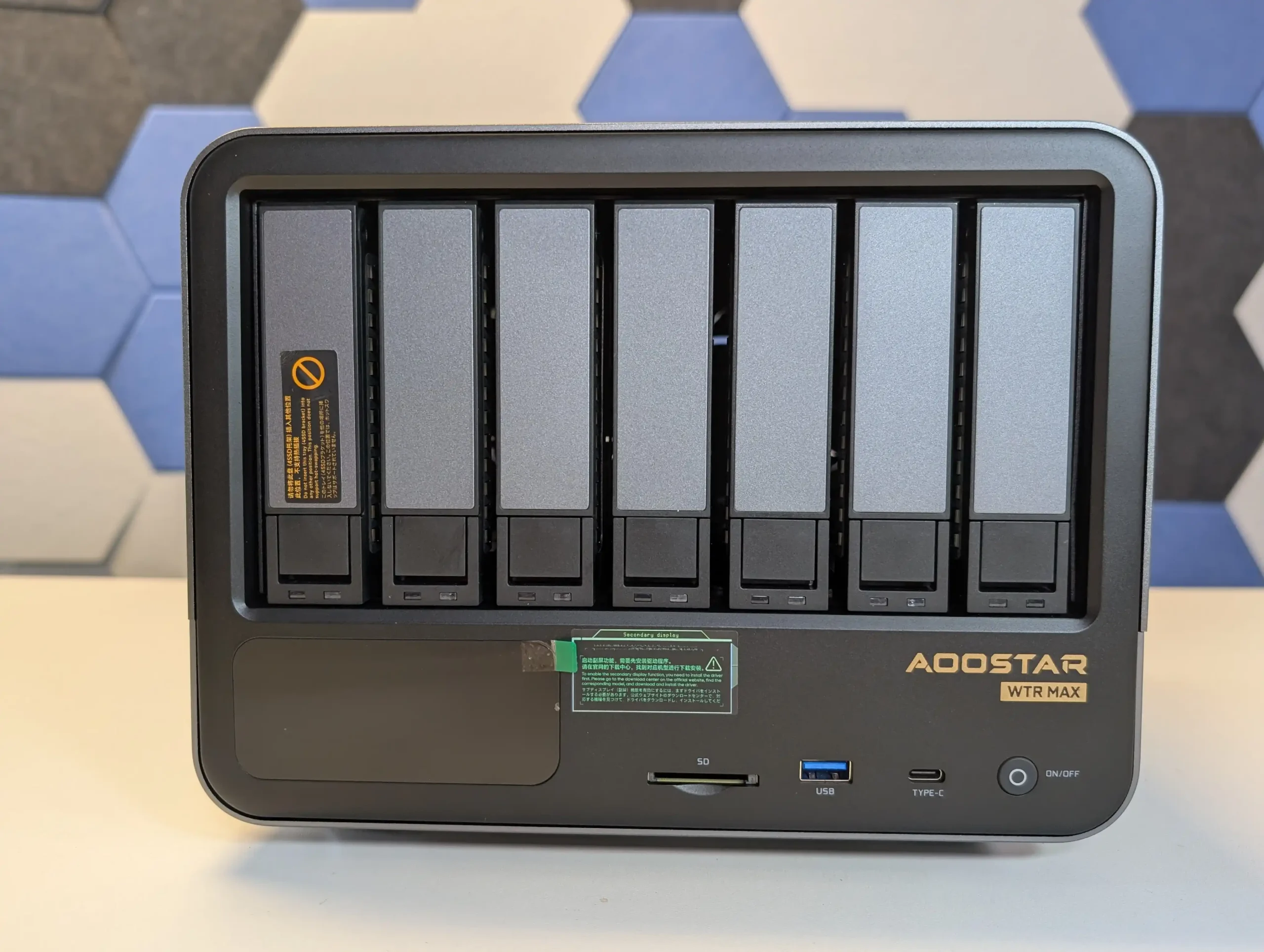 |
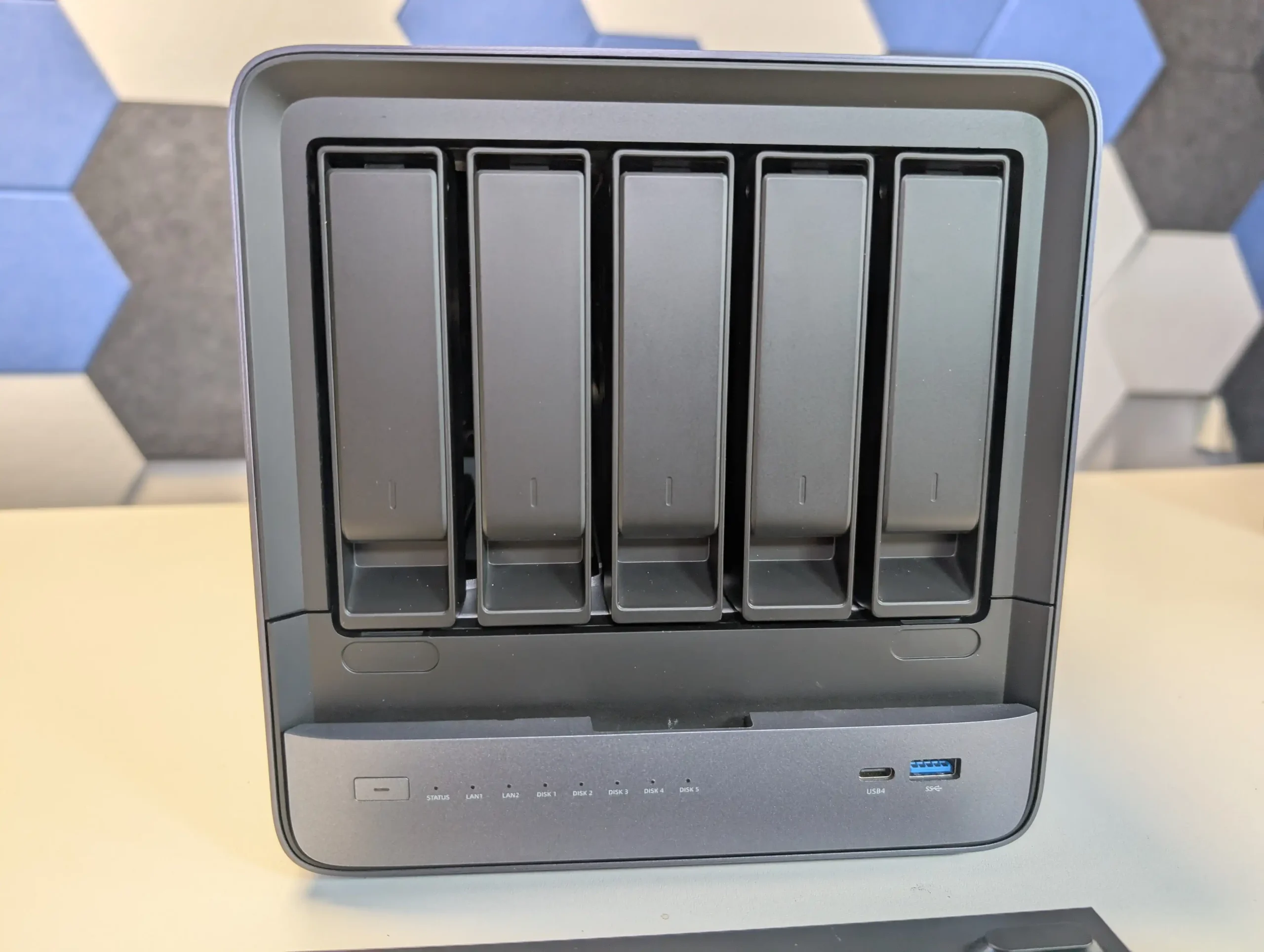 |
The additional M.2 tray, which is unique to the Aoostar design, simplifies the installation of multiple NVMe drives without occupying space within the motherboard area, while still offering full Gen 4 speeds on select slots. In contrast, the Minisforum N5 and N5 Pro are more restrained, offering five SATA bays and three NVMe/U.2 slots, which can be configured either as three M.2 drives or as one M.2 with two U.2 drives using the supplied adapter card. The Minisforum setup also includes a dedicated M.2 slot for its 64GB OS SSD, this slot consumes one of the three available NVMe positions. Both Minisforum models support hot-swapping on the SATA bays and flexible RAID modes, but the higher bay count and more independent storage interfaces of the Aoostar clearly cater to users with larger or more diverse storage needs.
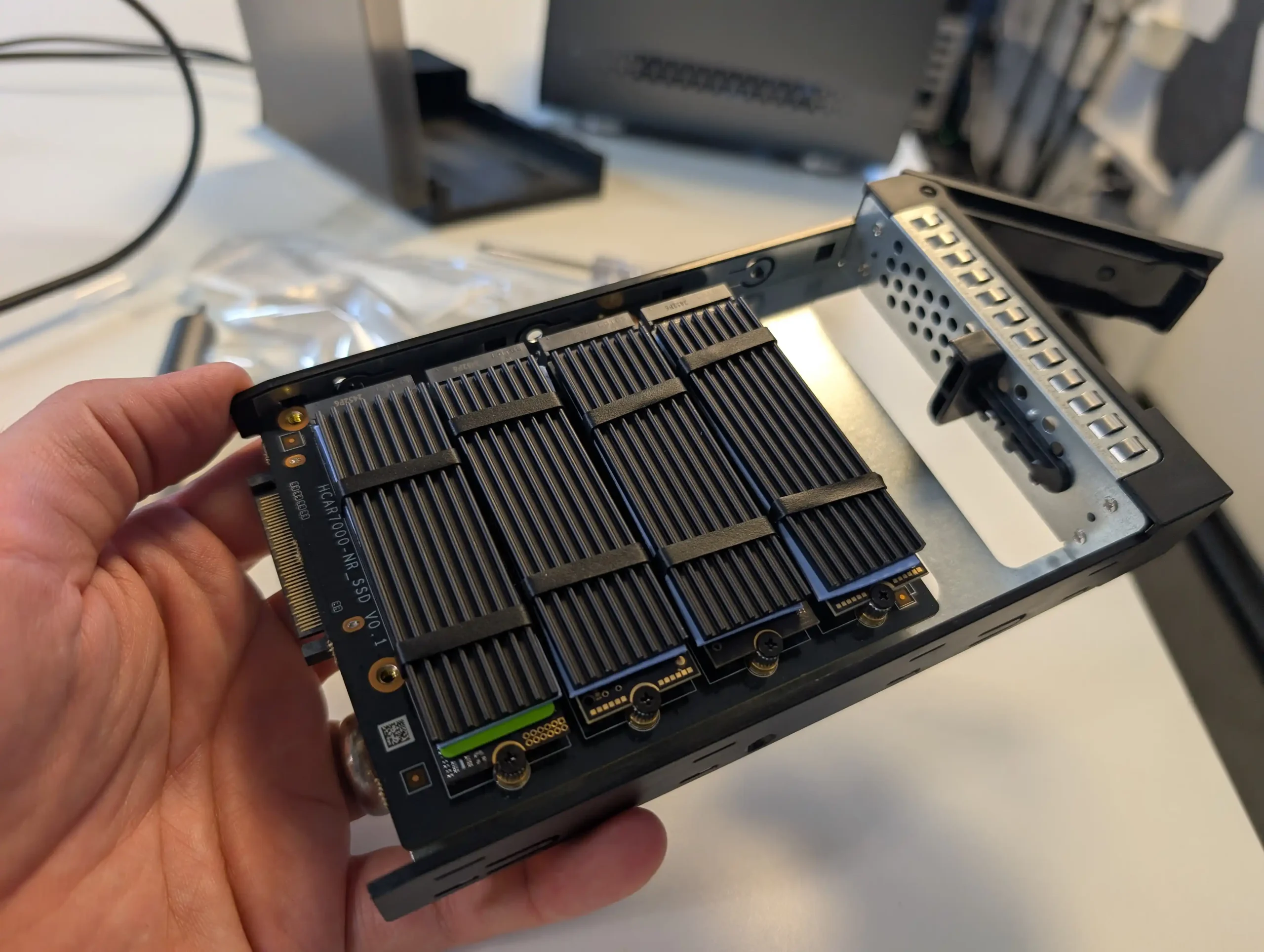 |
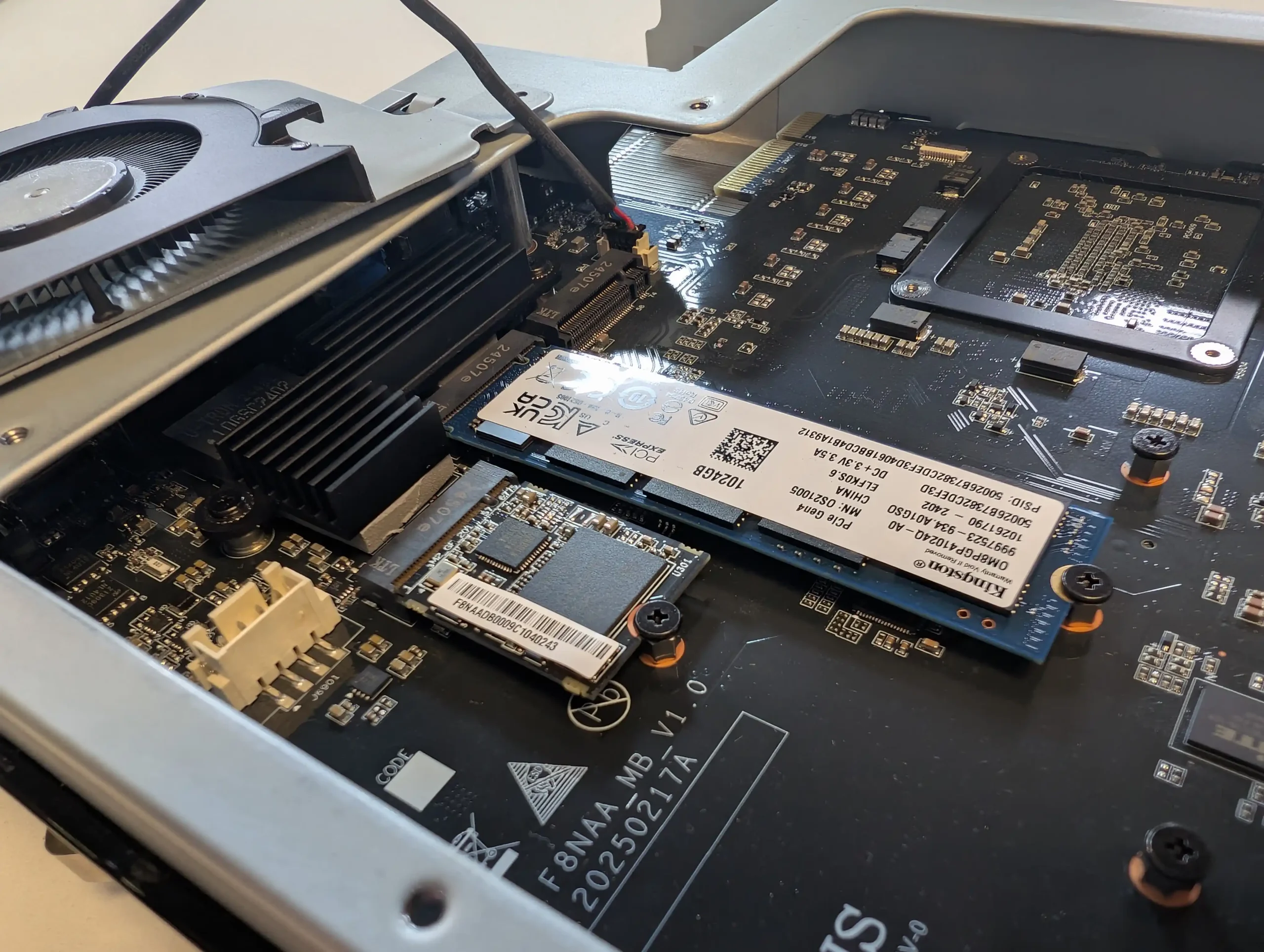 |
Both the Aoostar WTR Max and the Minisforum N5 series deliver a wide array of external ports and connectivity options, though their designs reflect different priorities and deployment philosophies. The Aoostar WTR Max is clearly oriented toward high-density, network-heavy environments, offering two 10GbE SFP+ fiber ports alongside two additional 2.5GbE RJ45 copper ports. This configuration enables up to four simultaneous physical network connections, making it well-suited to scenarios that demand redundant paths, segmented VLANs, or hybrid fiber-copper topologies.
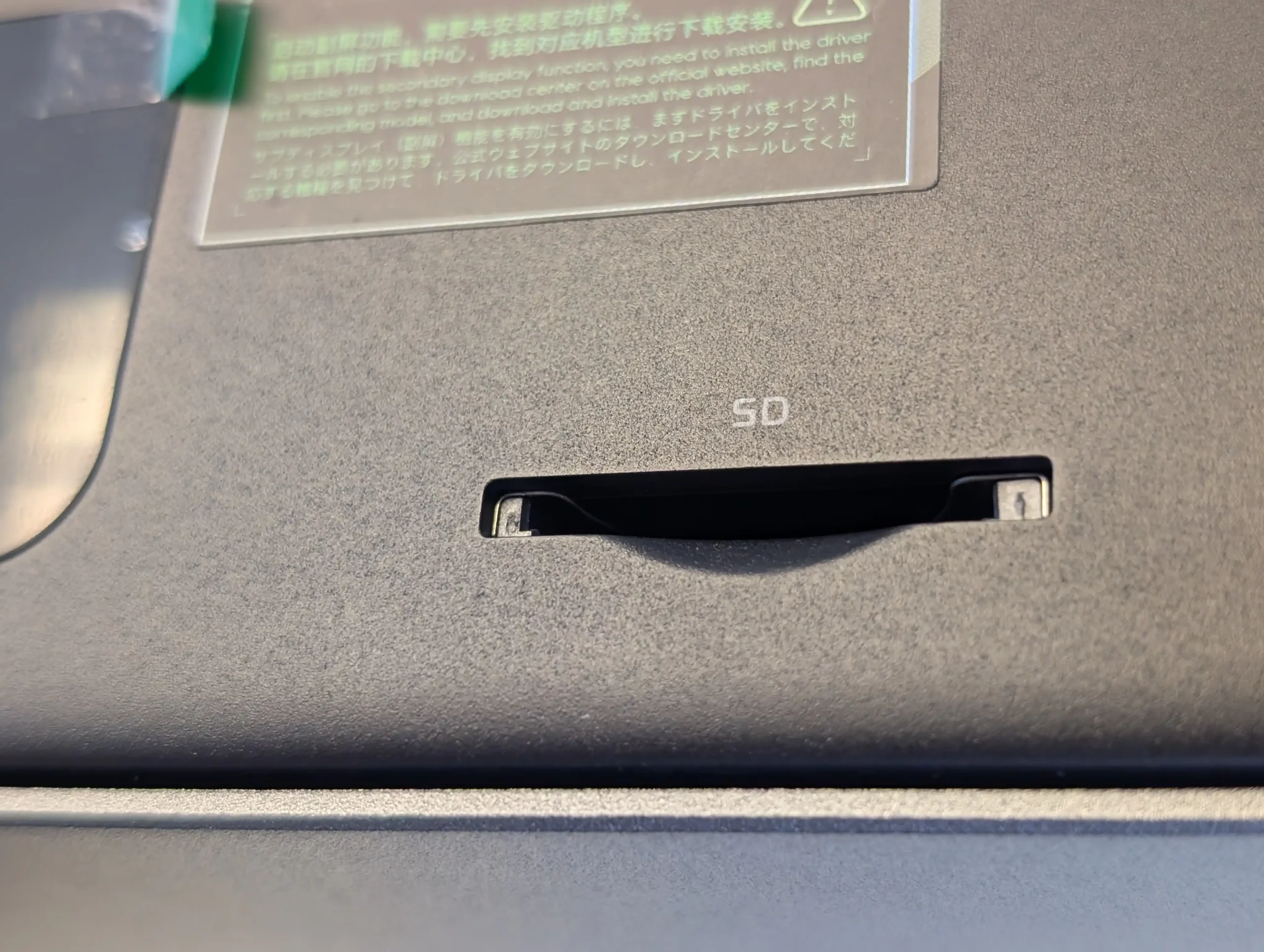 |
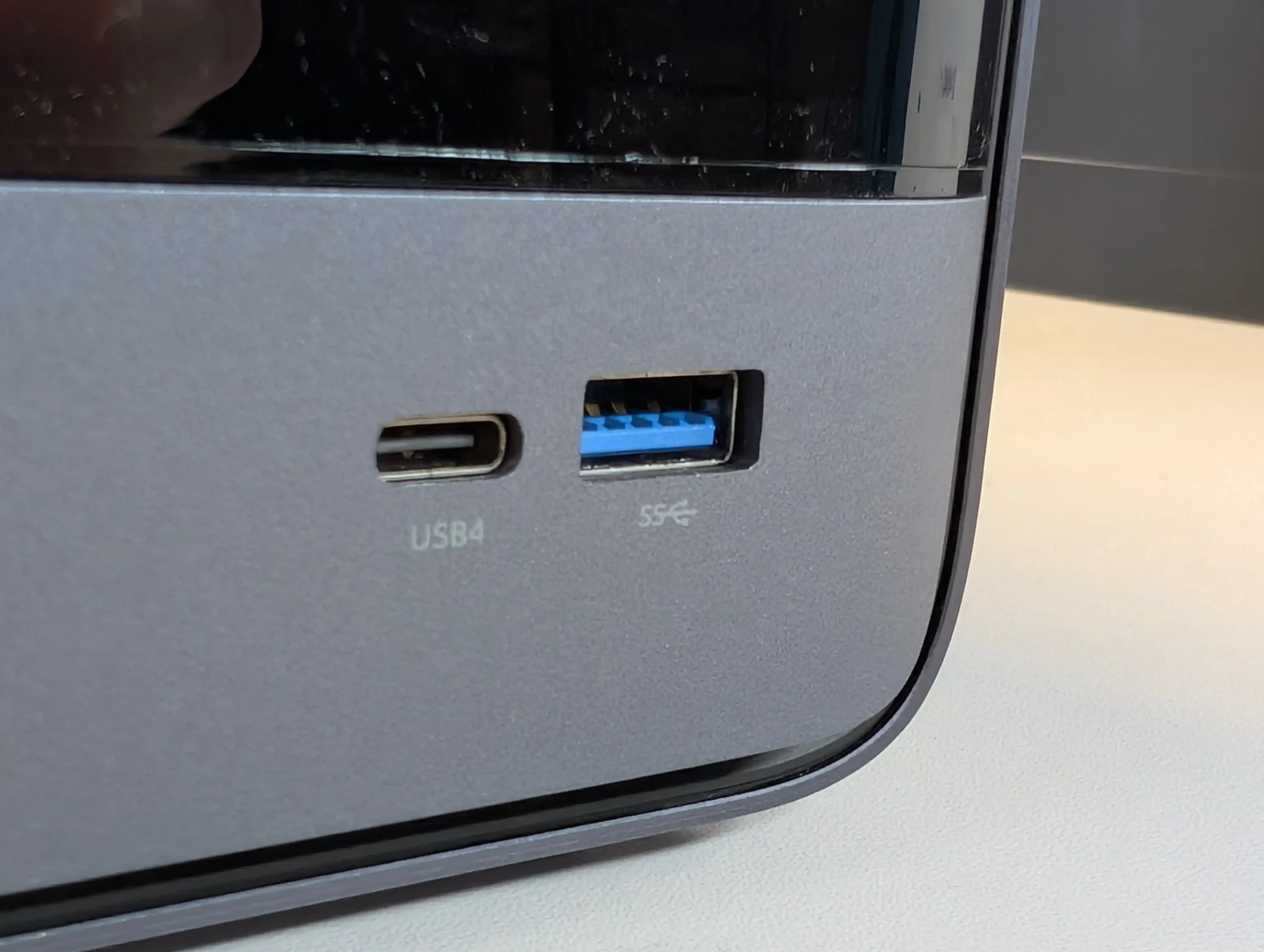 |
In addition, the Aoostar includes a front-mounted USB-C port, an SD card slot for quick local transfers, a rear USB4 port, an HDMI output for direct monitoring or console access, and an OCuLink port for external PCIe-based expansions. The SD card slot is an unusual but useful addition for media workflows, though the absence of any PCIe slot in the WTR Max’s internal layout limits upgrade options to what can be connected externally through OCuLink or USB4.
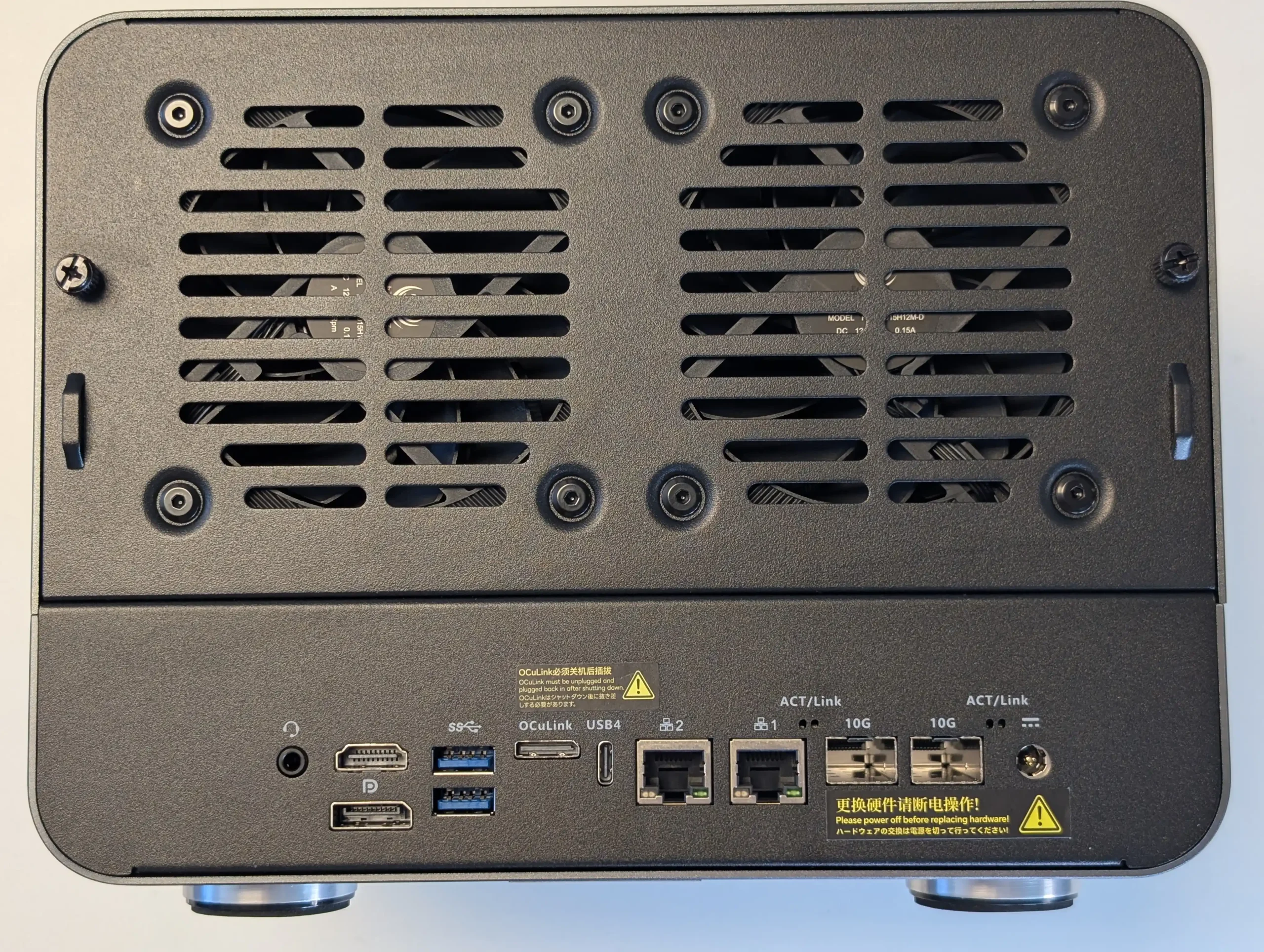 |
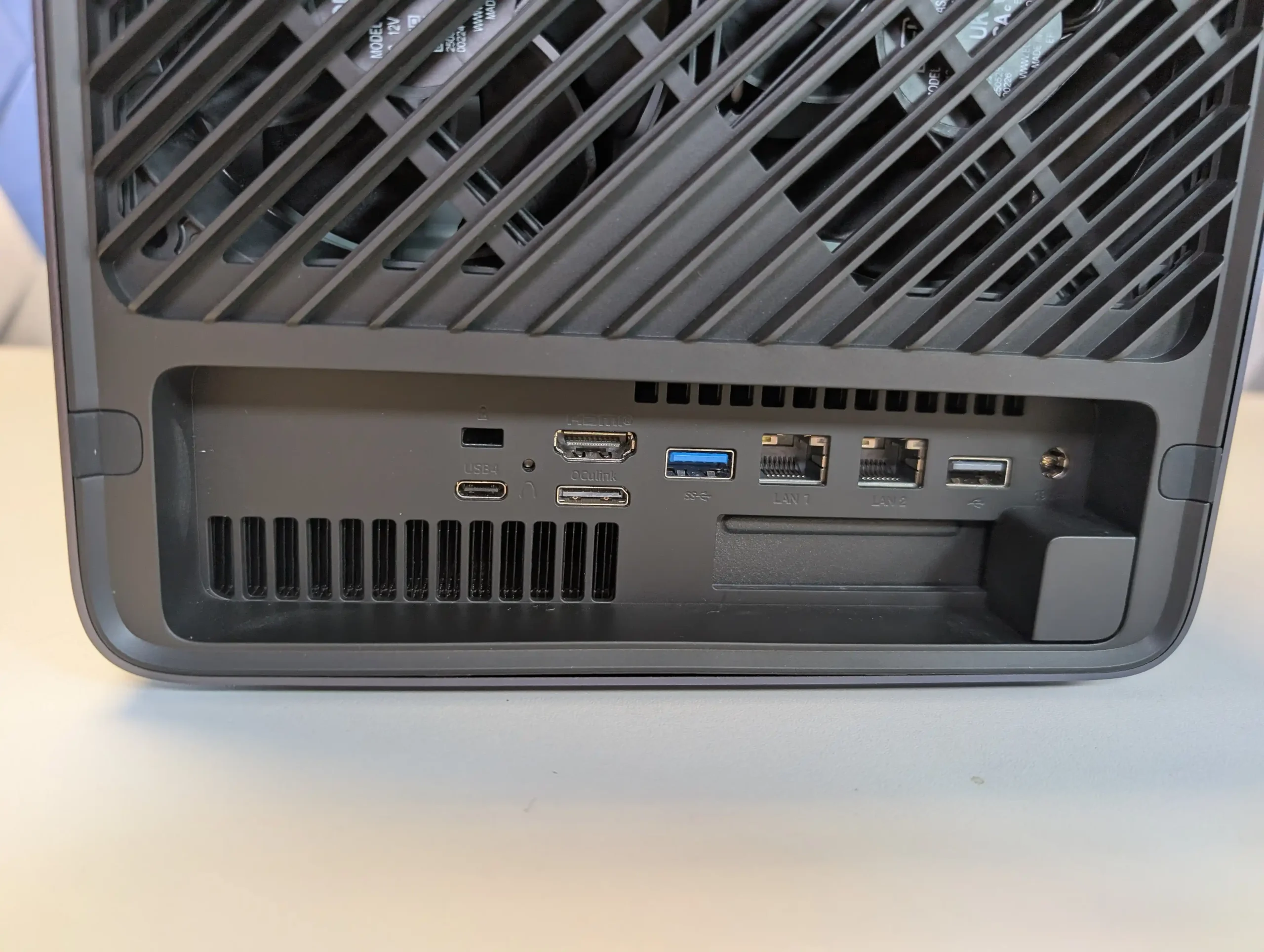 |
| Connection Type | Aoostar WTR Max | Minisforum N5 (Standard) | Minisforum N5 Pro | Best & Why/Note |
|---|---|---|---|---|
| 10GbE RJ45 | ✗ | ✓ | ✓ | N5/N5 Pro — standard copper 10GbE |
| 10GbE SFP+ | ✓×2 | ✗ | ✗ | Aoostar WTR Max — SFP+ for fiber |
| 5GbE RJ45 | ✗ | ✓ | ✓ | N5/N5 Pro — additional RJ45 flexibility |
| 2.5GbE RJ45 | ✓×2 | ✗ | ✗ | Aoostar WTR Max — more mid-tier ports |
| USB4 | ✓ | ✓×2 | ✓×2 | N5/N5 Pro — more USB4 ports |
| HDMI | ✓ | ✓ | ✓ | Tie — all include HDMI 2.1 |
| PCIe Gen4 Slot | ✗ | ✓ | ✓ | N5/N5 Pro — PCIe x16 expansion |
| OCuLink | ✓ | ✓ | ✓ | Tie — all include OCuLink |
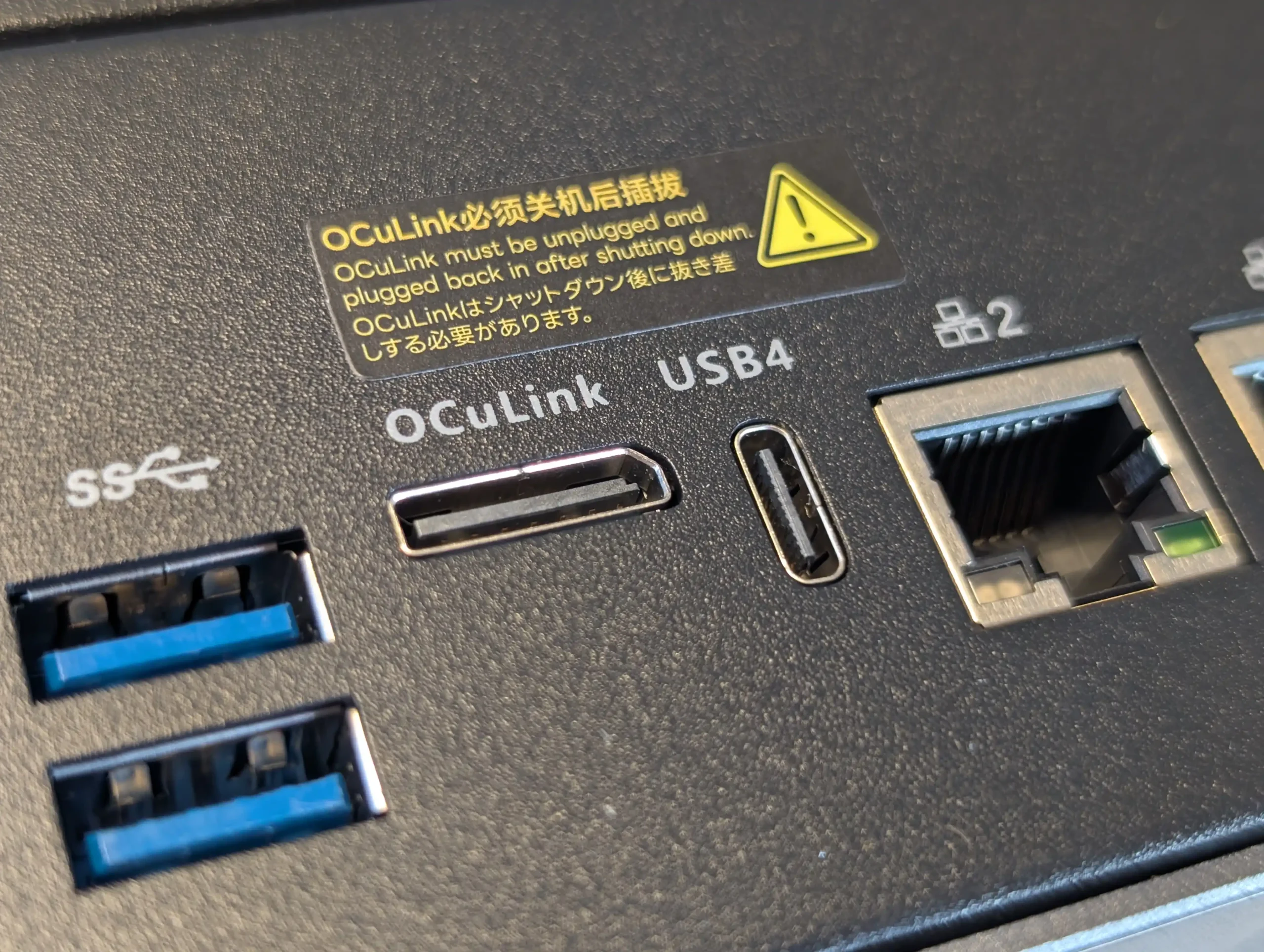
The Minisforum N5 and N5 Pro, by contrast, prioritize versatility and broader compatibility with typical IT infrastructure. Both models feature a 10GbE RJ45 copper port and a secondary 5GbE RJ45 port, allowing direct connection to high-speed copper backbones or standard multi-Gig switches without requiring transceivers. They also include two USB4 ports (one front, one rear), an HDMI 2.1 output, an OCuLink port for external PCIe-based devices, and crucially, a PCIe Gen4 x16 (x4 electrical) slot.
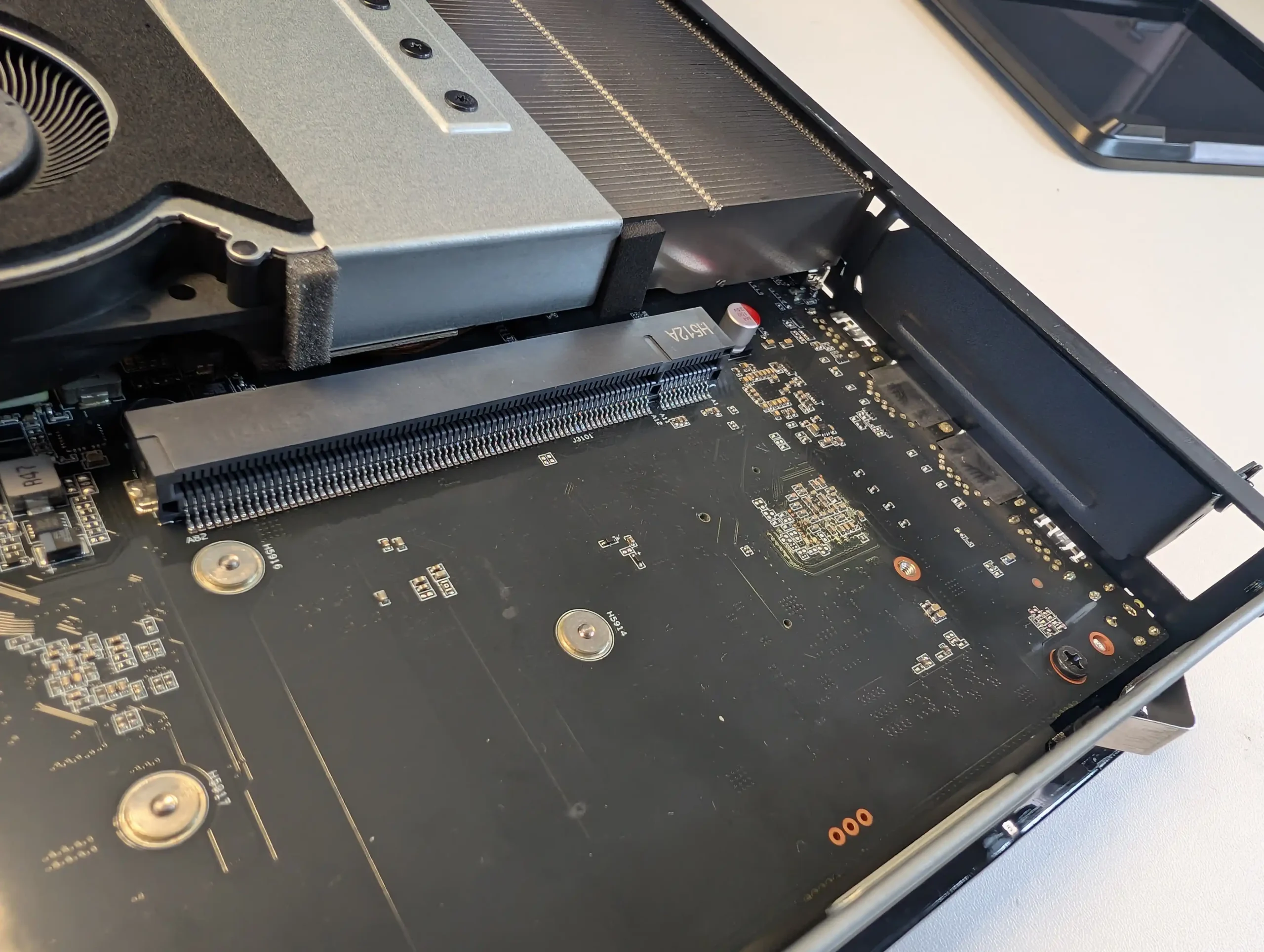
This PCIe slot unlocks possibilities for internal upgrades such as GPUs, additional NICs, AI accelerator cards, or other PCIe devices—a flexibility that the Aoostar lacks. This makes the Minisforum a more future-proof choice in environments where needs may change or grow, and where access to off-the-shelf PCIe hardware is desirable. Together with its more copper-friendly network ports and two USB4 connections, the Minisforum family aligns well with home labs, creative workstations, and hybrid environments that benefit from adaptable, modular expansion options.
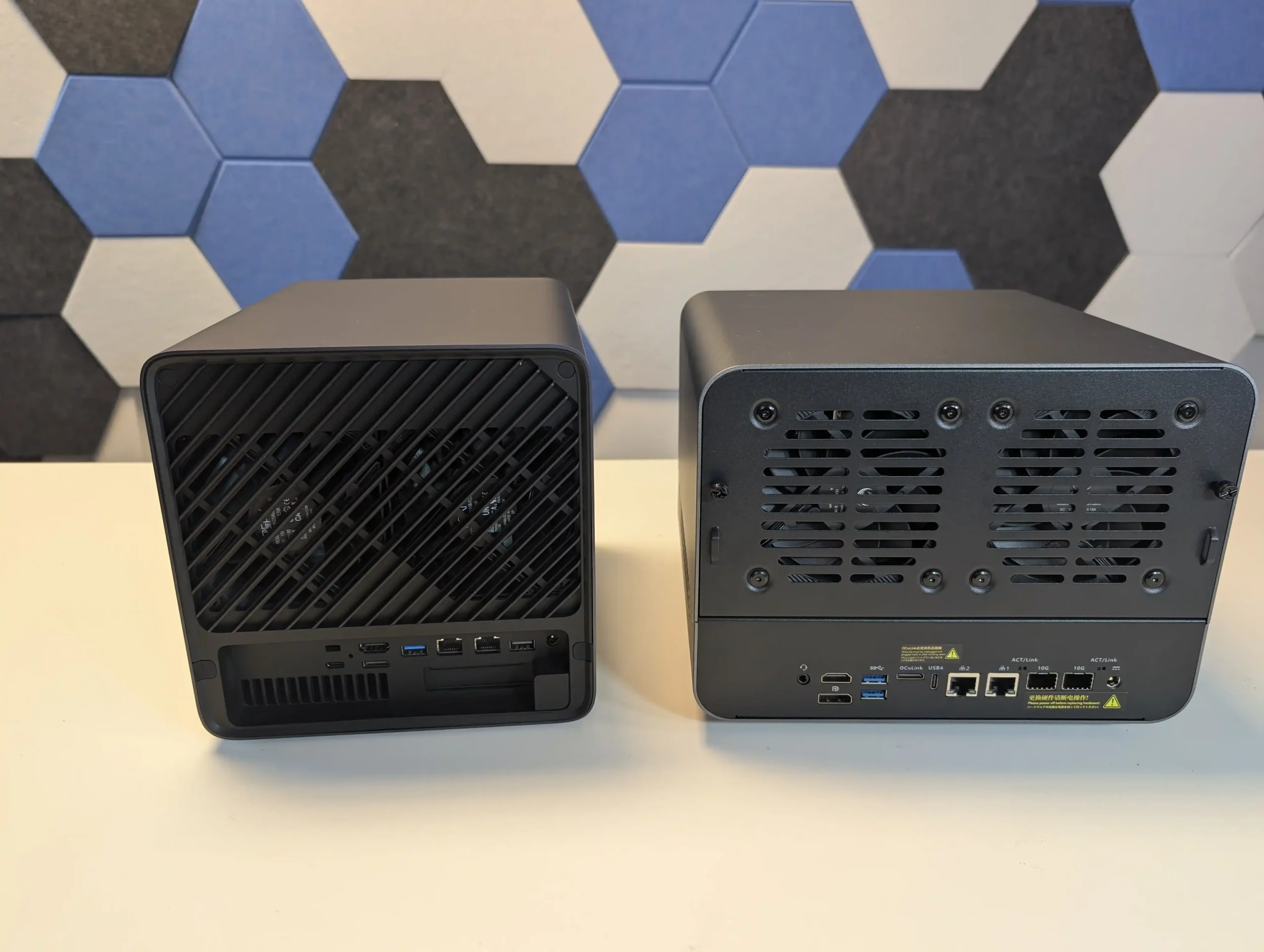
On balance, the Minisforum N5 series edges ahead in overall versatility and general-purpose applicability. While the Aoostar WTR Max offers a greater total number of network interfaces and superior fiber capabilities out of the box, those features come with trade-offs, including reliance on SFP+ transceivers, higher fiber infrastructure costs, and reduced flexibility for other kinds of expansion. For users specifically targeting a fiber-based or multi-path network deployment, the Aoostar remains highly appealing. However, for broader scenarios that favor compatibility with standard copper networks, more USB4 bandwidth, and internal PCIe upgrade capabilities, the Minisforum N5 and N5 Pro offer a more balanced and adaptable external connectivity package – but just less ACTUAL external bandwidth for networking!
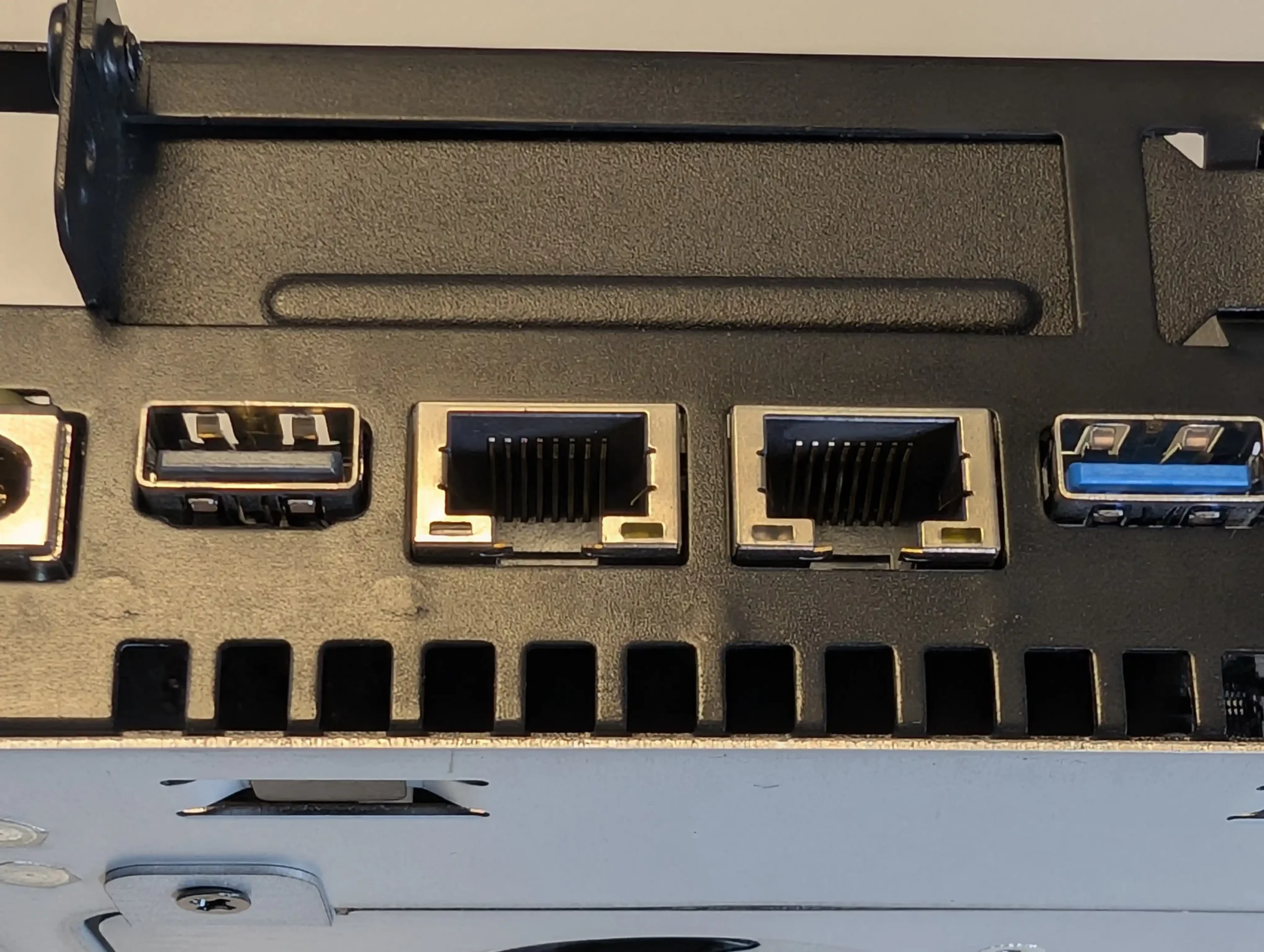
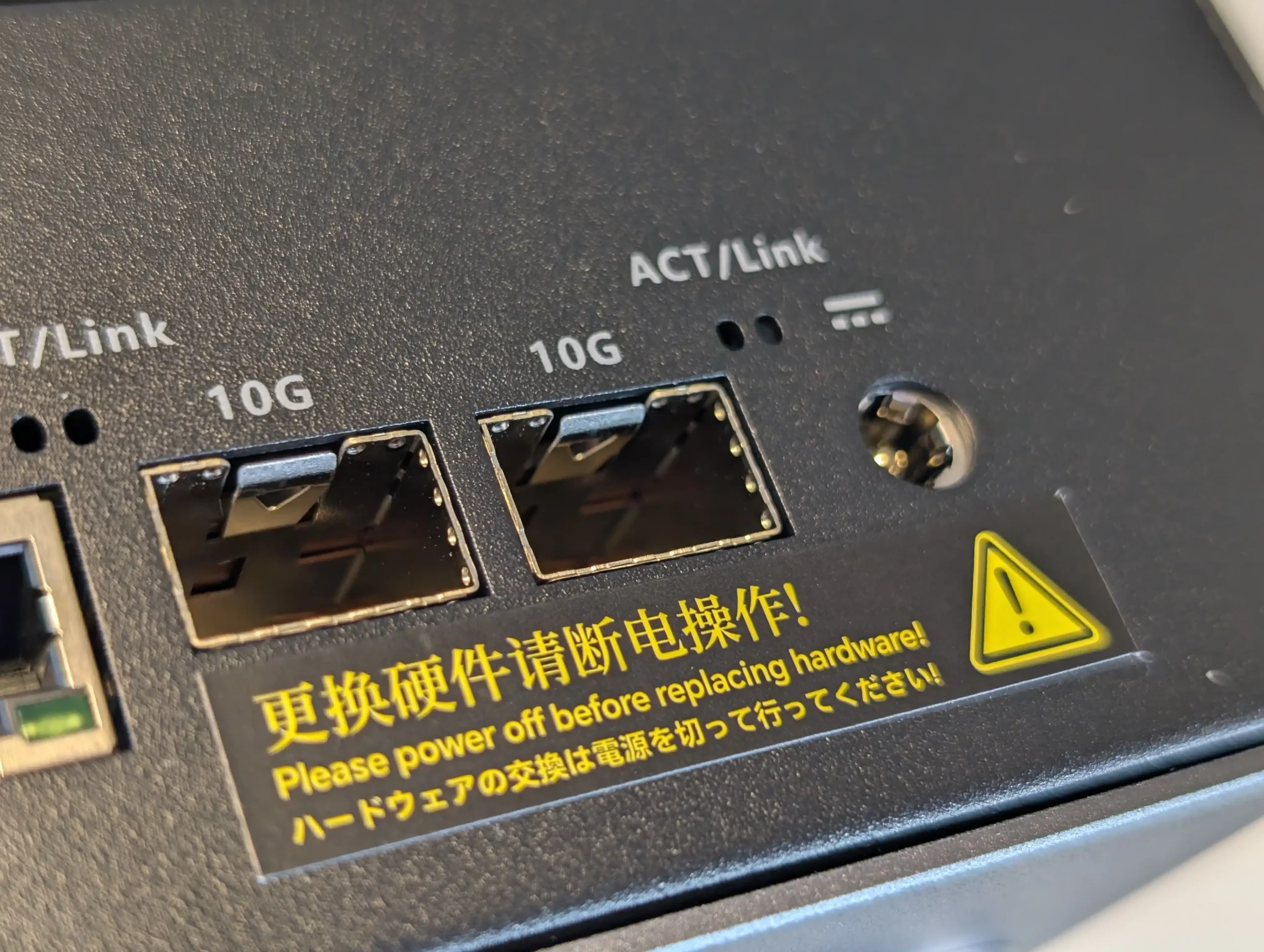 |
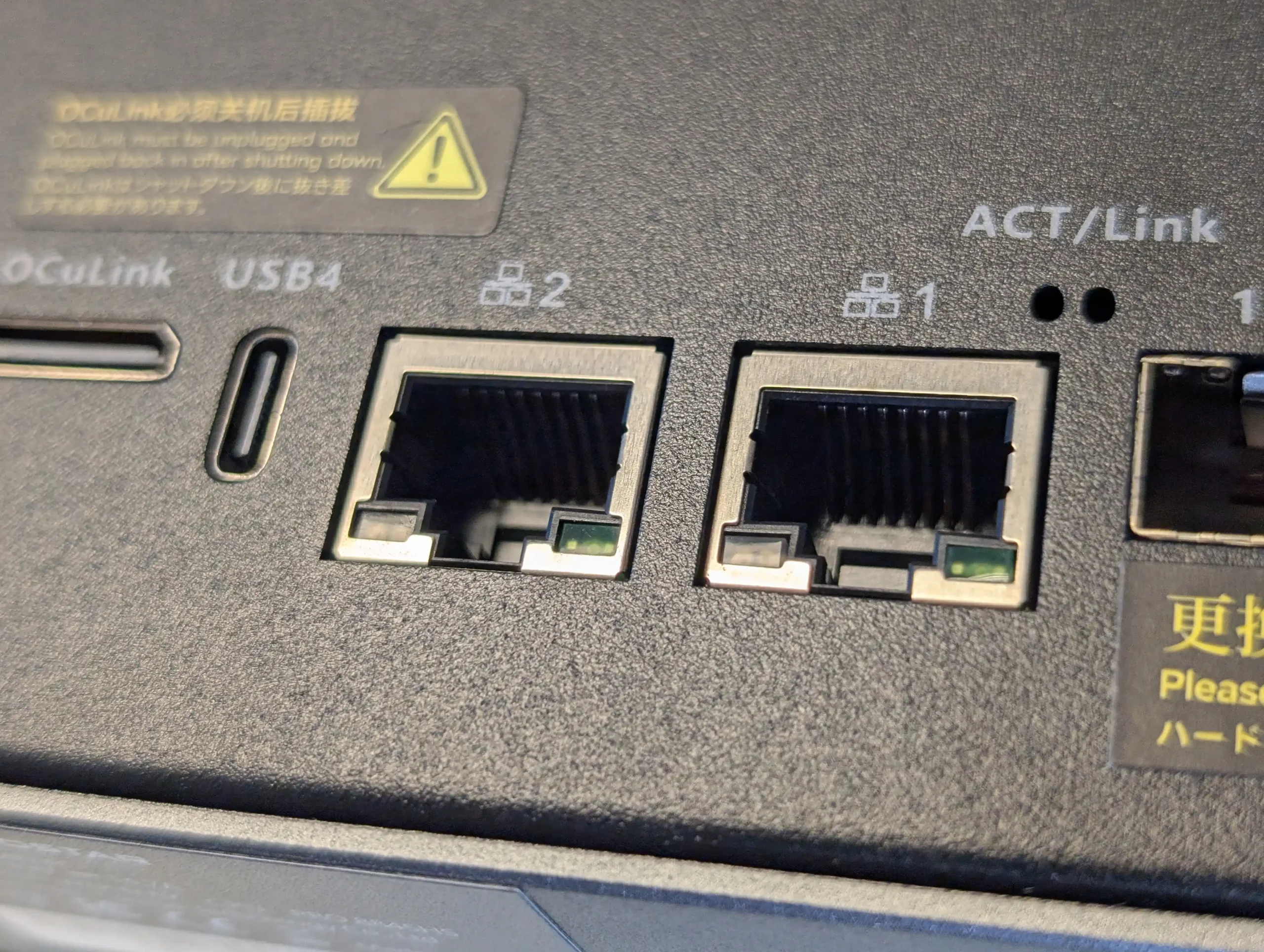 |
The Aoostar WTR Max and the Minisforum N5 series diverge substantially in processing power and memory capabilities, with the N5 Pro clearly at the high-performance end of the spectrum. The Aoostar WTR Max is equipped with an AMD Ryzen 7 Pro 8845HS, an 8-core, 16-thread processor based on AMD’s efficient Zen 4 architecture, and supports up to 128 GB of DDR5 memory with ECC. This makes the WTR Max a strong contender for users who need solid multi-threaded throughput, data integrity via ECC, and headroom for running many virtual machines or containerized workloads.
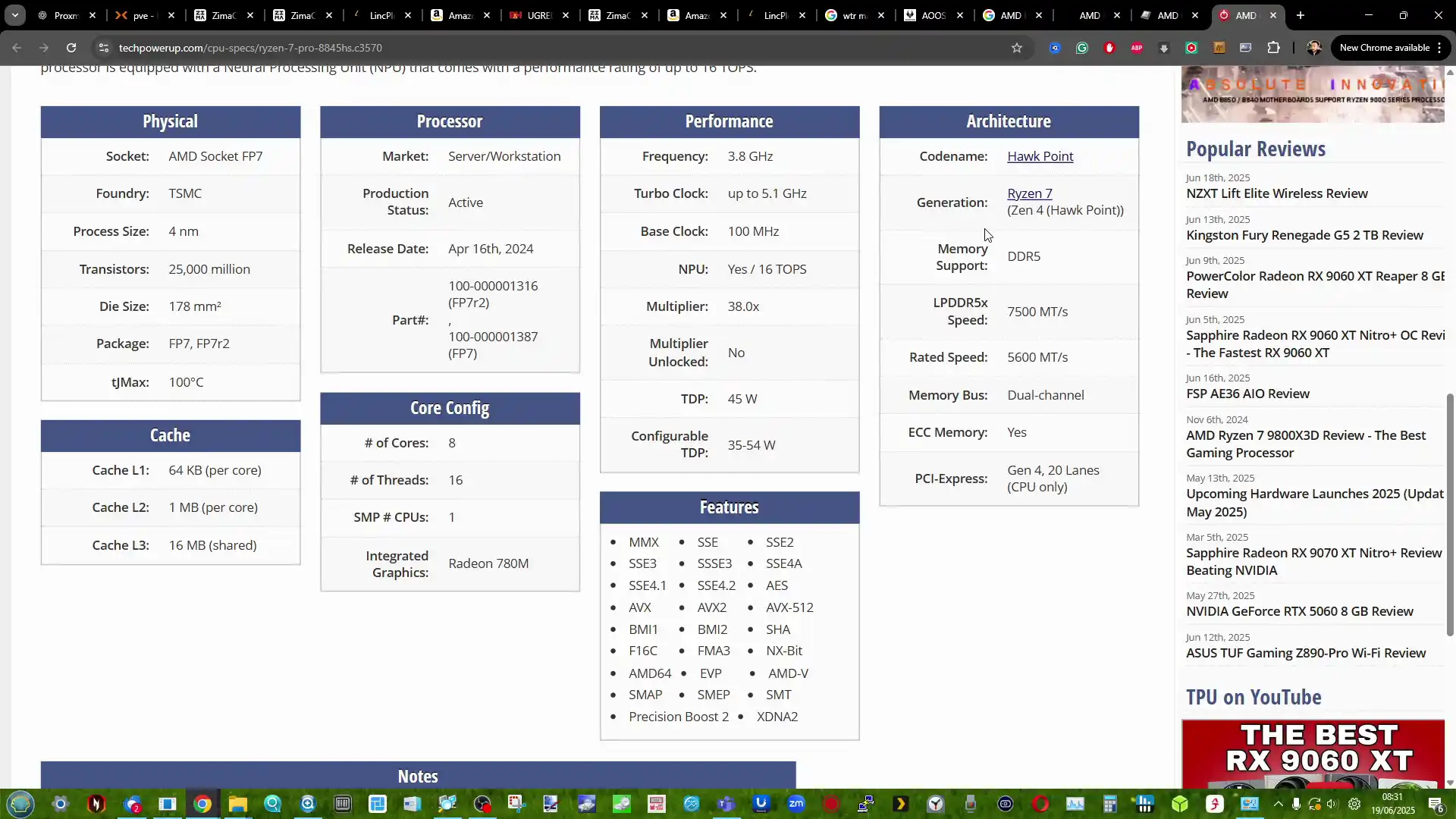 |
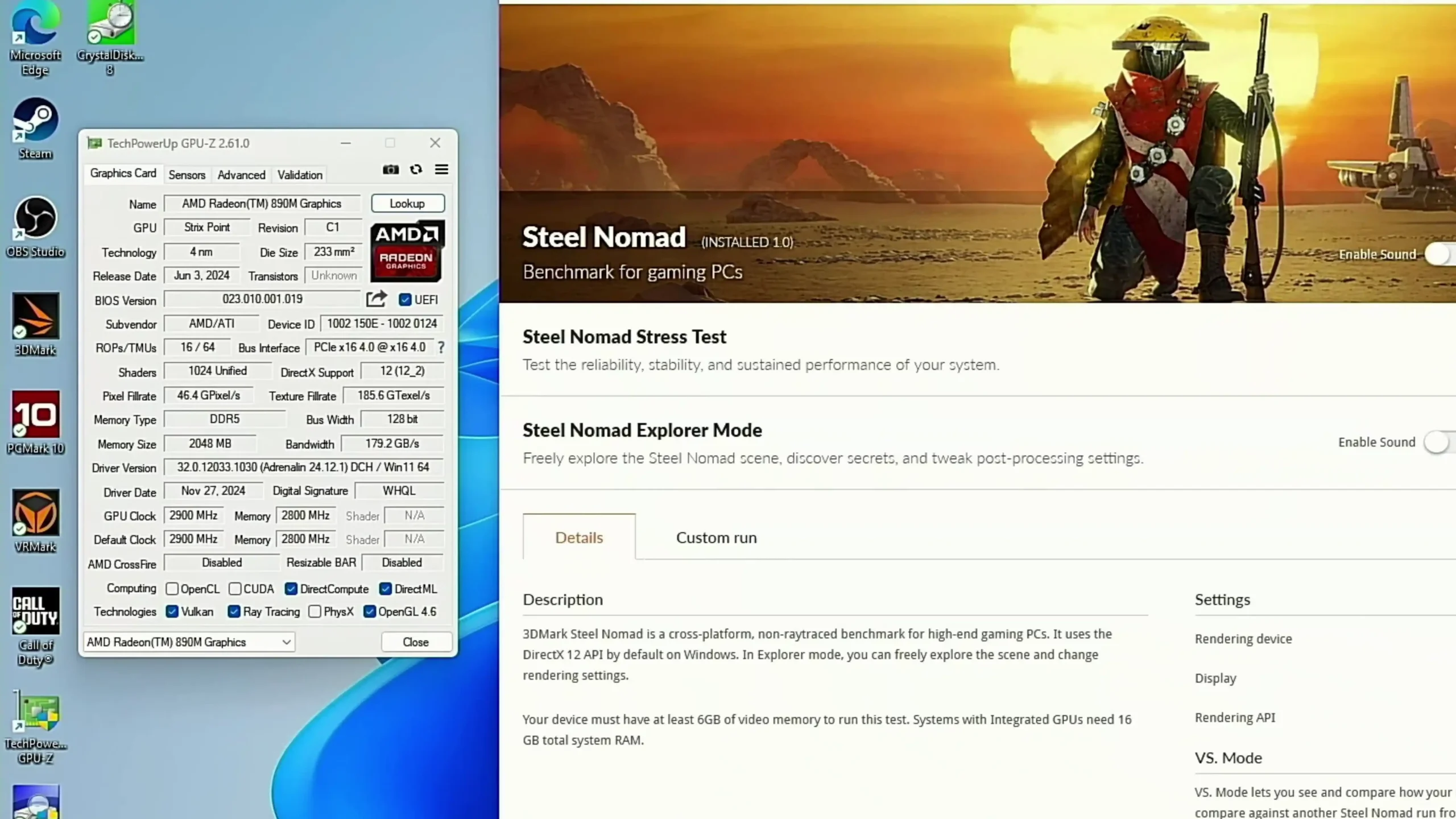 |
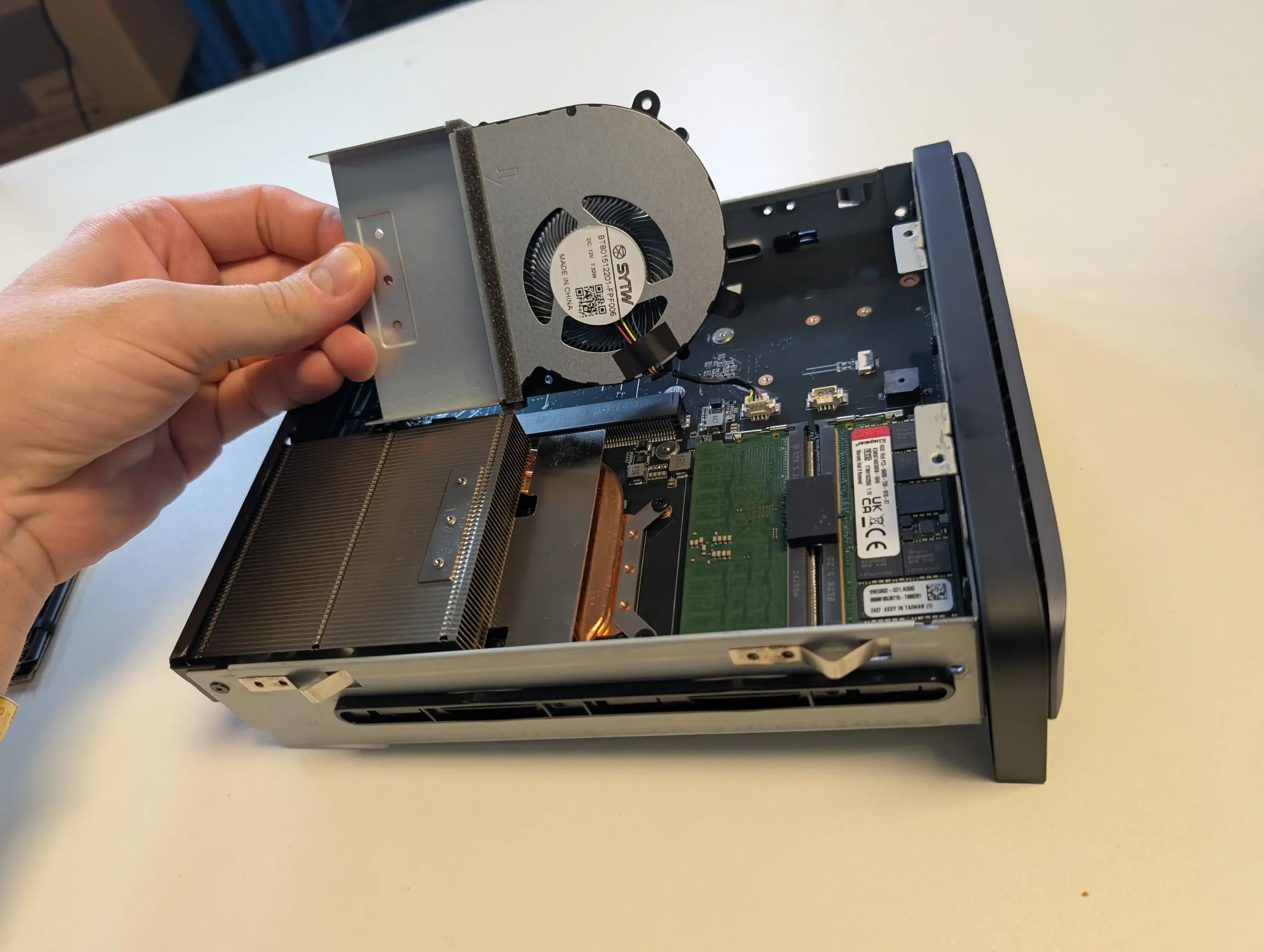
It is especially attractive in enterprise-like environments where reliability and memory capacity are priorities. The Minisforum N5 standard, by contrast, uses the older Ryzen 7 255, also with 8 cores and 16 threads, but based on the earlier Zen 3+ architecture, with a cap of 96 GB DDR5 and no ECC support. It remains competent for general NAS duties, file serving, light VM usage, and moderate multimedia tasks. Stepping up to the N5 Pro, however, brings a dramatic increase in compute and AI capabilities: its Ryzen AI 9 HX Pro 370 processor offers 12 cores, 24 threads, ECC support, and a built-in neural processing unit (NPU) delivering up to 50 TOPS for AI inferencing, while maintaining the same 96 GB DDR5 limit. This makes the N5 Pro ideal for highly concurrent workloads, virtualized environments, AI model hosting, and scenarios where raw CPU power and error resilience are critical.
(The CPU in the Minisforum N5 Pro is also featured on the X1 Pro from Minsforum, so below you can see the GFX benchmarks of this processor vs the same CPU + an MGA1 External Oculink eGPU)
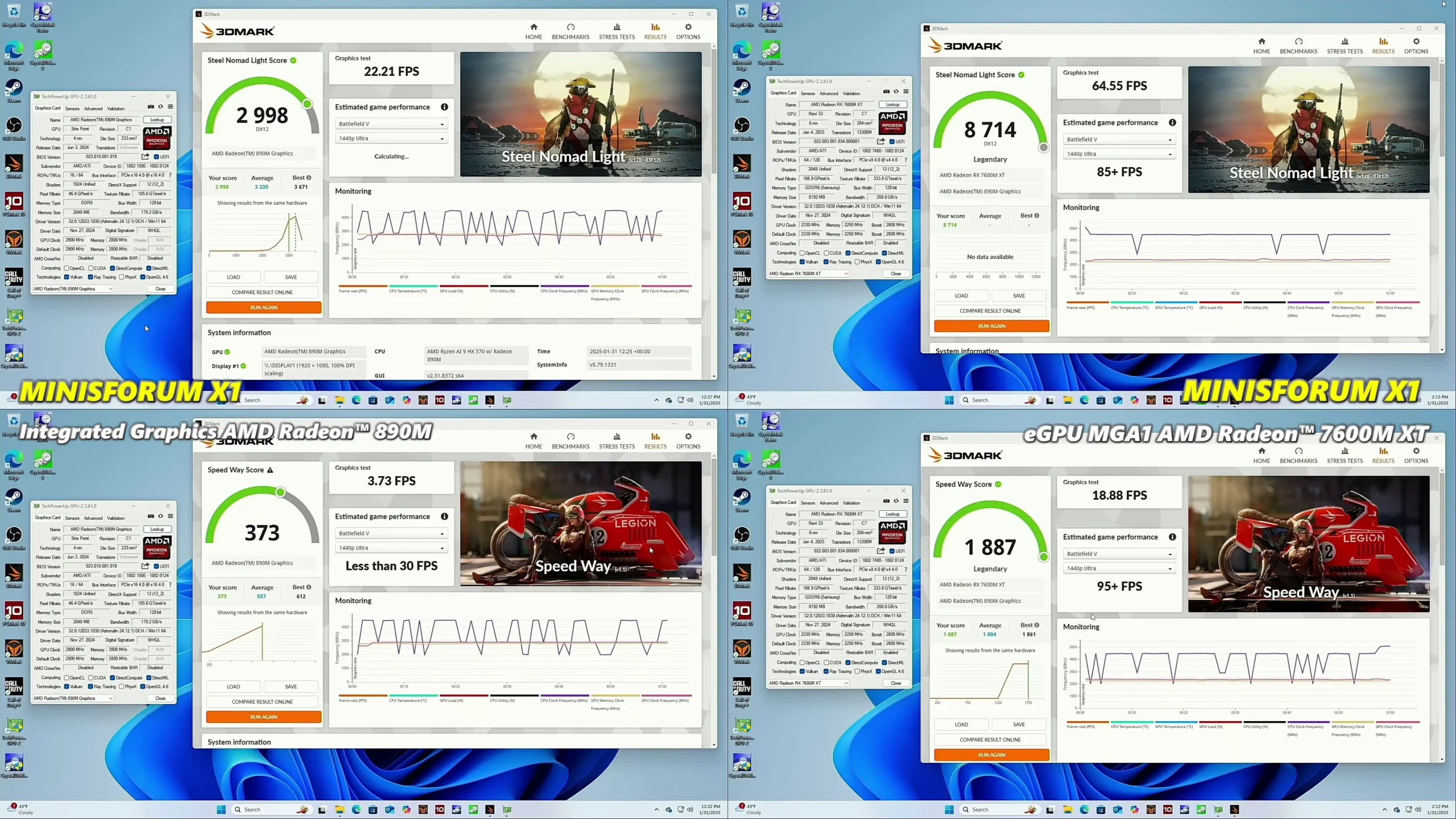
| Feature | Ryzen 7 255 | Ryzen 7 Pro 8845HS | Ryzen AI 9 HX PRO 370 |
|---|---|---|---|
| Architecture | Zen 3+ | Zen 4 | Zen 5 / Zen 5c hybrid |
| Cores / Threads | 8C / 16T | 8C / 16T | 12C / 24T |
| Base / Boost Clock | 3.3 GHz / 4.9 GHz | 3.8 GHz / 5.1 GHz | 2.0 GHz / 5.1 GHz |
| L3 Cache | 16 MB | 16 MB | 24 MB |
| GPU | Radeon 780M (12 CUs) | Radeon 780M (12 CUs) | Radeon 890M (16 CUs) |
| GPU Clock | ~2.5 GHz | Up to 2.7 GHz | Up to 2.9 GHz |
| NPU | UPTO 16 TOPS | upto 16 TOPS | Up to 50 TOPS |
| TDP Range | ~45 W | ~45 W | 28–54 W |
| PCIe Lanes | 20 PCIe Gen 4 | 20 PCIe Gen 4 | 16 PCIe Gen 4 |
| Memory Support | DDR5 (non‑ECC) | DDR5‑5600 ECC | DDR5‑5600 ECC |
Looking deeper at the individual CPUs, their architectures reflect different generational and market goals. The Ryzen 7 255 in the Minisforum N5 is a Zen 3+ part built on a 6 nm process, with a base clock of 3.3 GHz and turbo up to 4.9 GHz. It provides 16 MB of L3 cache and includes integrated Radeon 780M graphics with 12 RDNA 3 compute units. At ~45 W TDP, it is a capable midrange processor for general NAS use but lacks advanced enterprise features like ECC and AI. The Ryzen 7 Pro 8845HS in the WTR Max upgrades to Zen 4 at 4 nm, bumps the base clock to 3.8 GHz while maintaining the same 5.1 GHz boost, and delivers better power efficiency.
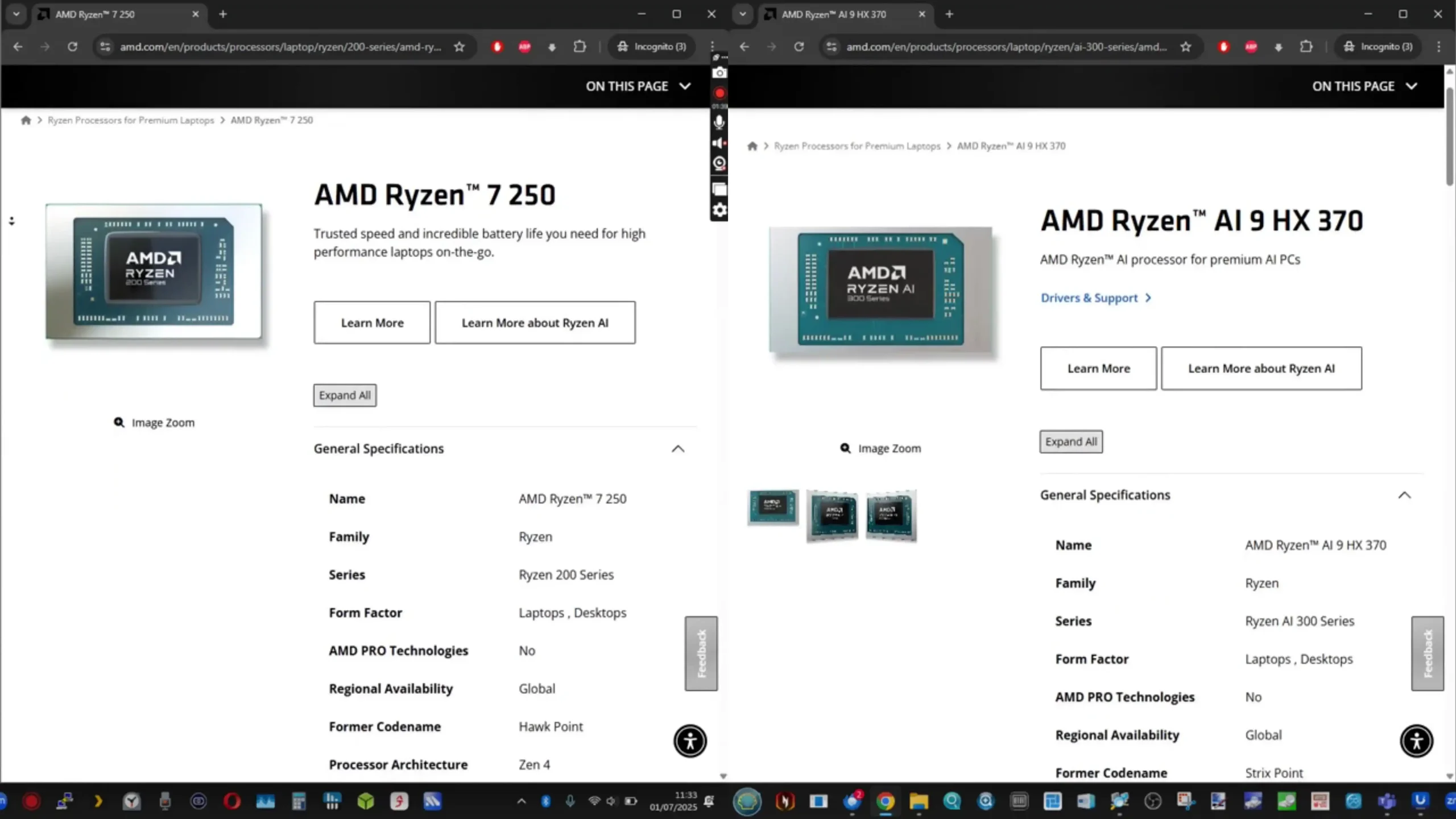
It retains the Radeon 780M GPU but with improved clocks and adds ECC memory support plus 20 PCIe Gen 4 lanes for broader connectivity options. At the top sits the Ryzen AI 9 HX Pro 370 in the N5 Pro, which leverages AMD’s Zen 5/5c hybrid architecture. Despite a lower base clock of 2.0 GHz (favoring efficiency) with the same 5.1 GHz turbo, it increases core count to 12 and thread count to 24, doubles L3 cache to 24 MB, and upgrades the GPU to Radeon 890M with 16 RDNA 3 compute units clocked up to 2.9 GHz. The Pro has a higher rated integrated NPU, capable of 50 TOPS, positioning it as an ideal candidate for on-premises AI inferencing and acceleration workloads, several times higher than the potential 16 TOPS rating on the CPUs of the N5 Standard and WTR ,Max. Its TDP range of 28–54 W also reflects its hybrid design’s balance of power and efficiency, although it offers slightly fewer PCIe lanes (16) than the WTR Max’s 20.
| Aspect | Aoostar WTR Max | Minisforum N5 (Standard) | Minisforum N5 Pro | Best & Why/Note |
|---|---|---|---|---|
| CPU Model | Ryzen 7 Pro 8845HS | Ryzen 7 255 | Ryzen AI 9 HX Pro 370 | N5 Pro — more cores, AI acceleration |
| Cores/Threads | 8C/16T | 8C/16T | 12C/24T | N5 Pro — highest core count |
| ECC Memory Support | ✓ | ✗ | ✓ | Tie between Aoostar & N5 Pro |
| Max RAM | 128GB DDR5 | 96GB DDR5 | 96GB DDR5 | Aoostar WTR Max — higher maximum RAM ceiling |
| AI NPU | ✓ (16 TOPS) | ✓ (16 TOPS) | ✓ (50 TOPS) | N5 Pro — higher TOPS rating |
In terms of choosing the best fit, the Minisforum N5 Pro stands out as the premium solution, delivering unmatched compute performance, higher concurrency, and dedicated AI hardware. Users deploying AI workloads, large-scale VM clusters, or needing the absolute highest processing headroom will find its premium justified. The Aoostar WTR Max, while trailing the N5 Pro in cores, threads, and AI acceleration, offers a more balanced middle-ground option: solid Zen 4 performance, ECC support, and greater maximum memory (128 GB) make it ideal for reliability-conscious users and memory-hungry environments at a lower cost than the N5 Pro. The standard N5 occupies the entry-level tier, with sufficient power for typical NAS and light VM duties but no ECC and limited future-proofing compared to its peers. In short, the N5 Pro dominates this category for high-end, AI-driven use cases, the Aoostar WTR Max excels for dependable performance and larger memory footprints at midrange pricing, and the standard N5 remains the best value for modest, general-purpose NAS applications.
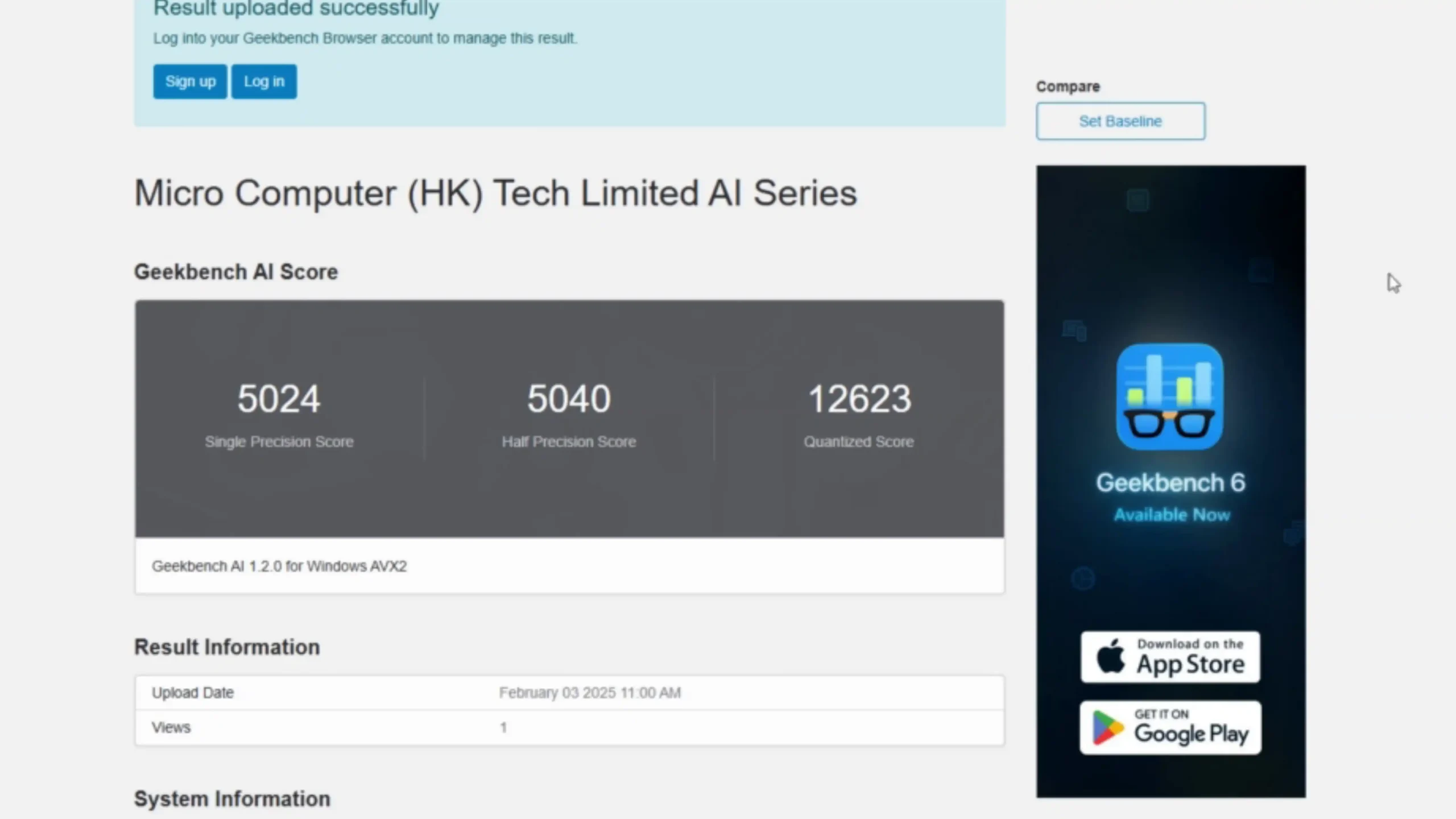
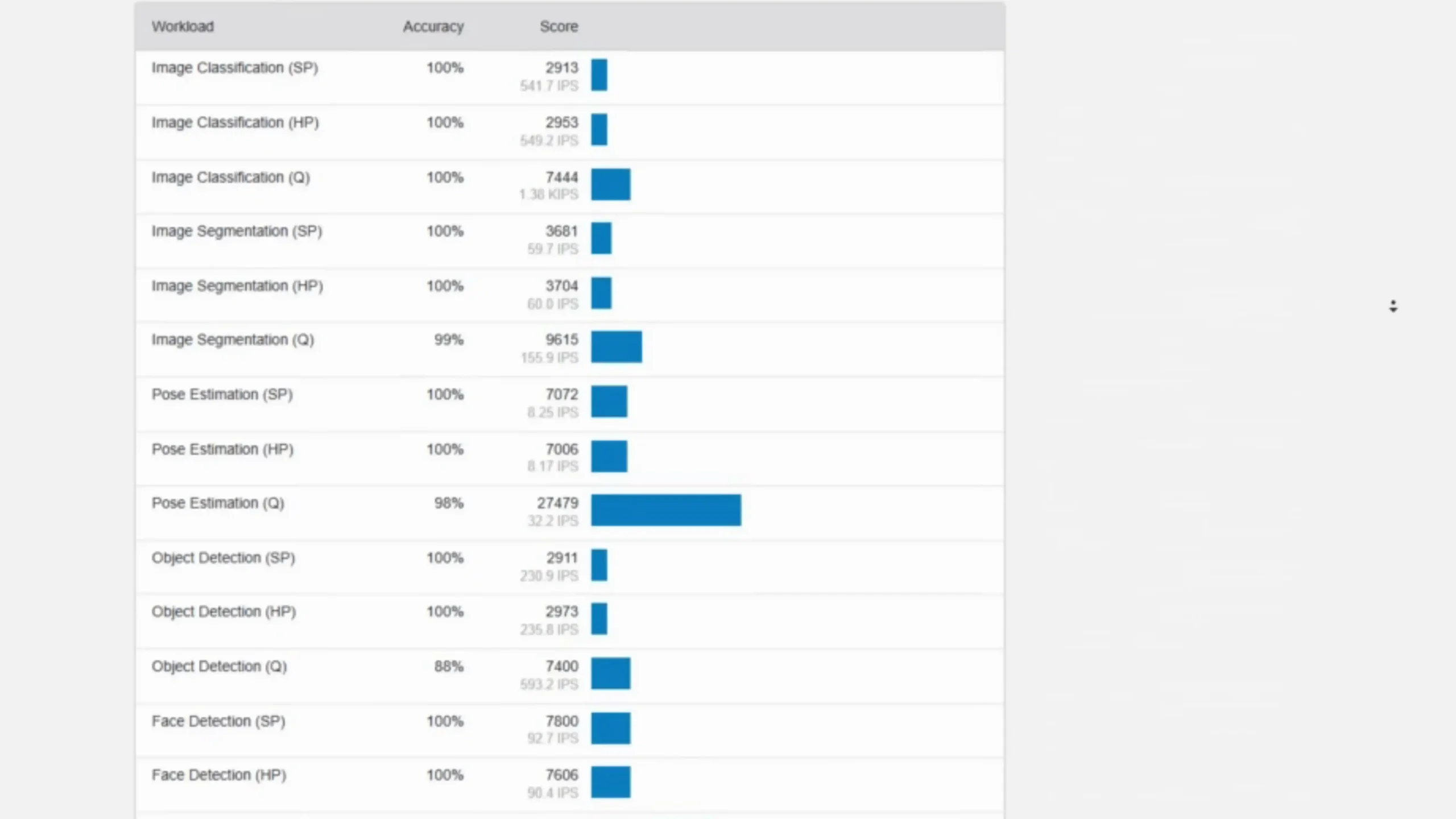
Both the Aoostar WTR Max and the Minisforum N5 series aim to strike a balance between capable performance, manageable power consumption, and acceptable noise levels, though they adopt distinct philosophies around power delivery and cooling. Both the Minisforum N5 and the Aoostar WTR Max feature external power supply unit (PSUs), of a pretty hefty 280W – these will almost certainly not be for everyone, but do allow for both systems to maintain a decent small-scale (however, be aware that they DO get warm)!
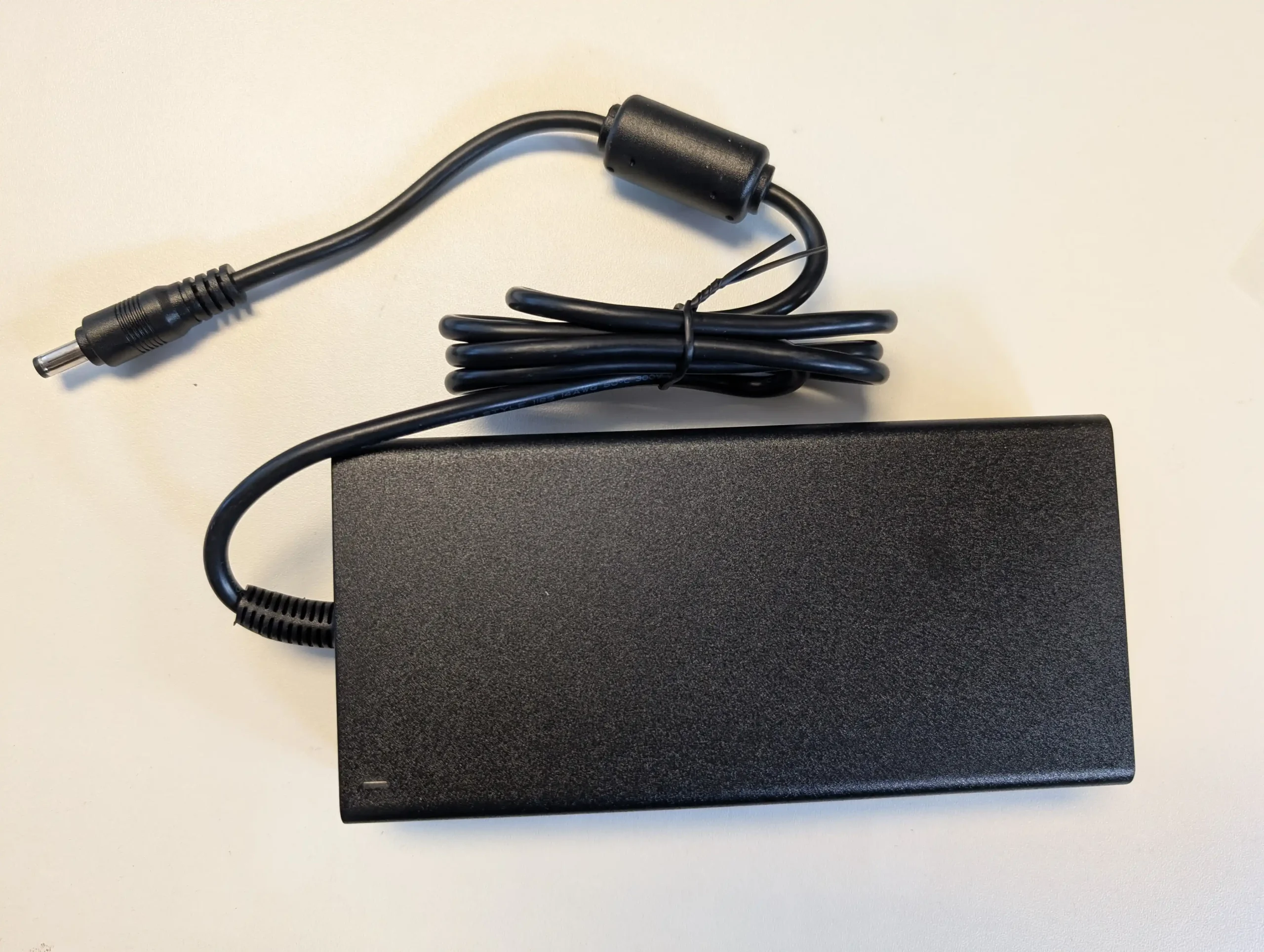 |
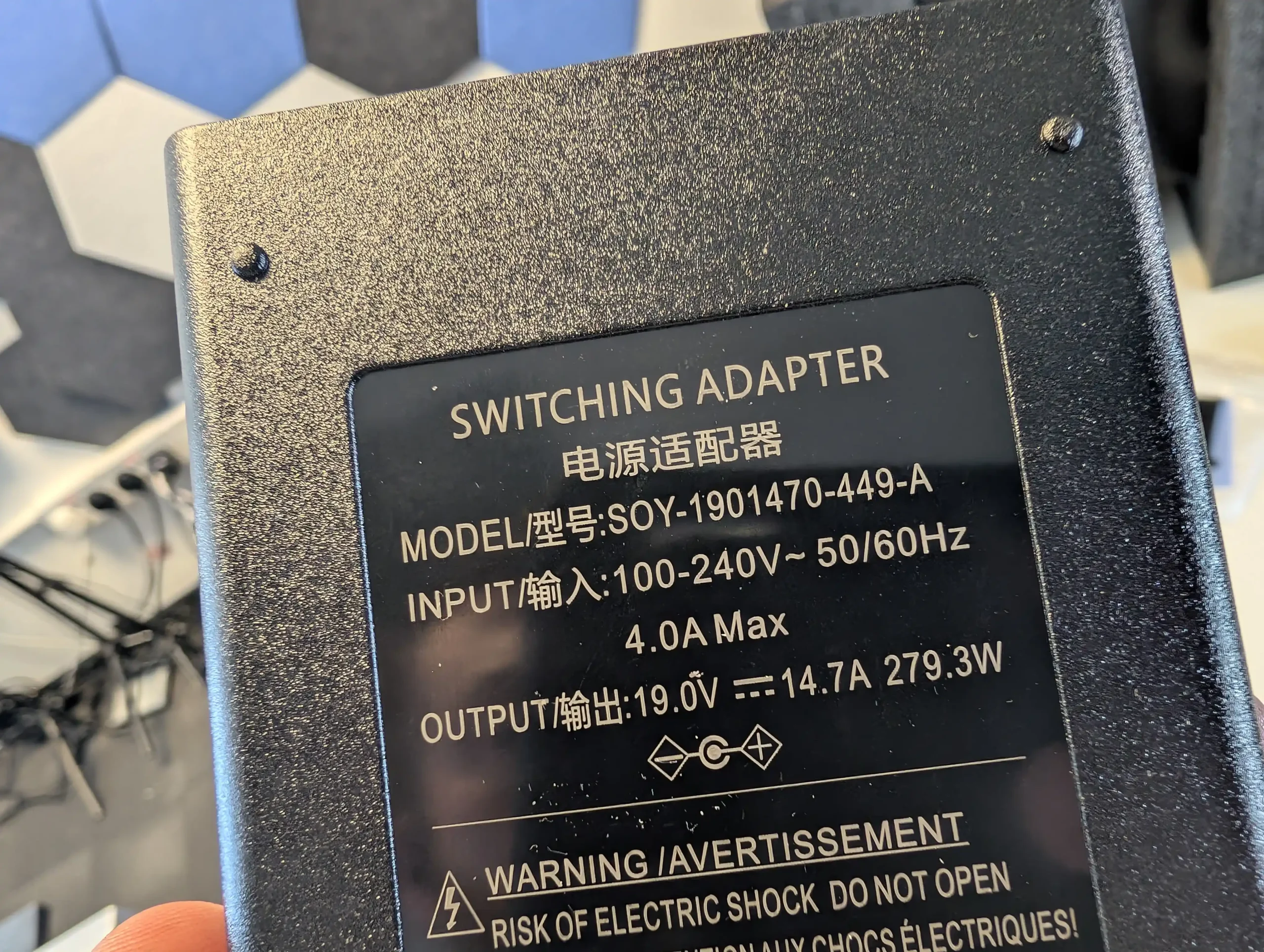 |
In terms of measured power consumption, the WTR Max idles at approximately 32–34 W even when fully populated with drives, and it ramps up to around 73–89 W under heavy load, such as during multi-VM and high-throughput testing.
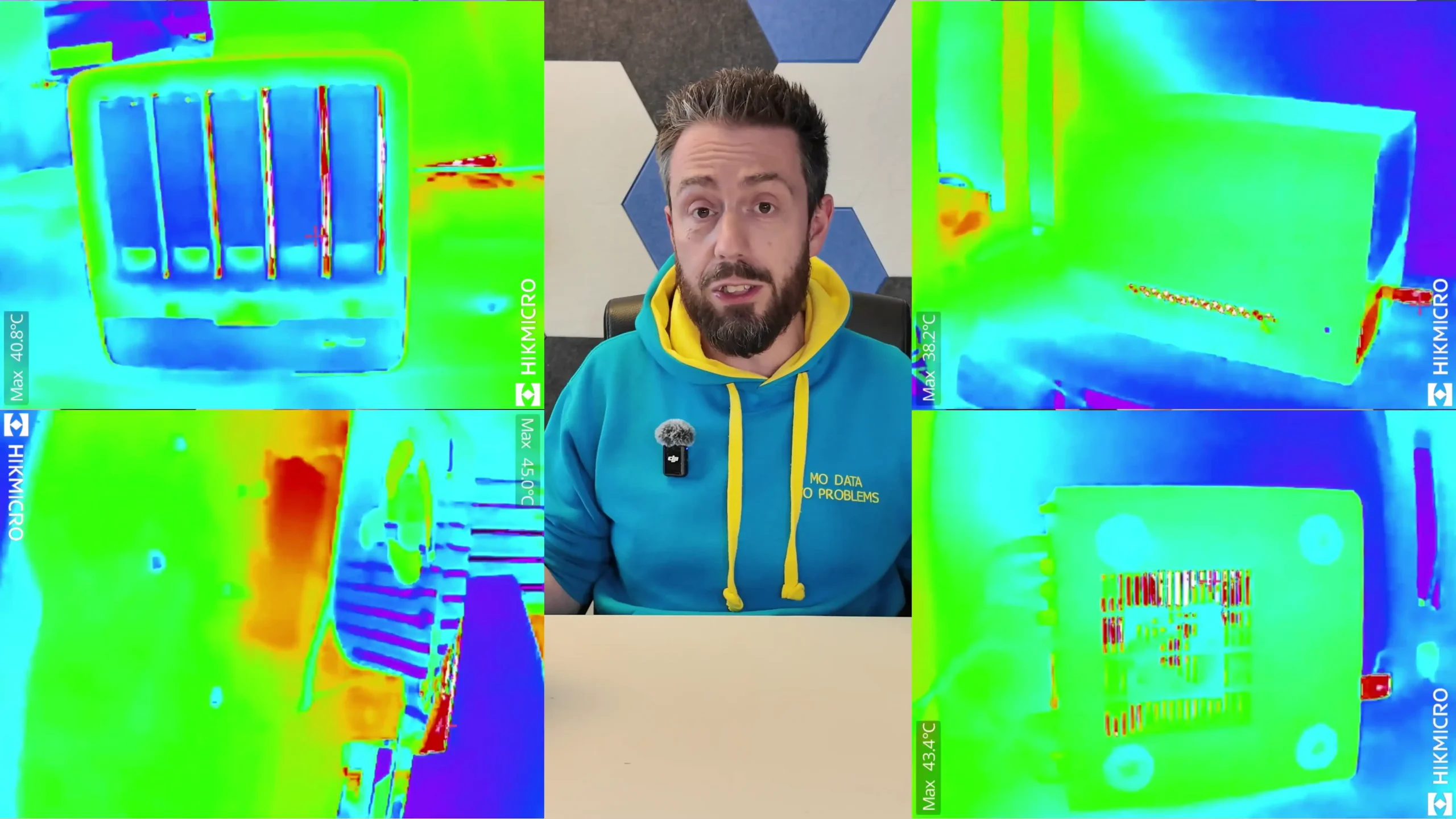
The chassis design favors airflow with strategically placed ventilation on the sides, rear, and bottom, a pair of large rear exhaust fans, and a dedicated internal fan that focuses specifically on the hard drive bays. This combination keeps temperatures steady under pressure, and even during sustained activity, noise output remains modest — around 35 dBA at idle and typically peaking near 44 dBA when heavily loaded, which is relatively quiet given its drive density and active cooling.
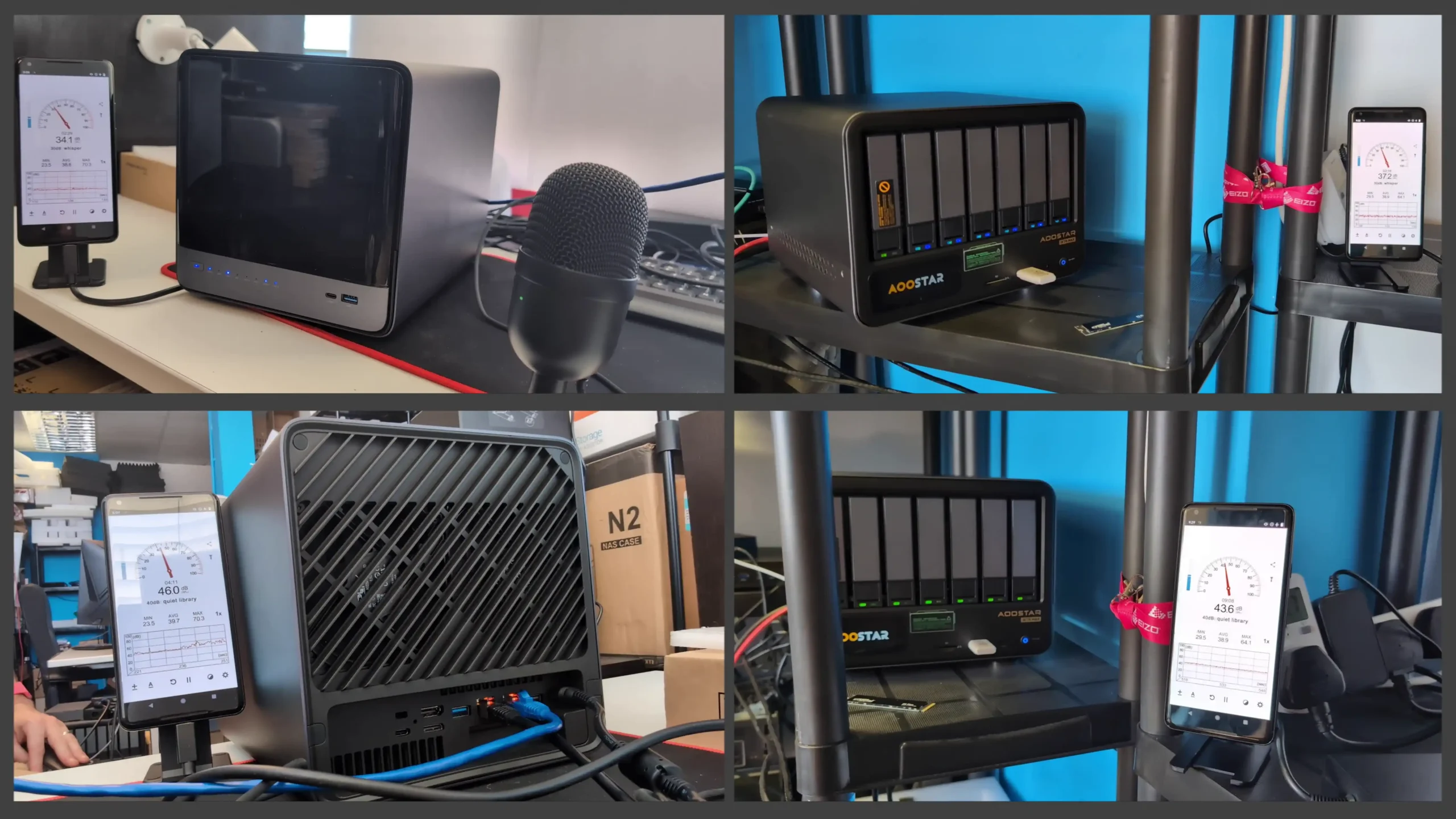
| Aspect | Aoostar WTR Max | Minisforum N5 (Standard) | Minisforum N5 Pro | Best & Why/Note |
|---|---|---|---|---|
| PSU Type | External | External | External | No Difference |
| Peak Power Consumption | ~73–89W | ~80W | ~80W | Tie — both in similar range |
| Idle Power Consumption | ~32–34W | ~32–34W | ~32–34W | Tie — similar efficiency |
| Noise at Idle | ~35 dBA | ~32–34 dBA | ~32–34 dBA | N5/N5 Pro — slightly quieter at idle |
| Noise at Load | ~44 dBA | ~48–51 dBA | ~48–51 dBA | Aoostar WTR Max — quieter at load |
The Minisforum N5 series has similar Power usage at idle to the Aoostar, sitting at 32–34 W with a standard configuration, and peak draw during demanding scenarios — such as AI inference on the N5 Pro or intensive virtualized workloads — topped out around 80 W. The N5 chassis relies on a refined internal cooling setup, with a base-mounted intake fan and two rear exhaust fans, arranged to direct airflow efficiently from front to back through the components. While thermally effective, this setup tends to produce slightly higher maximum noise than the WTR Max, registering 48–51 dBA during sustained full-load operation. At idle, the Minisforum systems are competitive, staying quiet at roughly 32–34 dBA, but the difference becomes more noticeable when fully stressed over longer periods.
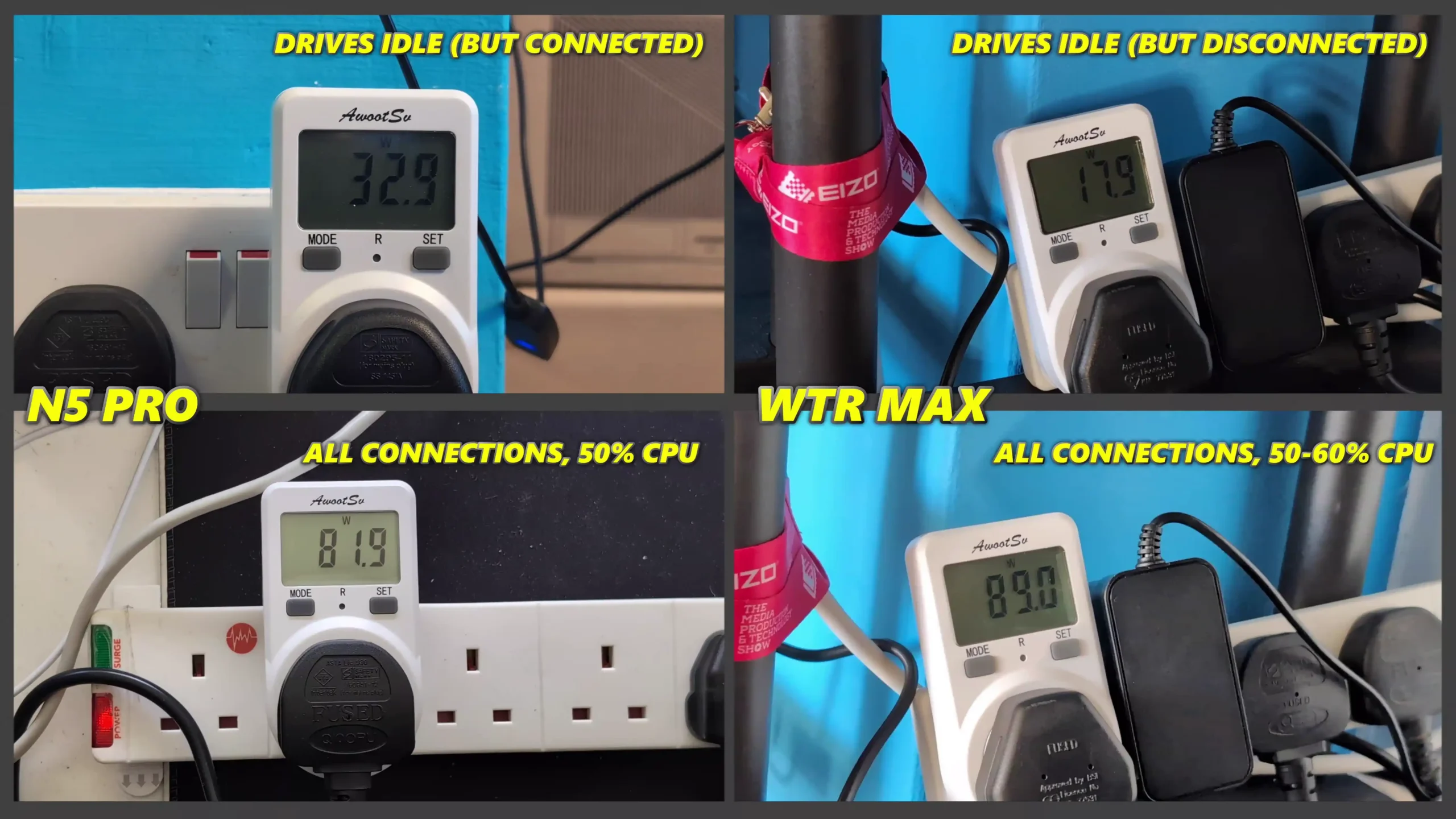
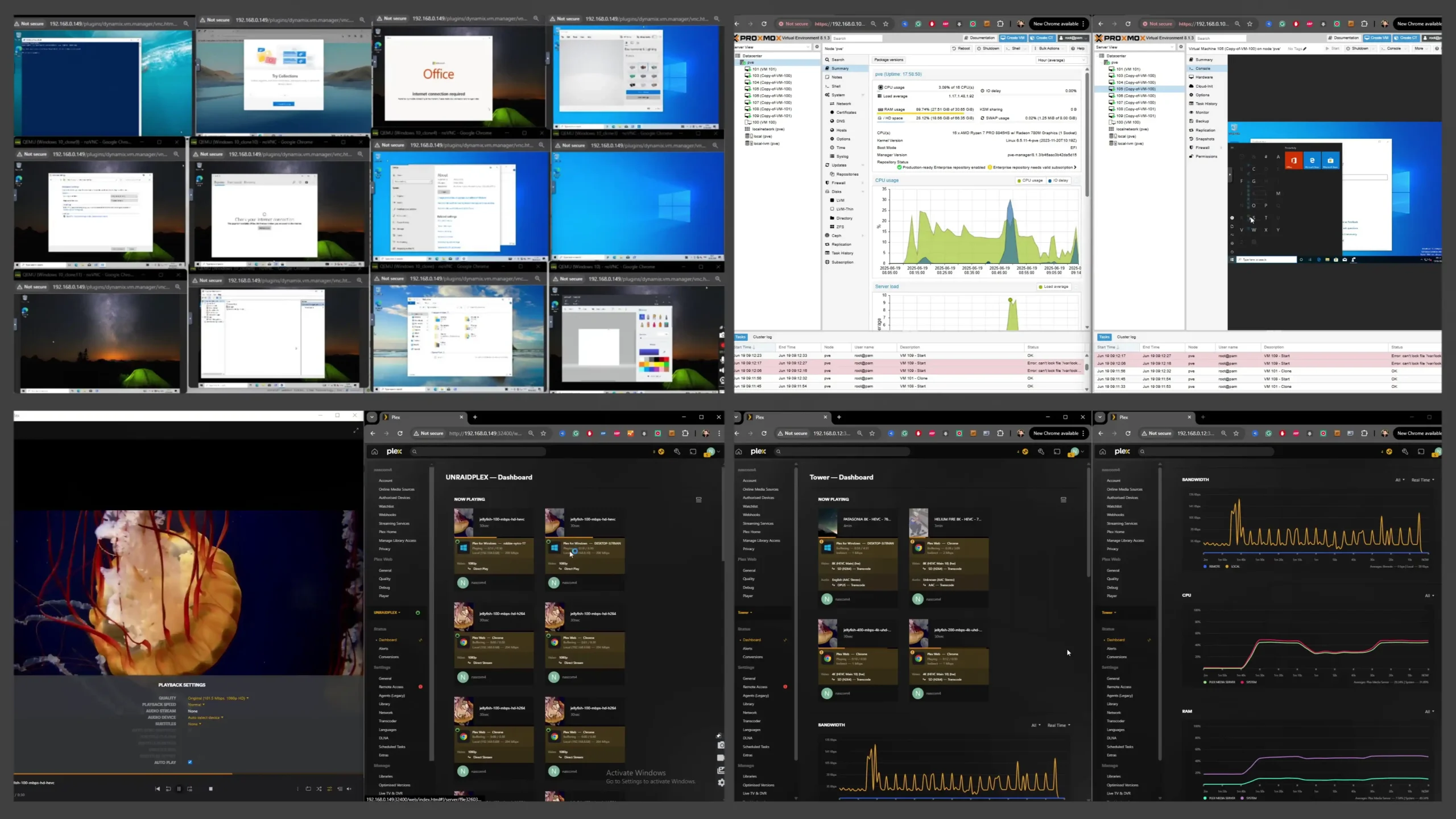
In reviewing the Aoostar WTR Max and the Minisforum N5 series—including both the standard and Pro models—it becomes clear that each system was designed with a distinct user profile and set of priorities in mind, making direct comparisons nuanced rather than absolute. The Aoostar WTR Max distinguishes itself with a compelling balance of high storage density, strong CPU performance featuring ECC memory support, excellent chassis ventilation and a competitive mid-range price point.
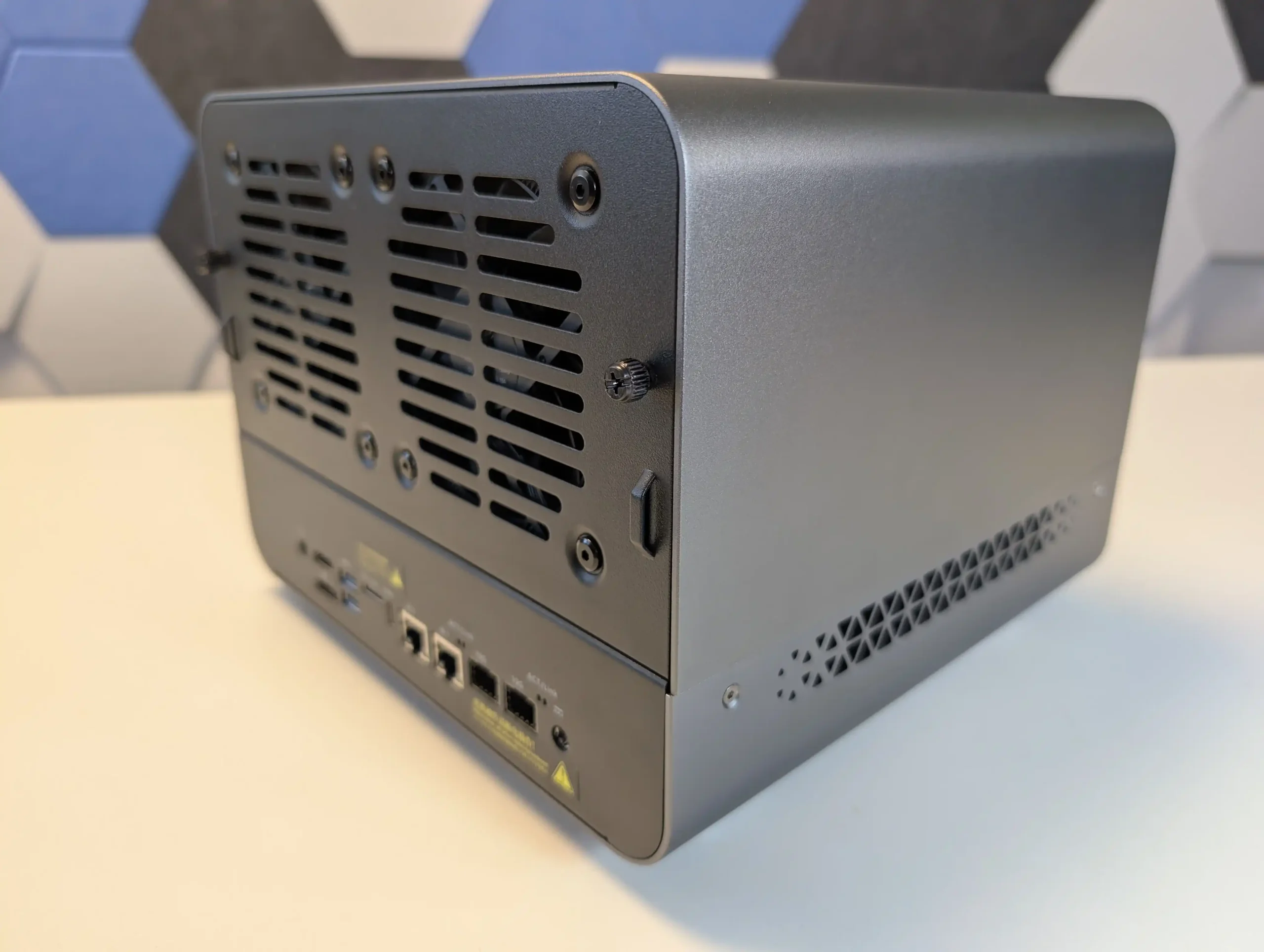 |
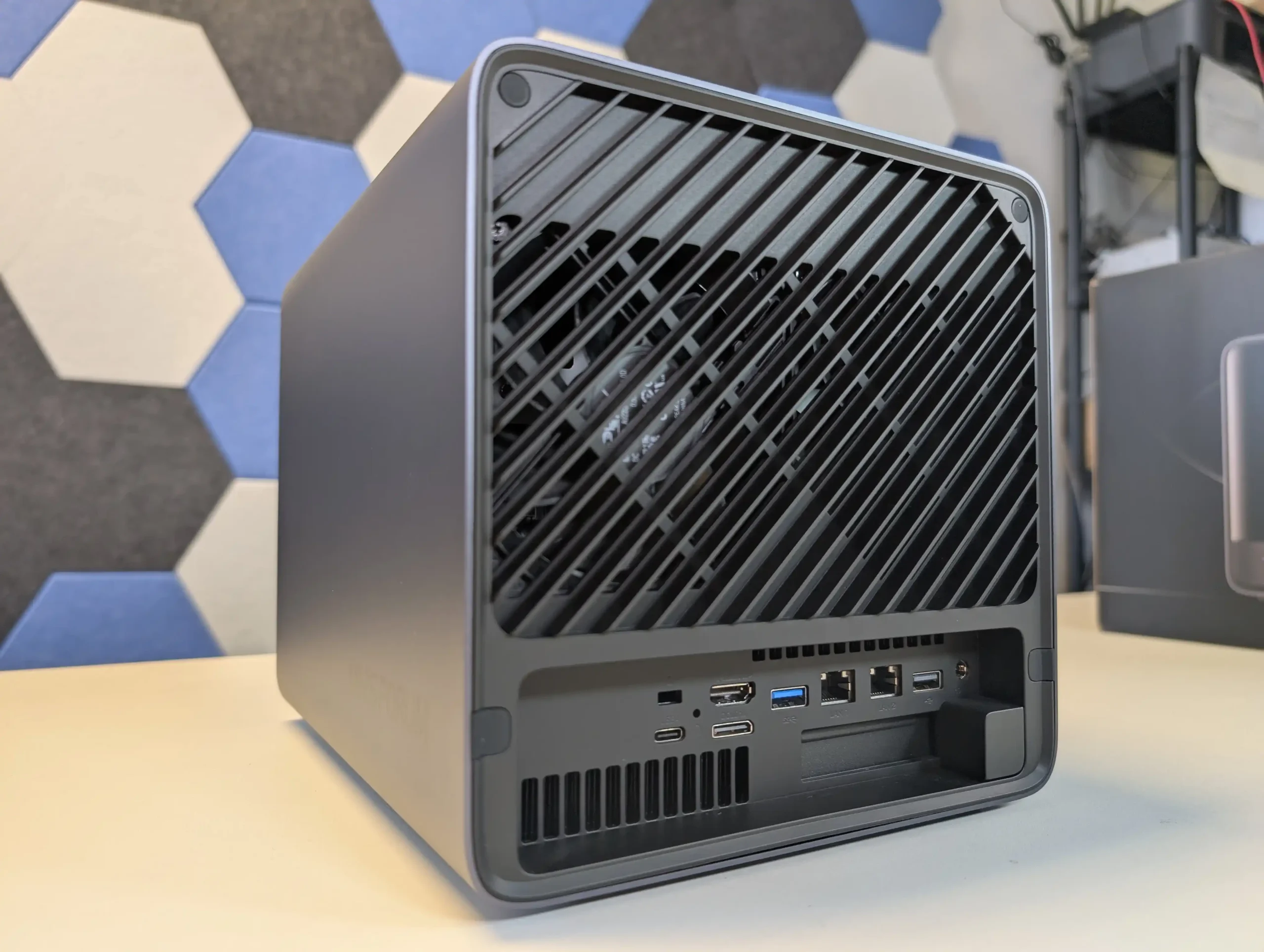 |
Its combination of six SATA bays, five M.2 slots, quiet operation under sustained loads, and a tidy all-in-one form factor appeals to users who value storage flexibility, operational efficiency, and simplicity in deployment. The Minisforum N5 standard model carves out its niche as an affordable entry point for those with lighter needs—delivering solid, modern NAS performance in a compact chassis at the lowest price of the three. At the other end of the spectrum, the Minisforum N5 Pro targets advanced power users, offering the AI‑accelerated Ryzen AI 9 HX Pro 370 processor, ECC memory capability, and unmatched multi-threaded and inference performance, all of which position it squarely in the high-end category for workloads like intensive virtualization, heavy concurrent tasks, and AI-assisted applications. For those specific use cases, the N5 Pro’s premium price is justified by its unmatched compute capabilities and feature set.
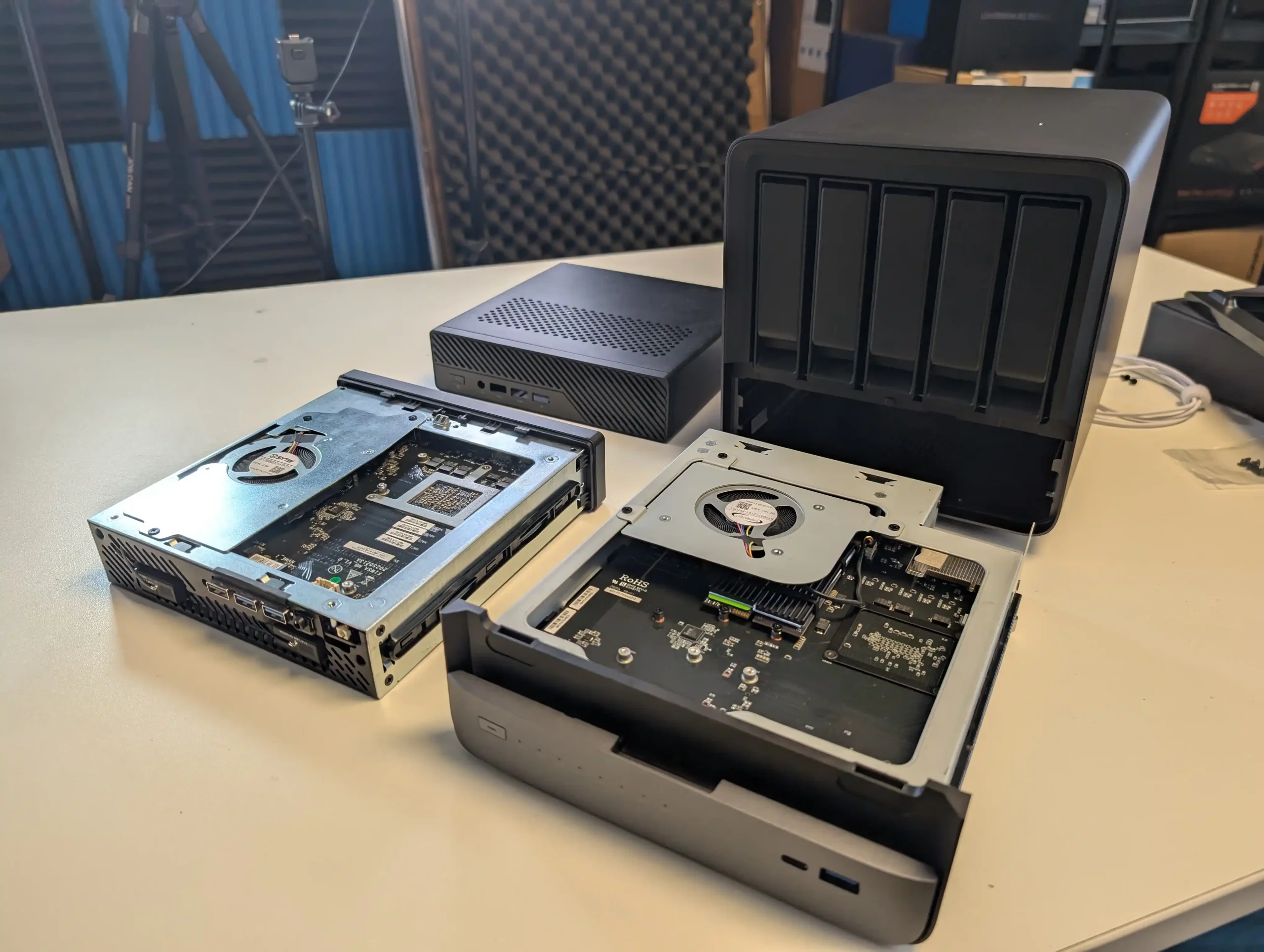
Ultimately, choosing between these systems requires a careful assessment of workload demands, expansion expectations, and budget constraints. The Aoostar WTR Max delivers a well-rounded combination of storage capacity, compute power, noise and thermal efficiency, and ease of deployment at a price that is reasonable for most advanced home and small business NAS environments. Its blend of practical features and robust hardware makes it especially attractive for users who prioritize storage-heavy applications and quieter, more efficient operation. The Minisforum N5 standard model is best suited for users with modest requirements and tight budgets, offering a clean, capable NAS platform for general use without the advanced features or costs associated with its Pro sibling. The N5 Pro, however, remains the clear choice for users who need the highest possible performance, AI‑specific capabilities, and maximum concurrency—provided they are willing to pay a premium for these cutting-edge benefits. In short, while all three systems deliver strong value in their respective niches, the Aoostar WTR Max arguably offers the most versatile and cost-effective package for typical NAS workloads, striking a smart balance between affordability, capacity, and performance.
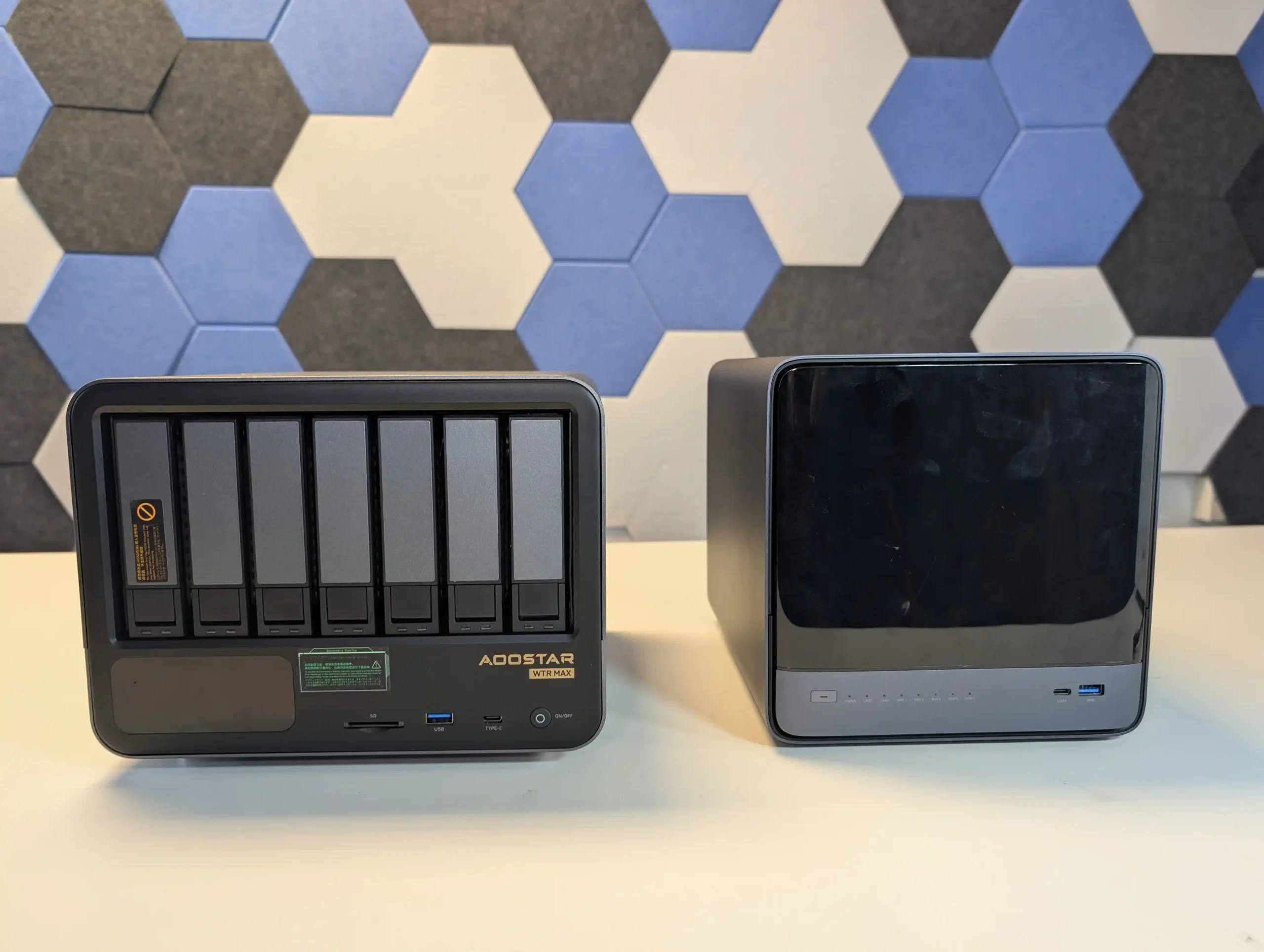
| Category | Best Choice | Reasoning |
|---|---|---|
| Price (Value for Money) | Minisforum N5 (Standard) | Lowest price while delivering competent NAS performance |
| Overall Storage Capacity | Aoostar WTR Max | More bays and better storage flexibility (11 drives total) |
| Ease of Maintenance & Design | Minisforum N5 / N5 Pro | Slide-out cage, cleaner internal layout, easier servicing |
| Connectivity Versatility | Minisforum N5 / N5 Pro | PCIe slot, USB4, OCuLink, balanced copper networking |
| SFP+ Fiber Networking | Aoostar WTR Max | Only system offering dual 10GbE SFP+ ports |
| Compute Power & AI | Minisforum N5 Pro | 12 cores, 24 threads, 50 TOPS NPU, ECC support |
| Noise Under Heavy Load | Aoostar WTR Max | Better ventilation, lower load noise levels |
| Best All-Rounder | Aoostar WTR Max | Balanced price, storage, performance, and cooling |
| Power User / VM & AI Workloads | Minisforum N5 Pro | High concurrency, AI acceleration, virtualization |
 |
 |
||
| Check Amazon for the WTR Pro MAX | Check AliExpress for the WTR Pro MAX | Check Amazon for the Minisforum N5 | Check AliExpress for the Minisforum N5 |
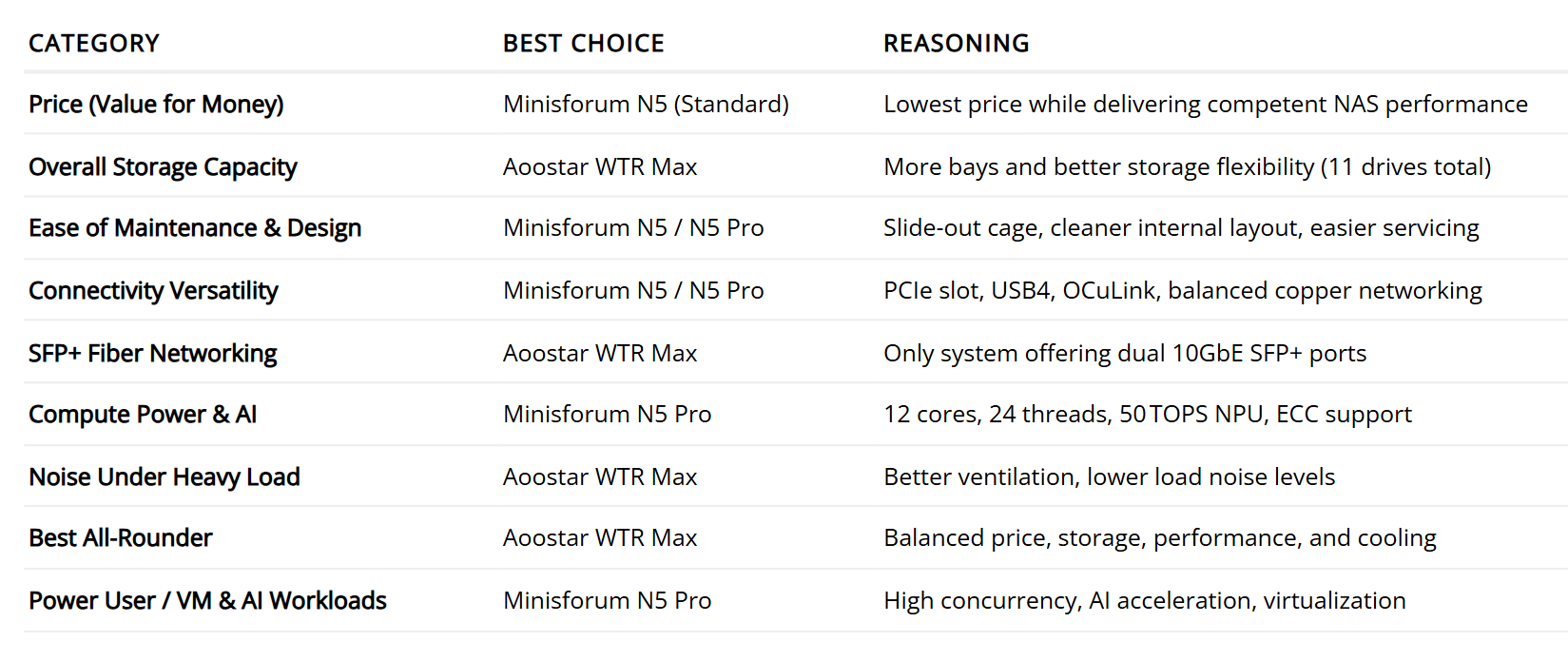
 SUBSCRIBE TO OUR NEWSLETTER
SUBSCRIBE TO OUR NEWSLETTER 
 Join Inner Circle
Join Inner Circle  Subscribe
Subscribe
This description contains links to Amazon. These links will take you to some of the products mentioned in today's content. As an Amazon Associate, I earn from qualifying purchases. Visit the NASCompares Deal Finder to find the best place to buy this device in your region, based on Service, Support and Reputation - Just Search for your NAS Drive in the Box Below
 Need Help?
Where possible (and where appropriate) please provide as much information about your requirements, as then I can arrange the best answer and solution to your needs. Do not worry about your e-mail address being required, it will NOT be used in a mailing list and will NOT be used in any way other than to respond to your enquiry.
[contact-form-7]
Need Help?
Where possible (and where appropriate) please provide as much information about your requirements, as then I can arrange the best answer and solution to your needs. Do not worry about your e-mail address being required, it will NOT be used in a mailing list and will NOT be used in any way other than to respond to your enquiry.
[contact-form-7]
 Ko-fi or old school Paypal. Thanks!To find out more about how to support this advice service check HEREIf you need to fix or configure a NAS, check Fiver
Have you thought about helping others with your knowledge? Find Instructions Here
Ko-fi or old school Paypal. Thanks!To find out more about how to support this advice service check HEREIf you need to fix or configure a NAS, check Fiver
Have you thought about helping others with your knowledge? Find Instructions Here

|
 |
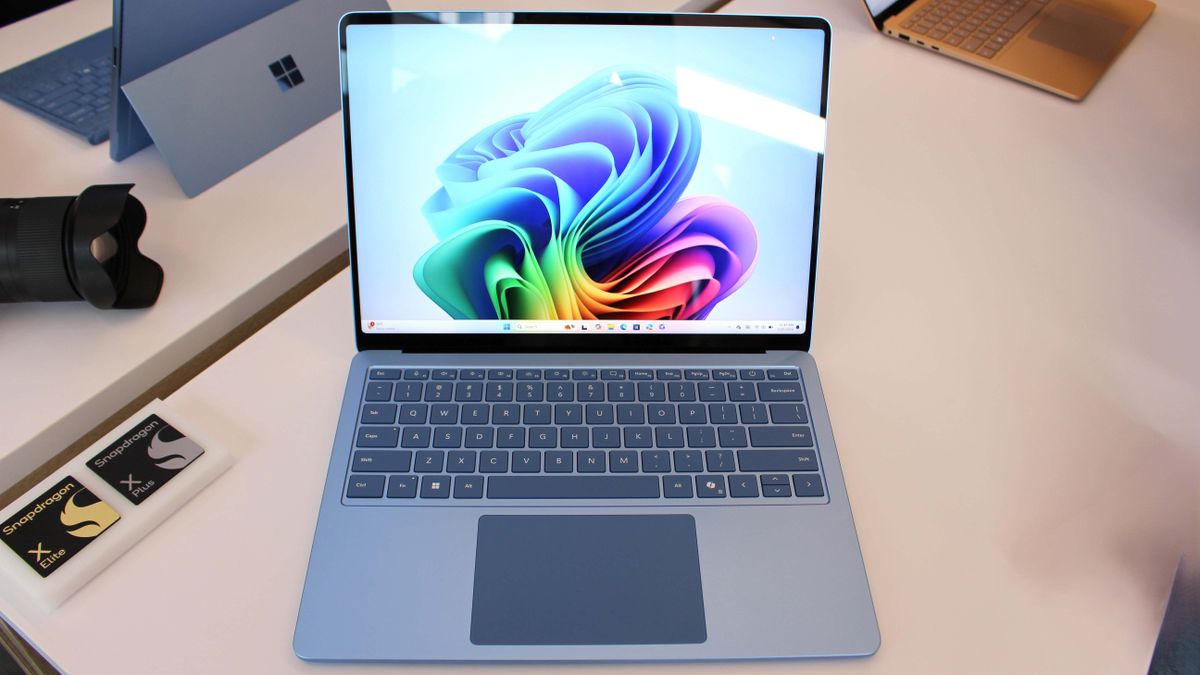
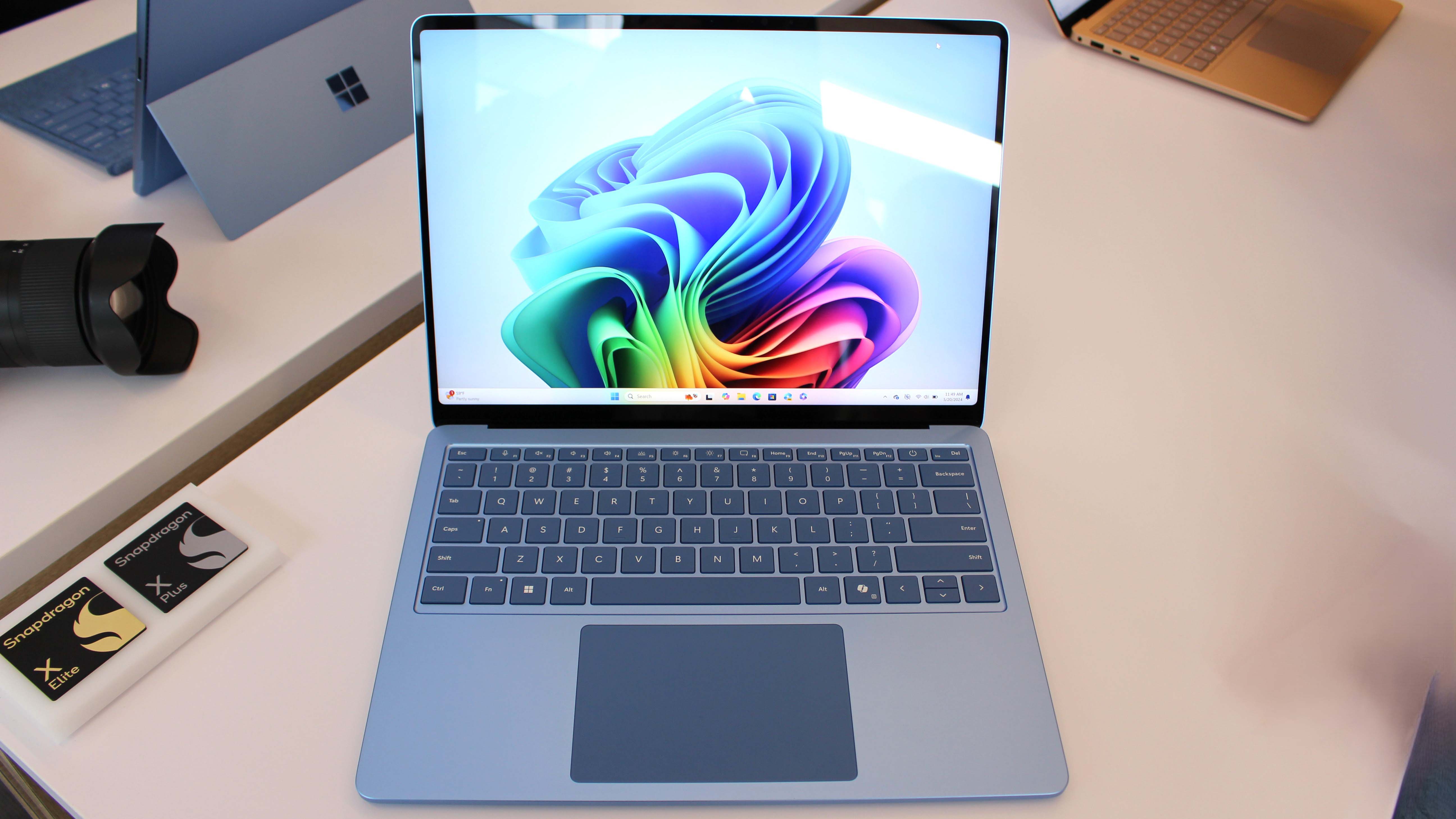
© Windows Central

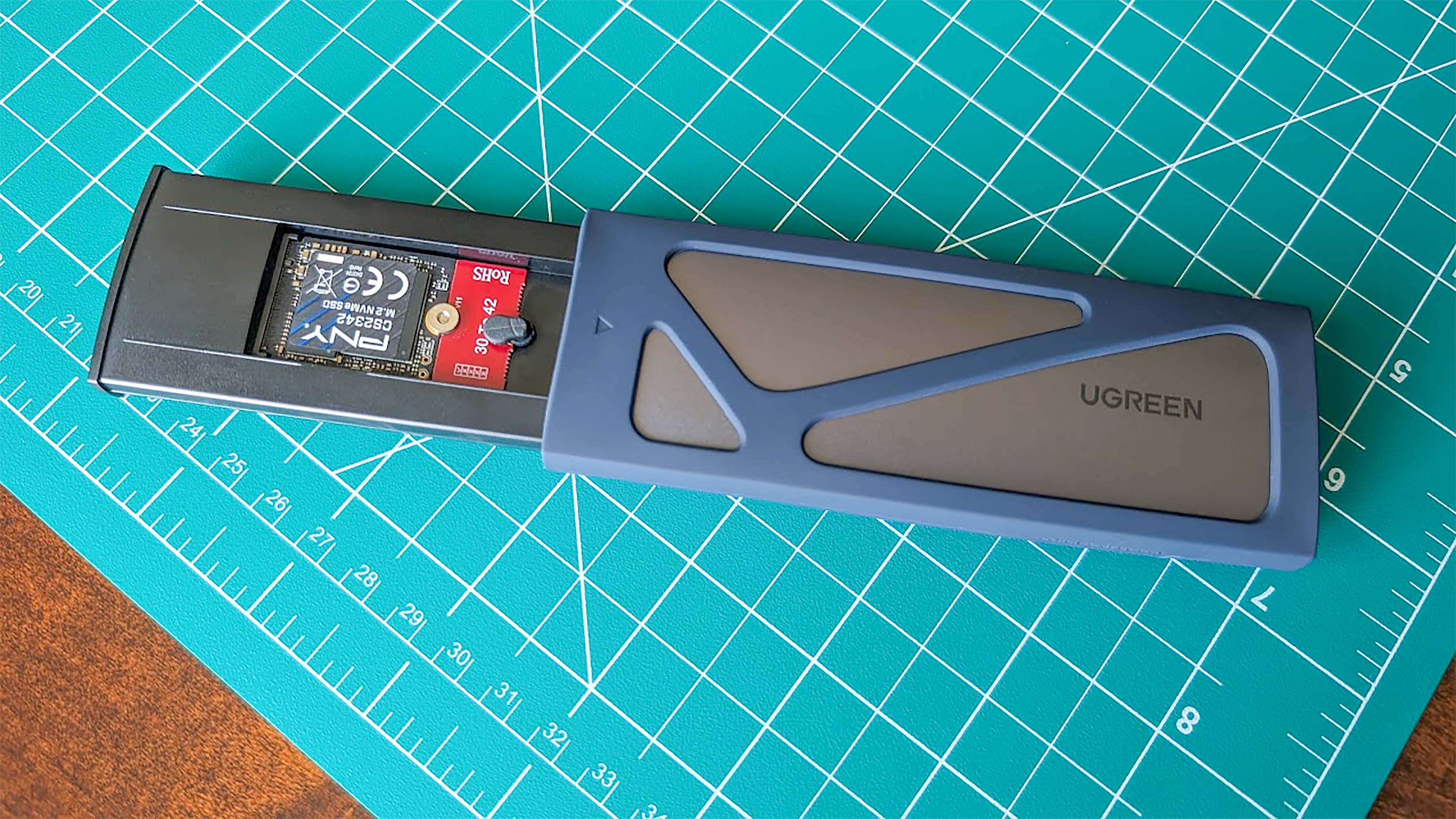
© Rebecca Spear / Windows Central

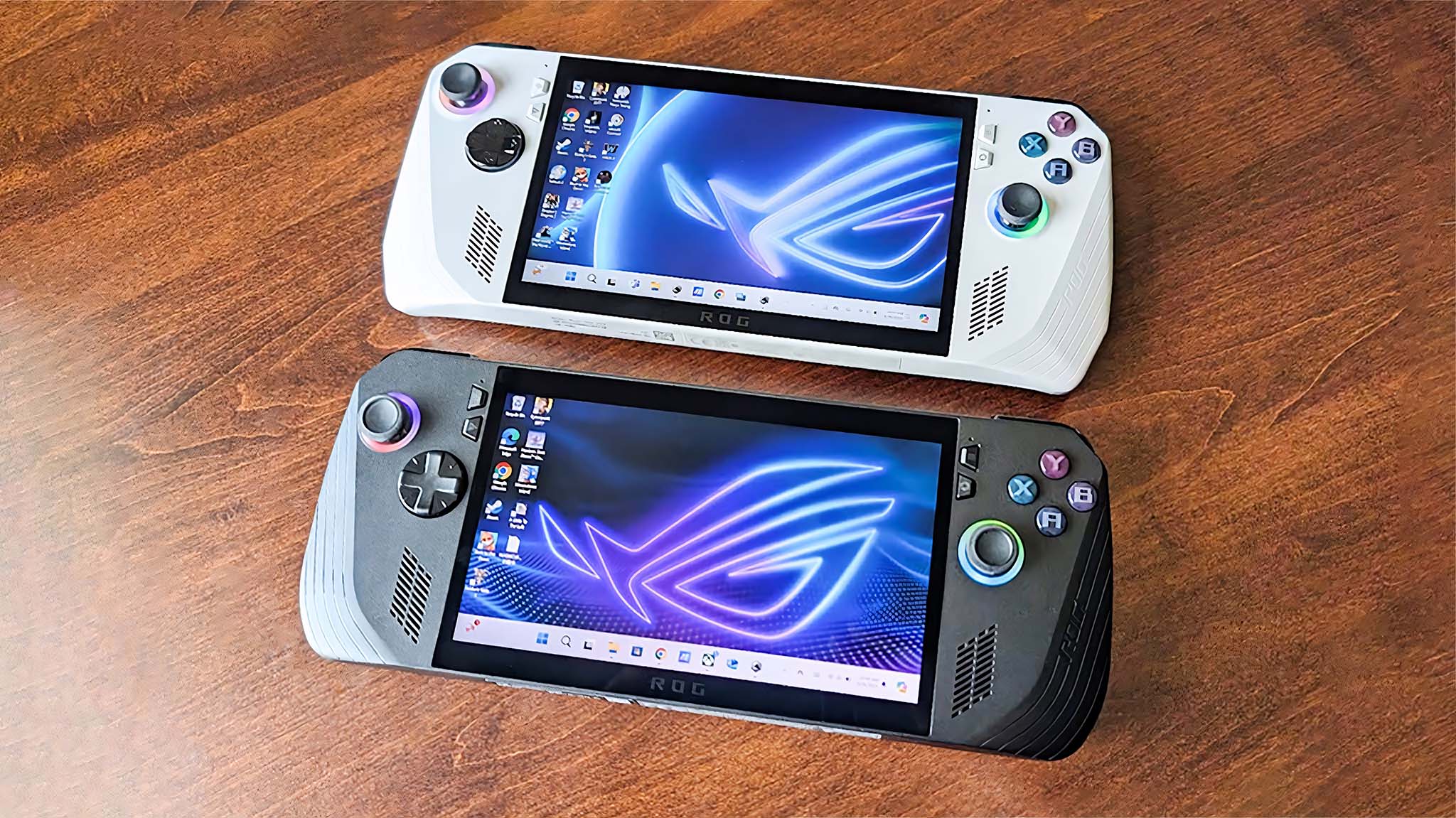
© Rebecca Spear / Windows Central
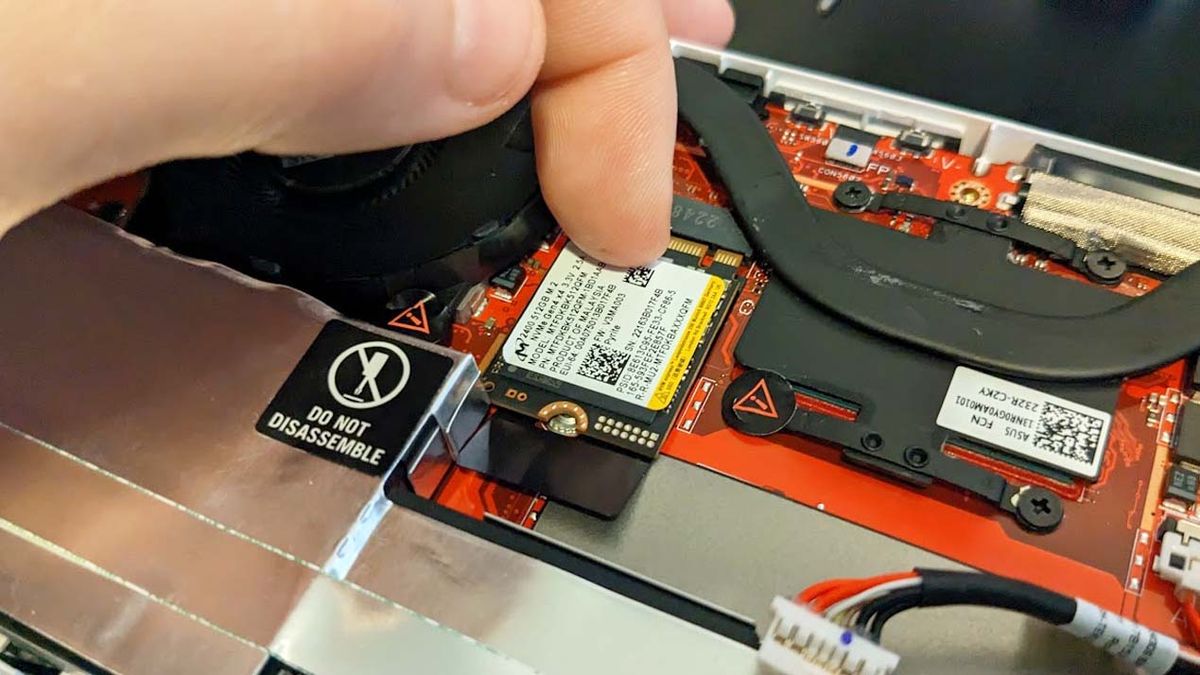
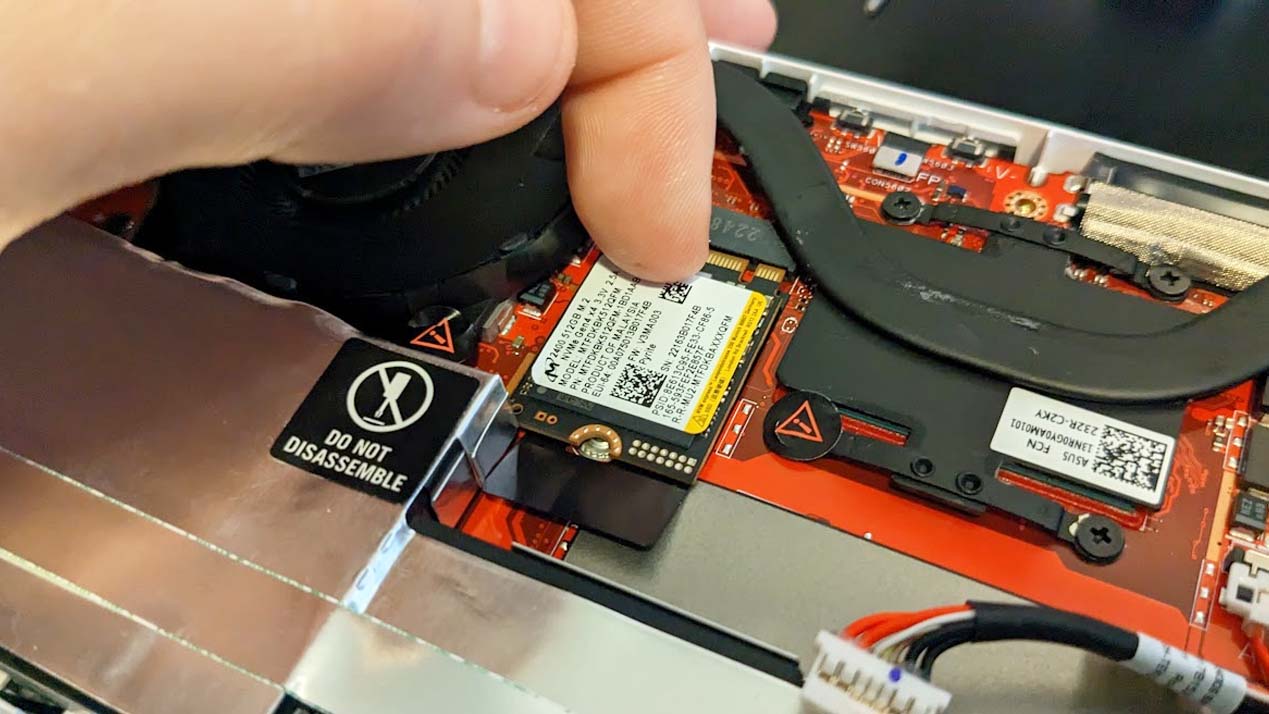
© Rebecca Spear / Windows Central
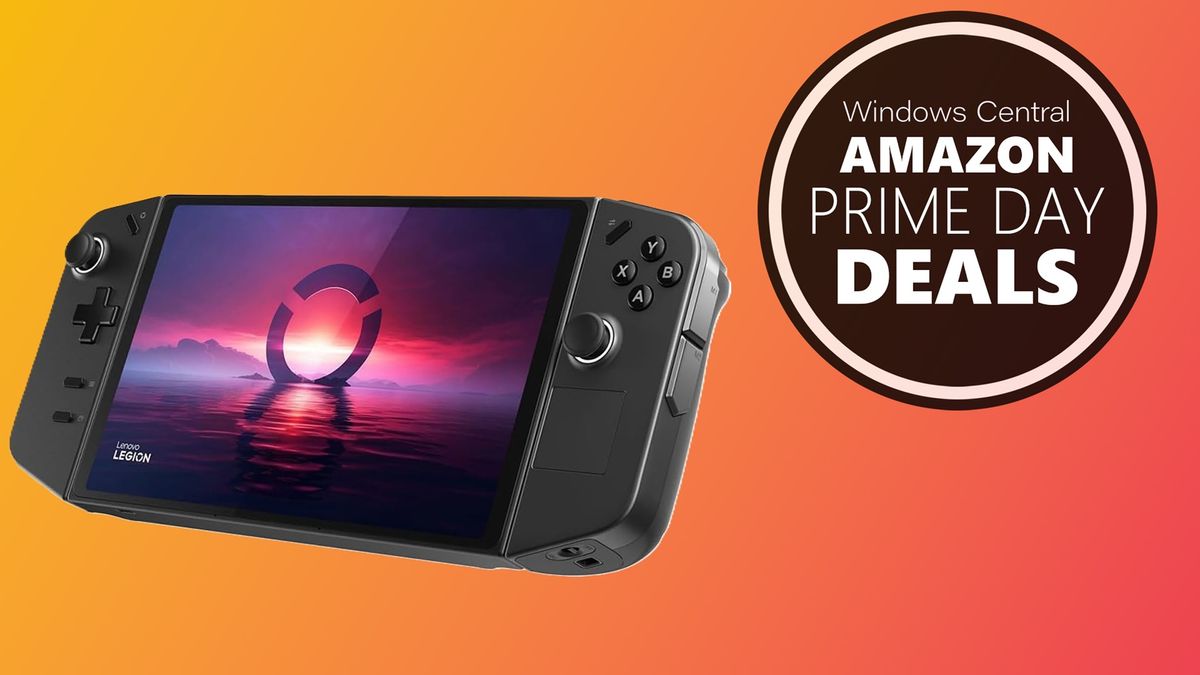
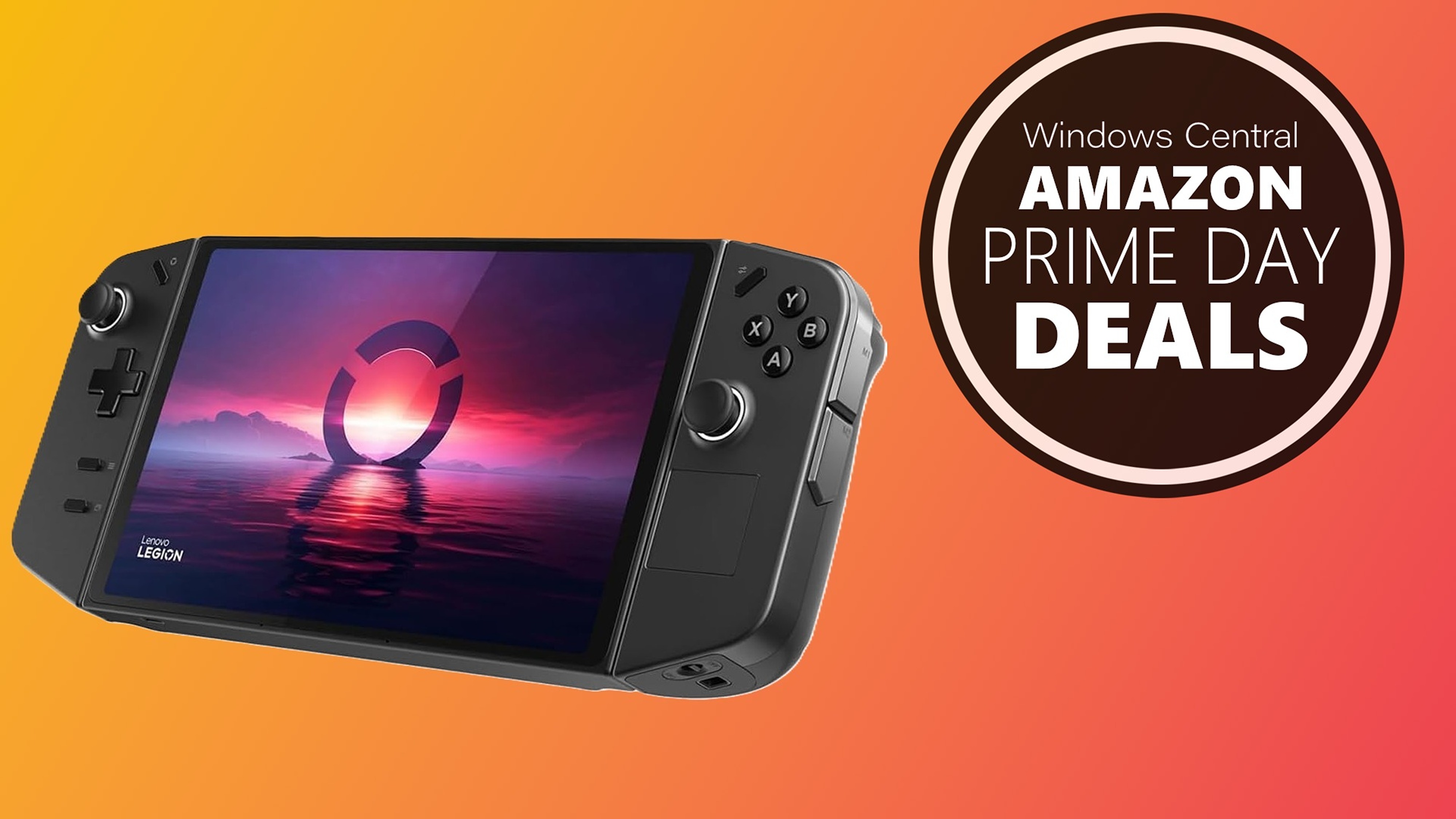
© Windows Central | Lenovo

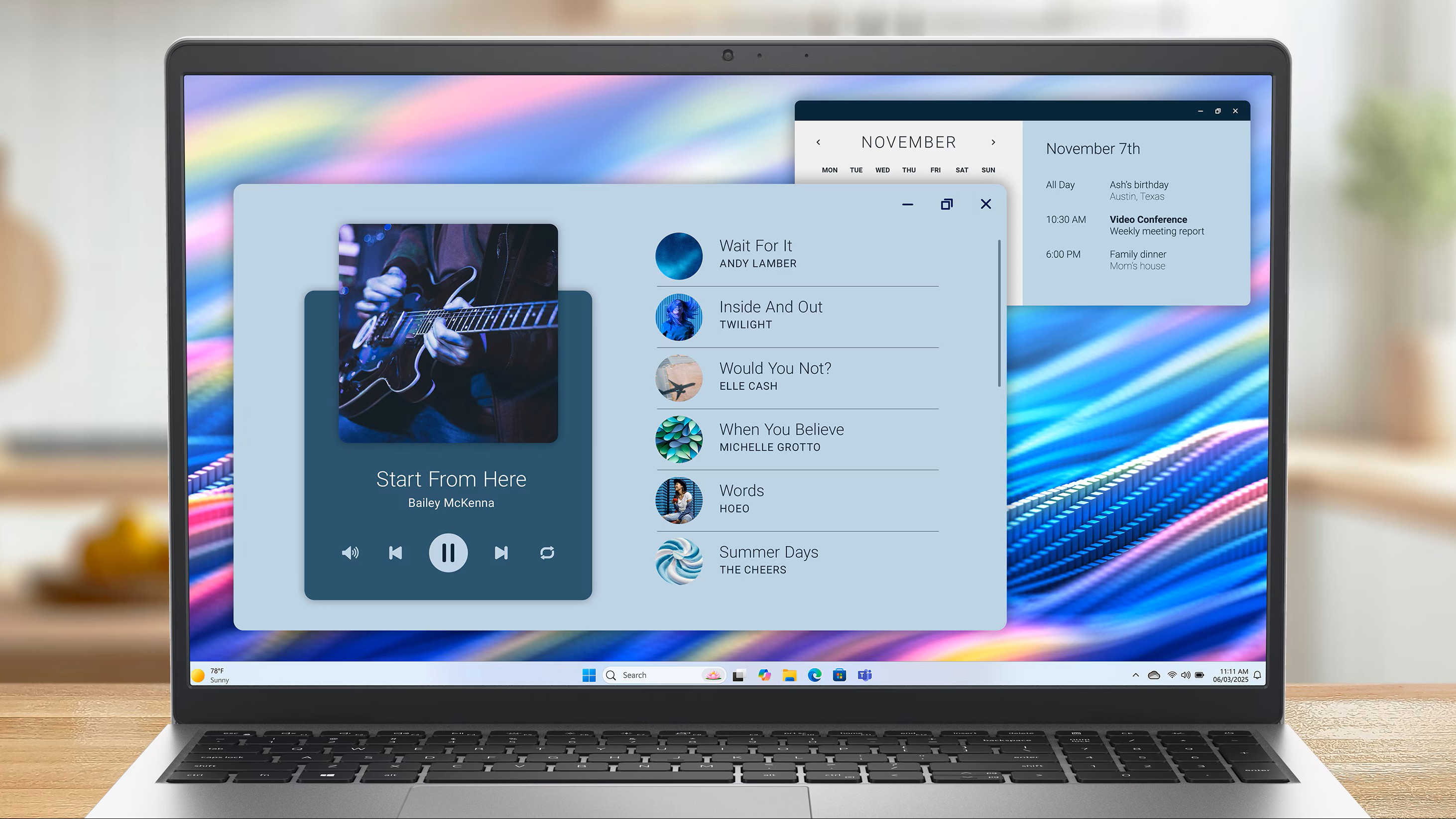
© Dell


© Getty Images | Bloomberg
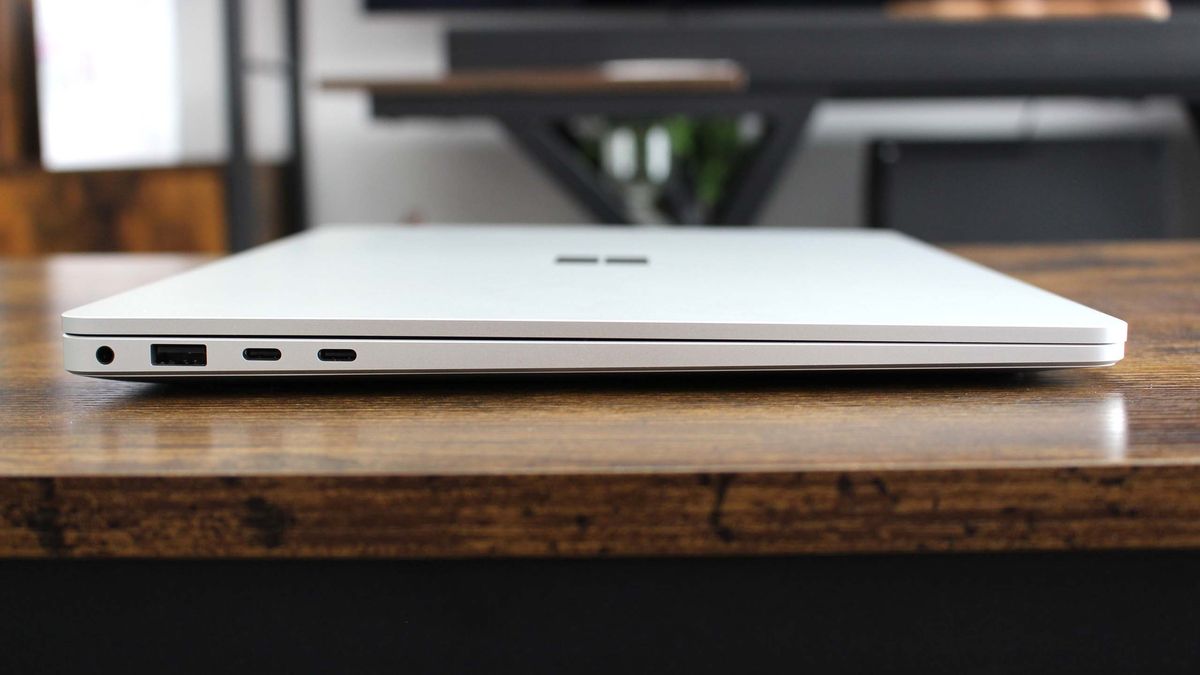
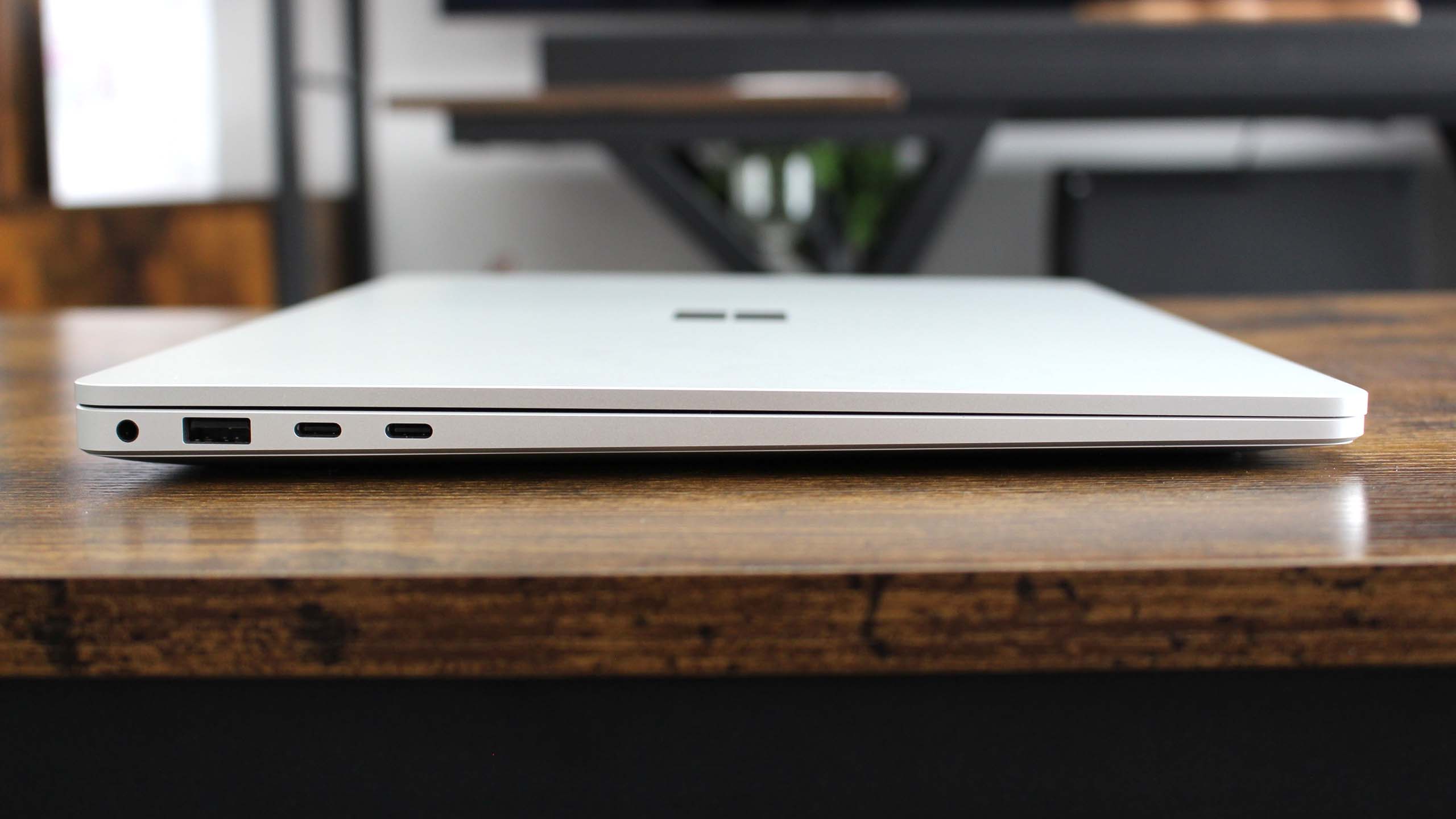
© Windows Central
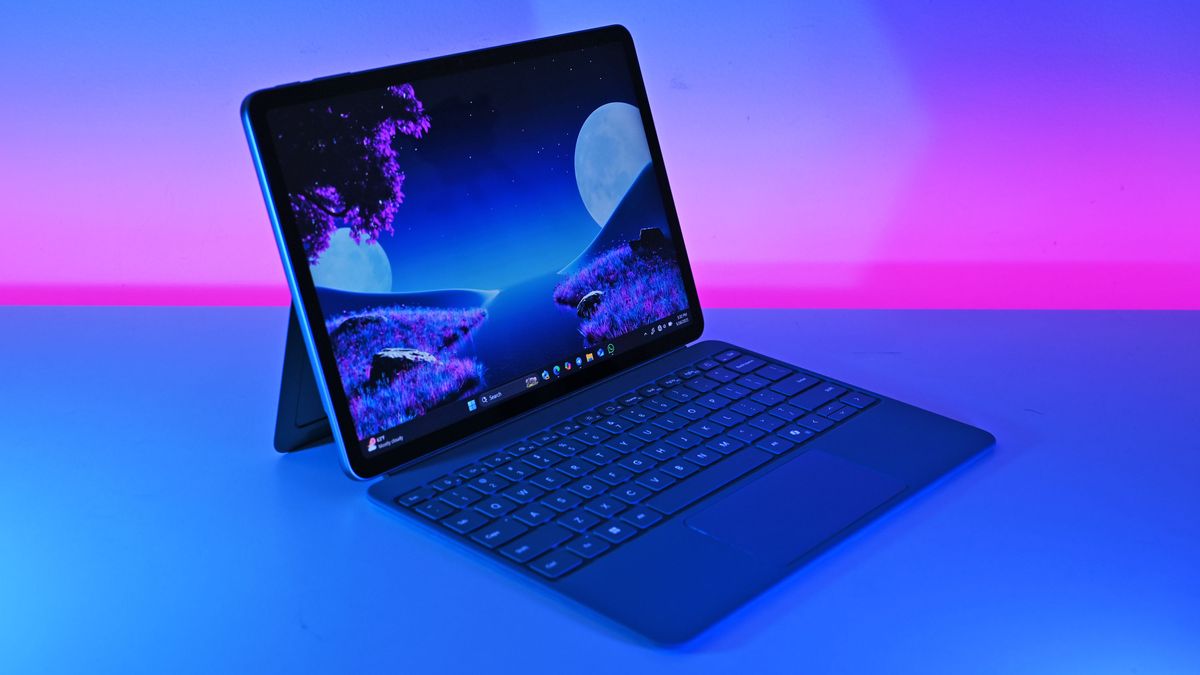
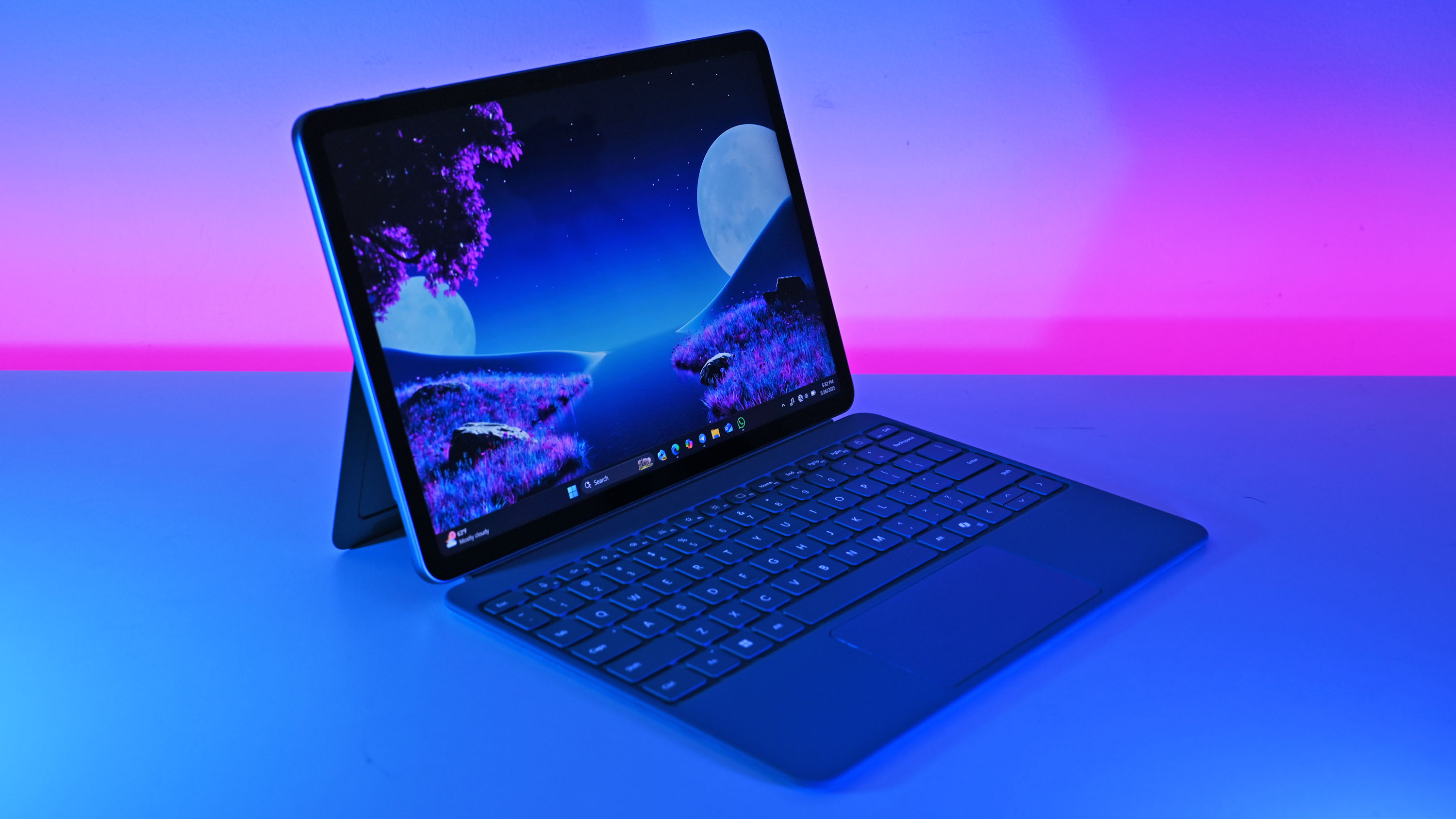
© Future | Daniel Rubino
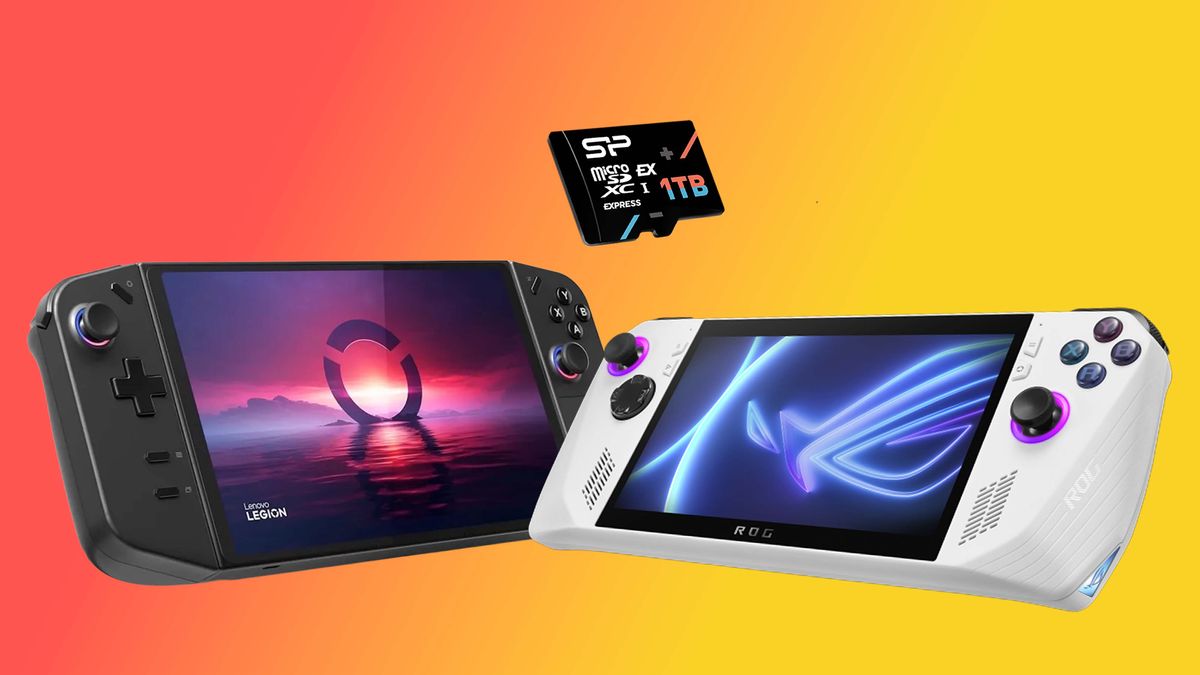
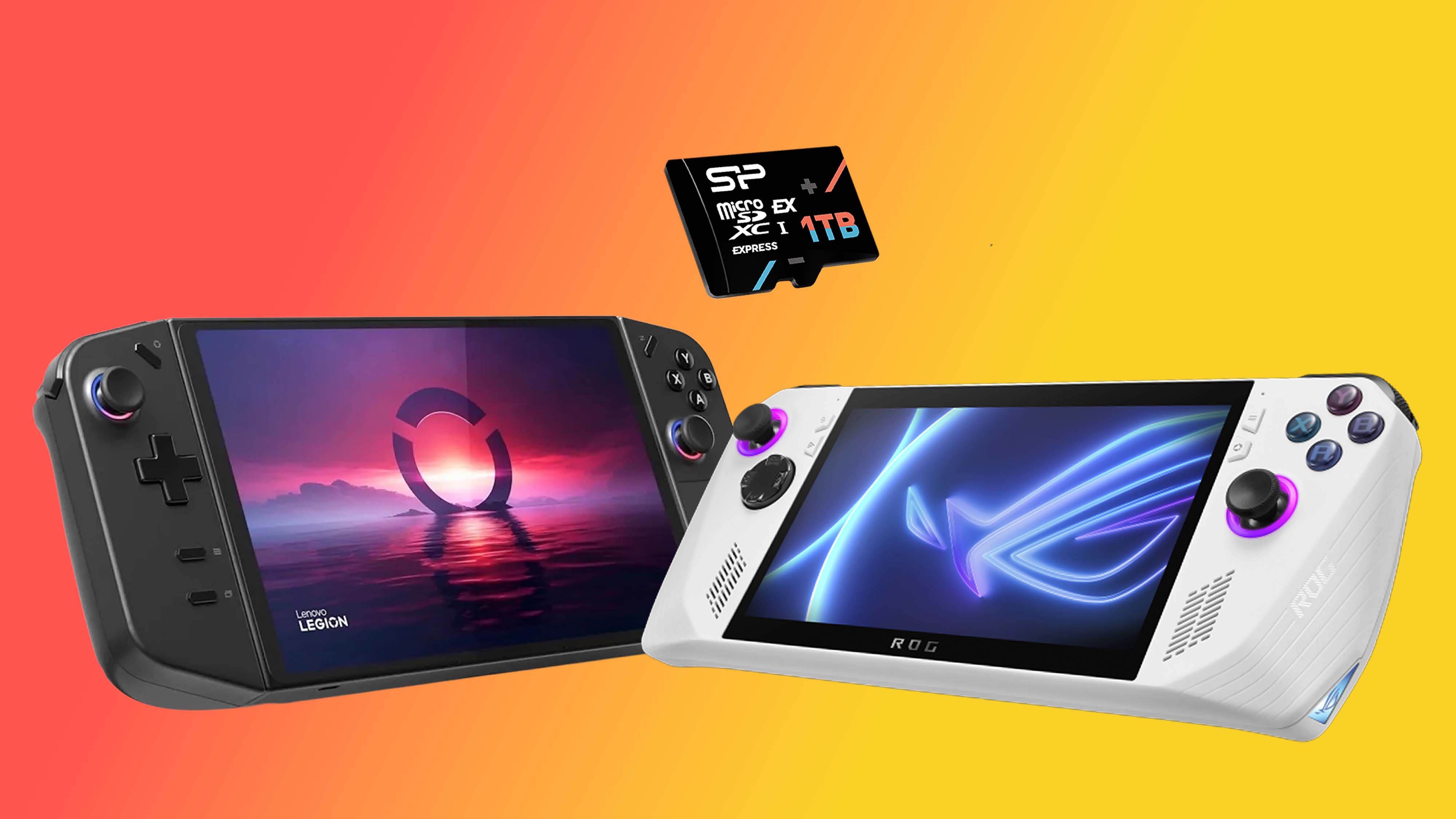
© Windows Central / Lenovo / ASUS ROG / Silicon Power

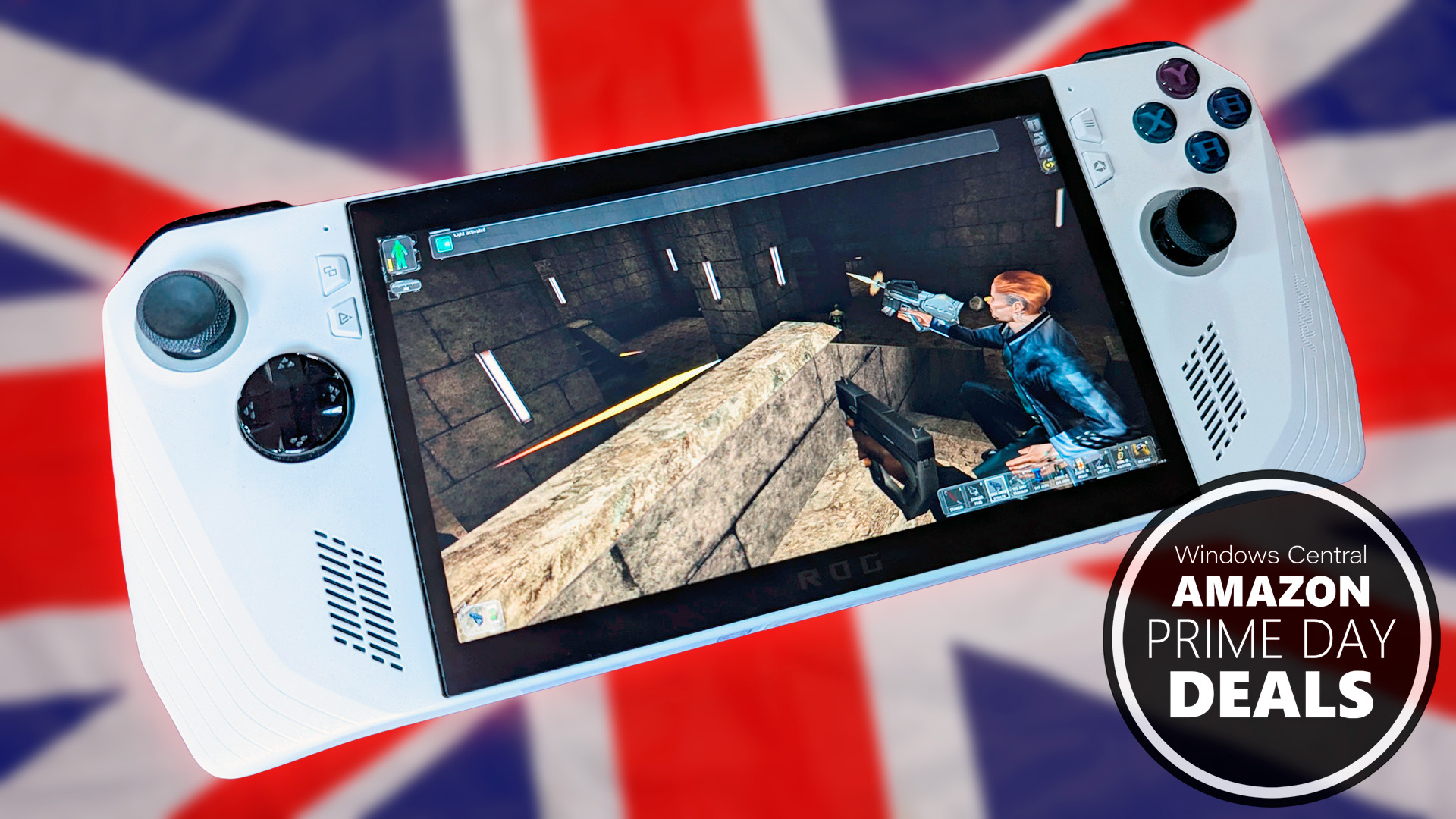
© Getty Images | Windows Central


© Windows Central